

Bulgaria Travel Guide
Last Updated: August 26, 2024
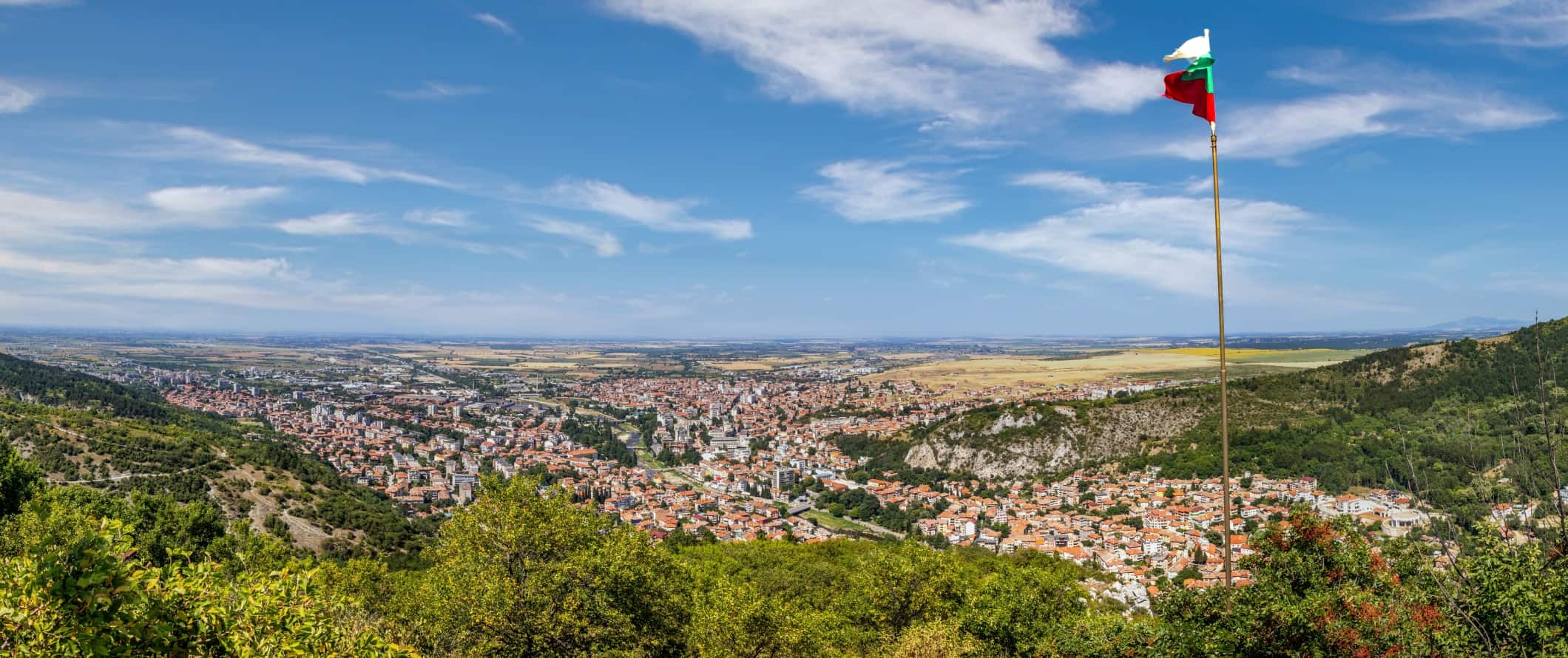
Often overlooked by travelers, Bulgaria is actually one of my favorite countries in Europe .
Because it’s under the radar, here you’ll find few crowds and plenty of affordable activities. I arrived with few expectations and was blown away by the country’s affordability, incredible history, mountainous landscapes, Black Sea beaches, and wild nightlife.
Bulgaria’s long history is evident everywhere, from ancient Neolithic settlements to mysterious Thracian tombs to fortresses left behind by powerful tsars. Even some of the smallest, most nondescript churches have elaborate religious artwork inside, including paintings of saints and vivid murals.
And, if you’re a nature lover, there are several mountain ranges throughout the country offering all kinds of stunning hikes.
In short, Bulgaria is amazing and I can’t speak its praises enough. Don’t speed through the place. There’s a lot to see and do here.
This travel guide to Bulgaria can help you plan your trip, save money, and make the most of your time here.
Table of Contents
- Things to See and Do
- How to Stay Safe
- Where to Stay
- Typical Costs
- Suggested Budget
- Money-Saving Tips
- How to Get Around
- Best Places to Book Your Trip
- Related Blogs on Bulgaria
Click Here for City Guides
Top 5 things to see and do in bulgaria.
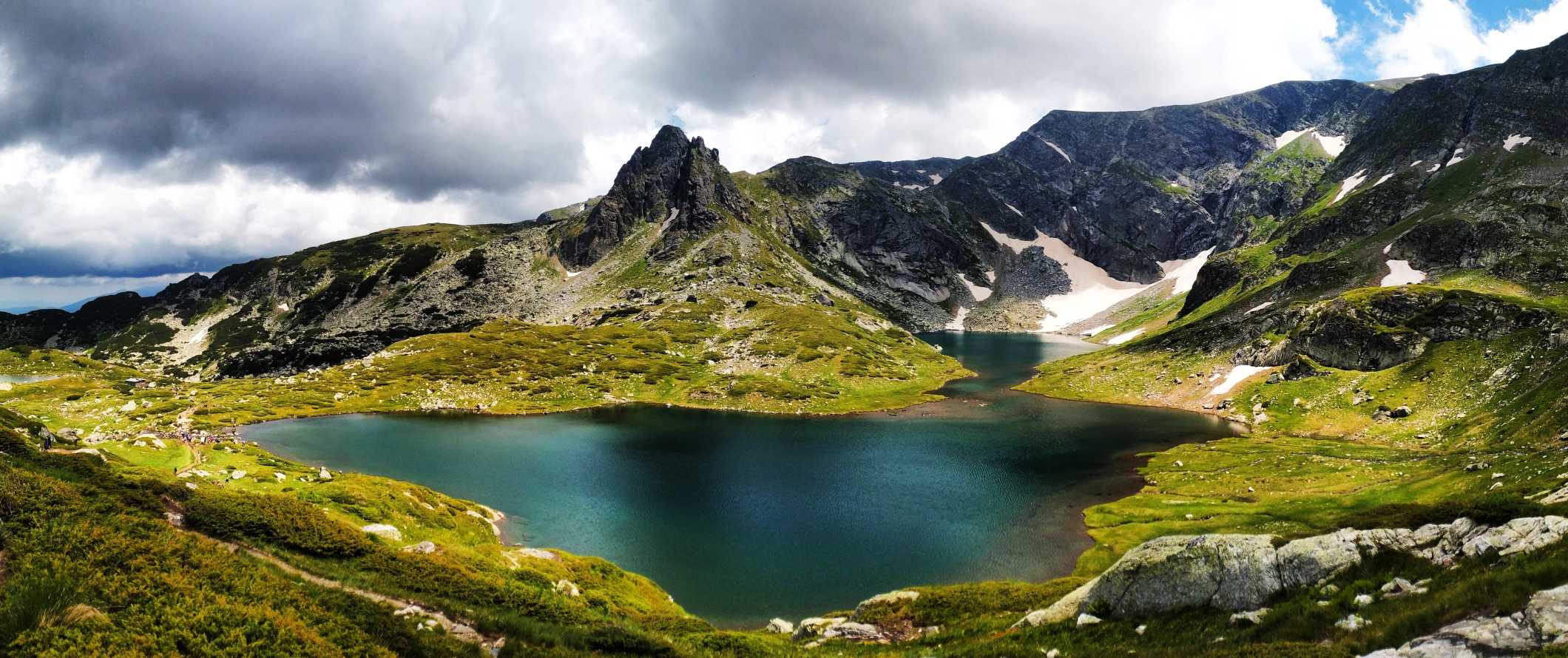
1. Explore Sofia
Sofia is Bulgaria’s dynamic capital city full of museums, Eastern Orthodox churches, communist architecture, and trendy galleries, restaurants, and clubs. The city has thousands of years’ worth of history and dates to the 8th century BCE when it was inhabited by the Serdi tribe. One of the oldest buildings is a brick rotunda that was built in the 4th century by the Romans. It was originally used as a bath but later became a church – and it’s survived almost completely intact. Don’t miss the Alexander Nevski Cathedral, built in the 1880s in the Neo-Byzantine style. It’s massive and has enough room for 10,000 people inside (you can even explore the crypt which is full of unique religious icons). Museums like the National Art Gallery, the National Historical Museum, and the National Institute of Archeology are all worth a visit and feature unique cultural and historical exhibits.
2. Relax in Varna
Varna is a major tourist destination during the summer when its beaches fill up with visitors. Like most of Bulgaria, the area has a rich history. Archeological remains of early settlements have been uncovered at over 30 sites, the oldest of which dates back to the Stone Age. Modern Varna was established in the 6th and 7th centuries when the Slavic people gained power in the Balkans, and the city emerged as an important hub for trade due to its prominent location on the Black Sea. Now it’s known as one of Bulgaria’s most popular seaside resort towns thanks to its beautiful beaches. I had a lot of fun wandering the streets, visiting the Roman Baths, walking through the big central park, and relaxing by the beach. Make sure to check out Aladzha Monastery, which is one of the oldest in Bulgaria (it dates back to the 4th century) and offers stunning views of the city.
3. Visit Plovdiv
Plovdiv is the second-largest city in Bulgaria and is the oldest continuously inhabited city in Europe (archeologists have discovered evidence of settlements dating back to the Neolithic period in 6,000 BCE). Over the years, Plovdiv has been ruled by Greeks, Romans, Celts, Huns, Slavs, Bulgars, Thracians, and Ottomans. You can explore ruins spanning the centuries on a walk-through Old Town with cobblestone streets and architecture from the Middle Ages and the Bulgarian Revival. The city is the cultural hub of Bulgaria and was named the European Capital of Culture and is part of the UNESCO Global Network of Learning Cities. Be sure to visit the Roman Amphitheater, see the Archaeological Museum, and relax under the leafy trees in the Tsar Simeon Central Garden.
4. Go to Veliko Tarnovo
Once the capital of the Bulgarian Empire, Veliko Tarnovo is now a charming university town. Much of the city is perched on the cliffs with white houses and iconic red roofs spanning the hillsides. For excellent photo opportunities visit the Sky Walk which overlooks the city and the river winding through the cliffs. Not much happens here, but I loved the cobblestone streets, the historic castle ruins, the little cafes, and the nearby mountain hikes. Like any university town, there are some eclectic spots to grab a drink like the Hipster Art Bar which has a fun atmosphere and is a great place to meet people.
5. Explore the Rila Mountains
The Rila Mountains are the highest mountain range in the Balkans, with Mount Musala towering over 3,000 meters (10,000 feet). Most of the mountain is protected within Rila National Park and the rest falls within the Rila Monastery Nature preserve, so it’s a hotspot for biodiversity and nature enthusiasts. You can trek to the top on a day hike or take on some of the less challenging hikes in the mountains. During the colder months, the Rila Mountains become packed with skiers, and if you want to treat yourself there are some luxurious spas around the area. Other highlights include the Seven Lakes route, Skakavitsa Waterfall, and the Rila Monastery. The monastery is the largest in Bulgaria and was established in the 10th century by Saint John of Rila. It’s also a UNESCO World Heritage Site.
Other Things to See and Do in Bulgaria
1. check out the museum of socialist art.
This museum in Sofia showcases art from when the country was under Communist rule (1944-1989). A large outdoor sculpture park contains everything from a giant statue of Lenin that once stood in the center of the city to the red star that topped the socialist party headquarters. Inside you’ll find all kinds of propaganda, documentary videos, photos, and more. Admission is 6 BGN.
2. Hike the Balkan Mountains
This mountain chain is at the center of Bulgaria. It’s part of the epic European Long Distance Route (E3) following the chain’s main ridge to the Portuguese seaside, spanning a distance of 6,950 kilometers (4,320 miles). For shorter day hikes, find a base town like Apriltsi and trek from there. The Mount Botev summit and the hike to Vodnite Dupki are two popular hikes.
3. Hit the beaches on the Black Sea
This 402-kilometer (250-mile) stretch of Bulgarian coast lies along the Black Sea. About one-third of this coastline is covered in pristine, sandy beaches. Avoid Sunny Beach (it’s tacky and crowded) and check out some of the quieter beaches instead, like Pomorie Beach or Sinemorets Veleka Beach.
4. Unwind in Balchik
Balchik is a small coastal town on the Black Sea. The area used to serve as the summer residence for Queen Marie of Romania (1875-1938). You can tour her Balchik Palace on the seaside promenade and admire the interesting blend of Gothic and Islamic architecture. There are not very many rooms, but they all contain original furnishings and paintings by Queen Marie herself. There’s also a botanical garden with over 600 species of plants. Admission is 15 BGN.
5 Go skiing
Bansko, Borovets, and Pamporovo are the three biggest resort towns in Bulgaria. Most people prefer Bansko because its resort has the longest ski runs and it’s doable as a day trip from Sofia. There are several hotels and budget accommodations within Bansko (although Bansko isn’t the prettiest of towns). A one-day ski pass is 90 BGN in Bansko and 85 BGN in Borovets and Pamporovo.
6. Stop and smell the roses in Kazanlak
Bulgaria is one of the biggest producers of rose oil in the world and the town of Kazanlak has hosted the Festival of Roses since 1903. During the first weekend of June, the local community organizes this international event that attracts thousands of tourists. There are rose-picking rituals, events to learn about the rose distillation process, a street procession, acapella choirs, folklore concerts, art shows, exhibitions, and even wine-tasting. Best of all, most of the events are free!
7. Visit the Varna Archaeological Museum
The Varna Archaeological Museum is home to the Varna Necropolis, a prehistoric archaeological site that contains the oldest processed gold in the world (it’s 7,000 years old). The gold was extracted from 62 graves (it was custom to bury people with gifts at that time). On display, you’ll also find intricate jewelry and other artifacts, as well as oddities like Roman surgical tools and ancient Hellenistic headstones. Admission is 10 BGN.
8. Explore Stara Zagora
Stara Zagora is a smaller city located in the south of Bulgaria, famous for its annual linden-tree bloom (the whole city smells incredibly floral — like a combination of honeysuckle and jasmine). For me, the main attraction is Stara Zagora’s historical significance. Other than once being an important crossroad for the Romans, Ottomans, and Thracians, Stara Zagora also contains some amazing prehistoric relics, including ancient burial mounds dating back 8,000 years. The Neolithic Dwellings Museum sits on one of these prehistoric mounds, along with the remains of a home. It’s 5 BGN to visit and super informative!
9. Tour the Bachkovo Monastery
Just outside of Plovdiv is the Bachkovo Monastery, dating to 1083 (although most of it was built from the 17th century). The main attraction in the monastery is the Church of Sveta Bogoroditsa, which has an interior completely covered in colorful frescoes painted by Zahari Zograf in 1850. The refectory (dining hall) is also full of murals displaying the building’s history. Pilgrims often come to the church to pray in front of the Madonna, which is encased in gold and silver. It’s free to visit the monastery, but the onsite museum costs 2 BGN and the refectory is 6 BGN.
10. Visit the Etâr Ethnographic Open-Air Museum
The Etâr 19th-century ethno-village in Northern Bulgaria is a recreated Bulgarian town lined with cobblestone streets and dozens of traditional shops and workshops devoted to cobblers, furriers (someone who works with furs), glass workers, jewelers, leatherworkers, potters, bakers, and more. Costumed performers move between buildings, making it feel like you stepped back in time (or at least onto a movie set). You can poke around recreated traditional homes, and some of the workshops are still powered by running water. It’s a bit cheesy, but you can pick up neat handmade souvenirs here. Admission is 5 BGN.
11. Hike at Emen Canyon
If you’re visiting Veliko Târnovo, head west to Emen Canyon. Carved out by the Negovanka River between tall limestone cliffs, the canyon is home to deep creeks (perfect for swimming) and picturesque waterfalls. A two-hour hike on the Negovanka Ecotrail takes you along 90-meter-high (295-foot) bluffs, leading to viewpoints over the canyon and a 10-meter-tall (32-foot) waterfall. It’s a beautiful region to explore on foot!
For more information on specific cities in Bulgaria, check out these guides:
- Plovdiv Travel Guide
- Veliko Tarnovo Travel Guide
- Varna Travel Guide
- Sofia Travel Guide
How to Stay Safe in Bulgaria
Bulgaria is a very safe country to visit. Violent crime against visitors is very rare. Scams and petty crime like pick-pocketing are the most common danger you’ll face when you’re traveling the country, but even those are rare.
That said, it’s always a good idea to keep your valuables secure and out of sight when out and about.
Solo female travelers should generally feel safe here, however, the standard precautions apply (never leave your drink unattended at the bar, never walk home alone intoxicated, etc.).
When taking taxis, always make sure the meter is on. A common scam is for taxi drivers to tell you that their meter is broken. Insist that you want a taxi with a working meter or negotiate the cost upfront.
You can read about common travel scams to avoid right here.
If you experience an emergency, dial 112 for assistance.
The most important piece of advice I can offer is to purchase good travel insurance. Travel insurance will protect you against illness, injury, theft, and cancellations. It’s comprehensive protection in case anything goes wrong. I never go on a trip without it as I’ve had to use it many times in the past.
Where to Stay in Bulgaria
Bulgaria has lots of fun, affordable hostels around the country. Here are my favorite and suggested places to stay:
- Nomado Hostel (Varna)
- Hostel Mostel (Sofia)
- Hostel 123 (Sofia)
- Hostel Mostel (Veliko Tarnovo)
- Hostel Old Plovdiv (Plovdiv)
- Yo-Ho-Hostel (Varna)
Bulgaria Travel Costs
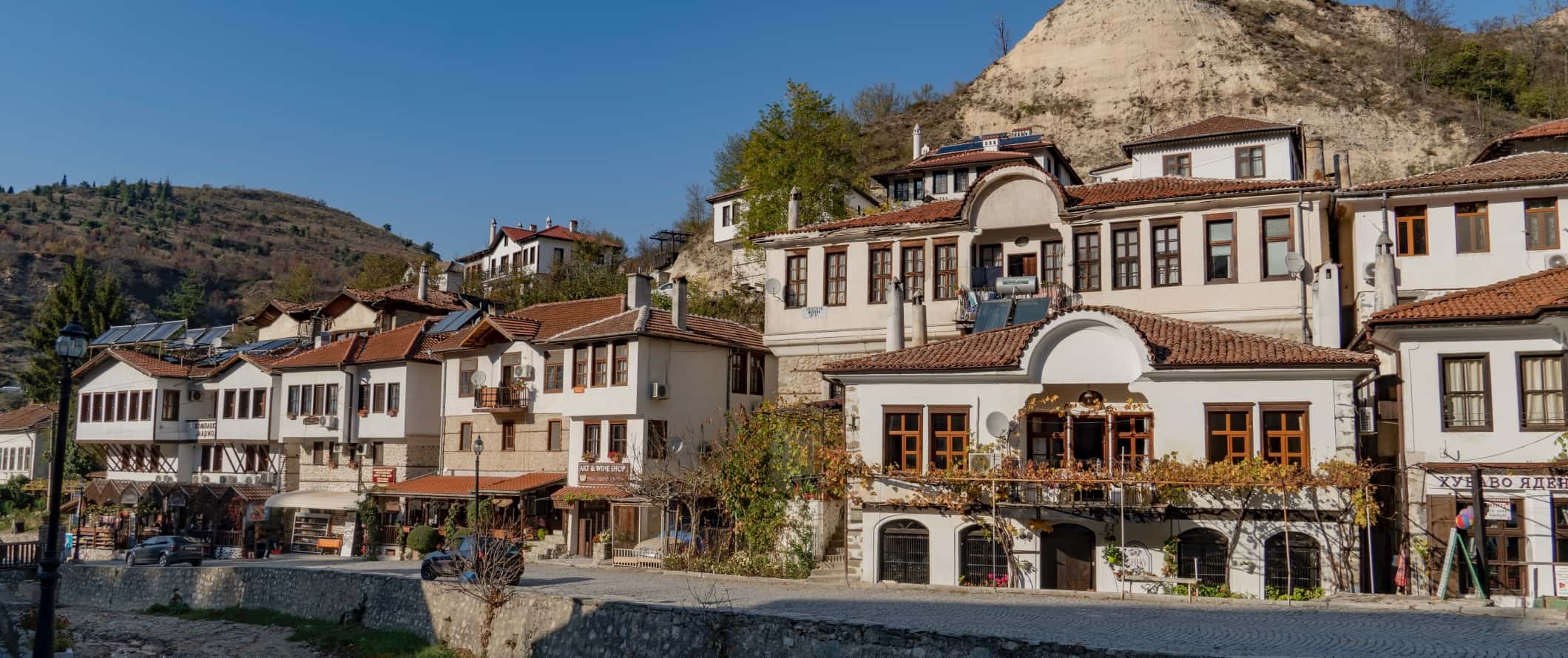
Accommodation
- Hostel Dorms – 15-25 BGN per night
- Hostel private rooms – 30-60 BGN per night
- Budget hotels – 50-100 BGN per night
- Airbnb private rooms – 20-55 BGN per night
- Airbnb apartments – 60-110 BGN
- Campsite – 5-20 BGN per night
- Street food – 1.50-6 BGN
- Sit-down restaurants – 12-30 BGN
- Casual take-out places – 10 BGN
- Fast food (think McDonald’s) – 12 BGN
- Beer – 4 BGN
- Cappuccino/latte- 3.50 BGN
- Bottled water – 1.50 BGN
- Groceries for a week – 45-65 BGN
Bulgaria Suggested Budgets
Backpacker – 55 bgn per day.
If you’re backpacking Bulgaria, this budget covers a hostel dorm, cooking most of your meals, limiting your drinking, taking public transportation to get around, and sticking to mostly free activities like hiking and going to the beaches. If you plan on drinking, add 5-10 BGN to your daily budget.
Midrange – 135 BGN Per Day
On a mid-range budget, you can stay in a private Airbnb or hostel room. You’ll be able to eat out for most meals at cheap fast-food joints, have a couple of drinks, take the occasional taxi to get around, and do more activities and tours like visiting museums or going skiing.
Upscale – 200 BGN Per Day
On a “luxury” budget, you can stay in a hotel, eat out for all your meals, drink more, rent a car or take more taxis, and do whatever tours and activities you want. This is just the ground floor for luxury though. The sky is the limit!
Bulgaria Travel Guide: Money-Saving Tips
Bulgaria is one of the most affordable destinations in Europe. You can do a lot on a tight budget here as most of the country’s attractions (such as museums and historical sites) are cheap. You’ll find it hard to break the bank here unless you’re spending your time on the Black Sea coast during peak season and intentionally trying to splurge. Here are some ways to save money in Bulgaria:
Bring a water bottle – The tap water here is safe to drink so bring a reusable water bottle to save money and reduce your plastic use. LifeStraw is my go-to brand as their bottles have built-in filters to ensure your water is always clean and safe.
Avoid Sunny Beach – I don’t understand the appeal of a beach that’s overpriced and crowded with tourists. Hit up one of the other coastal beaches instead.
Stay at Hostel Mostel – Staying at this hostel chain can lower your costs because they include free breakfast and free dinner. They have locations in Sofia and Veliko Tarnovo .
Eat at the bakeries – Bakeries in Bulgaria have an inexpensive range of sweet and savory pastries that can fill you up. Two of my favorite snacks there are banica and krenvirshka.
Stay with a local – If you plan ahead, you can usually find Couchsurfing hosts all throughout the country. This way, you not only have a free place to stay but you’ll connect with a local host that can share their insider tips and advice.
Take free walking tours – Walking tours are a great way to get familiar with a city and its culture. Sofia, Veliko Tarnovo, and Plovdiv all have free walking tours. Just be sure to tip your tour guide at the end.
Enjoy free events – Many of Bulgaria’s festivals are free to attend, and during the summer many city parks have free scheduled events and concerts. Ask your hostel or host what’s going on during your visit.
How to Get Around in Bulgaria
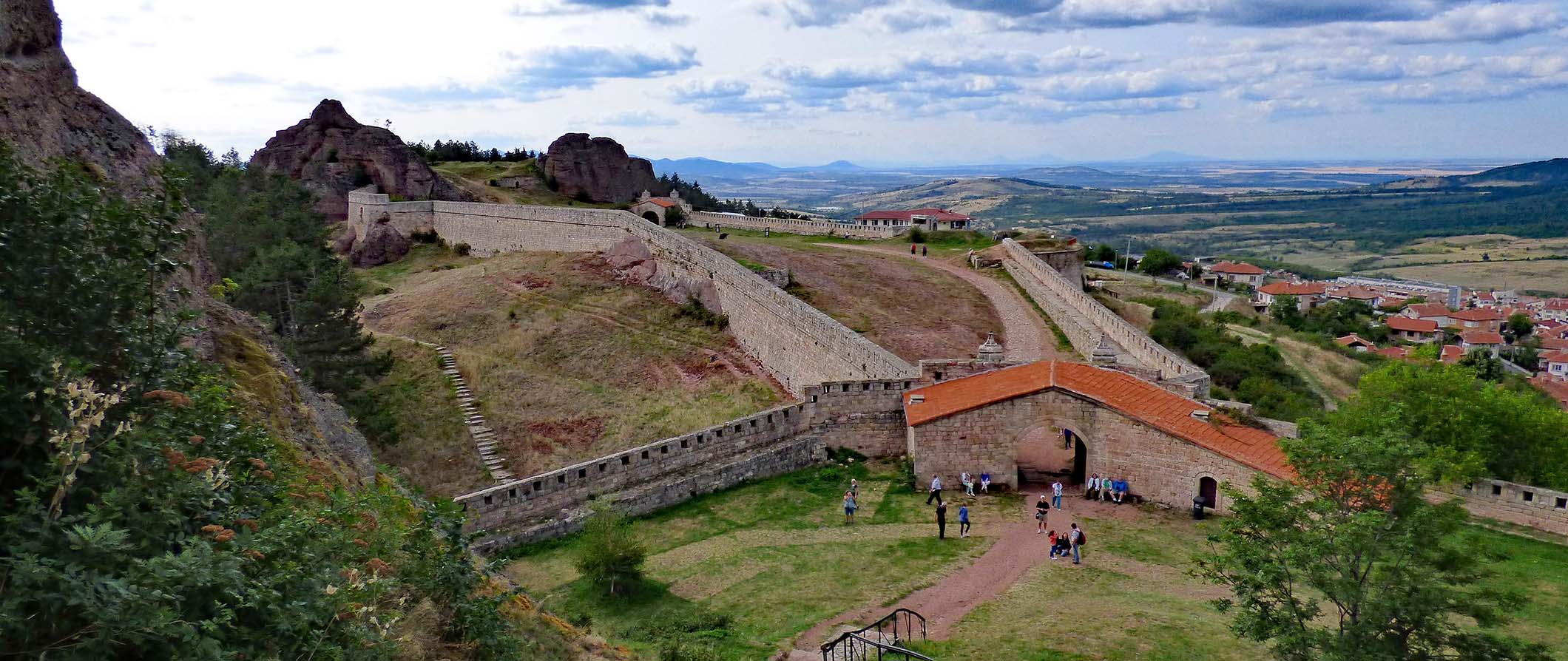
Public transportation – Public transportation in Bulgaria is very affordable. Sofia has a subway with two lines connecting the city center and the airport, as well as the central bus and train stations. Tickets are 1.60 BGN each.
In other cities, public buses are the most common mode of public transportation. Fares are usually between 1-2 BGN. Trolleybuses and trams are also common and generally cost the same.
Some cities, like Sofia, have a daily transportation pass for 4 BGN per day. A three-day pass is 10 BGN.
Taxi – Taxis are readily available everywhere, with rates starting at 2 BGN, costing an additional 1-2 BGN per kilometer. Always make sure your driver uses the meter so you avoid getting ripped off. Ridesharing like Uber is not available here.
Bus – Bulgaria has lots of private and public minibusses and coaches to get you between the smaller towns and cities. A bus from Sofia to Varna costs around 33 BGN and takes seven hours, while Varna to Plovdiv is 27 BGN and also takes seven hours. A three-hour journey from Sofia to Veliko Tarnovo shouldn’t cost more than 30 BGN.
Train – Train travel in Bulgaria is often cheaper than taking the bus, but it’s a lot slower. For example, the same Sofia to Veliko Tarnovo journey costs just 20 BGN but takes a little over four and a half hours by train (instead of three by bus). You can use the Bulgarian State Railways website (bdz.bg) to plan your trip.
Flying – There are limited domestic routes around Bulgaria, making this an inconvenient option for most travelers. That said, flying is affordable here. A one-way trip between Sofia and Varna costs about 160 BGN, while a one-way trip between Sofia and Burgas is about 106 BGN. Unless you’re pressed for time, though, I’d stick to the bus.
Car rental – Car rentals are super affordable here, costing as little as 25 BGN per day. If you have someone to share the ride with, this could be an affordable and flexible way to get around the country. Drivers need to be 21 years old and have an IDP (International Driving Permit).
To find the best car rental prices, use Discover Cars .
Hitchhiking – Hitchhiking in Bulgaria is common among travelers and locals alike. HitchWiki is the best website for additional hitchhiking tips and info.
When to Go to Bulgaria
If you want hot weather and lots of time on the Black Sea coast, summer (June-August) is the best time to visit. Temperatures average 29-32°C (84-90°F) and the water is ideal for swimming. These temperatures are fairly consistent across the country, although the mountain regions can be cooler.
Spring and fall weather can change from day to day. Temperatures range between 5-21°C (41-70°F) in the spring and the weather can be quite foggy and cloudy, with not a lot of sunshine. But if you want fewer crowds and lower prices, this is the best time to come.
The fall months (September-October) are best for hiking as the autumn foliage is starting to show. Fall temperatures range from 2-21°C (36-71°F).
Winter can be frigid, with temperatures dropping as low as -5°C (23°F). The snow-capped mountains are beautiful during this time, and many people come here to hit the slopes. If you’re not coming here to ski or do winter sports, however, I’d skip a winter visit.
Bulgaria Travel Guide: The Best Booking Resources
These are my favorite companies to use when I travel. They consistently have the best deals, offer world-class customer service and great value, and overall, are better than their competitors. They are the companies I use the most and are always the starting point in my search for travel deals.
- Skyscanner – Skyscanner is my favorite flight search engine. They search small websites and budget airlines that larger search sites tend to miss. They are hands down the number one place to start.
- Hostelworld – This is the best hostel accommodation site out there with the largest inventory, best search interface, and widest availability.
- Booking.com – The best all around booking site that constantly provides the cheapest and lowest rates. They have the widest selection of budget accommodation. In all my tests, they’ve always had the cheapest rates out of all the booking websites.
- HostelPass – This new card gives you up to 20% off hostels throughout Europe. It’s a great way to save money. They’re constantly adding new hostels too. I’ve always wanted something like this and glad it finallt exists.
- Get Your Guide – Get Your Guide is a huge online marketplace for tours and excursions. They have tons of tour options available in cities all around the world, including everything from cooking classes, walking tours, street art lessons, and more!
- The Man in Seat 61 – This website is the ultimate guide to train travel anywhere in the world. They have the most comprehensive information on routes, times, prices, and train conditions. If you are planning a long train journey or some epic train trip, consult this site.
- Rome2Rio – This website allows you to see how to get from point A to point B the best and cheapest way possible. It will give you all the bus, train, plane, or boat routes that can get you there as well as how much they cost.
- FlixBus – Flixbus has routes between 20 European countries with prices starting as low 5 EUR! Their buses include WiFi, electrical outlets, a free checked bag.
- SafetyWing – Safety Wing offers convenient and affordable plans tailored to digital nomads and long-term travelers. They have cheap monthly plans, great customer service, and an easy-to-use claims process that makes it perfect for those on the road.
- LifeStraw – My go-to company for reusable water bottles with built-in filters so you can ensure your drinking water is always clean and safe.
- Unbound Merino – They make lightweight, durable, easy-to-clean travel clothing.
- Top Travel Credit Cards – Points are the best way to cut down travel expenses. Here’s my favorite point earning credit cards so you can get free travel!
GO DEEPER: Nomadic Matt’s In-Depth Budget Guide to Europe!

There’s a lot of free information online but do you want to spend days searching for information? Prob not! That’s why guidebooks exist.
While I have a lot of free tips on Europe, I also wrote an entire book that goes into great detail on everything you need to plan a trip here on a budget! You’ll get suggested itineraries, budgets, even more ways to save money, my favorite restaurants, prices, practical information (i.e. phone numbers, websites, prices, safety advice, etc etc), and cultural tips.
I’ll give the insider view of Europe that I got from years of traveling and living here! The downloadable guide can be used on your Kindle, iPad, phone, or computer so you can have it with you when you go. Click here to learn more about my book on Europe!
Bulgaria Travel Guide: Related Articles
Want more tips for your trip? Check out all the articles I’ve written on Europe travel and continue planning your trip:
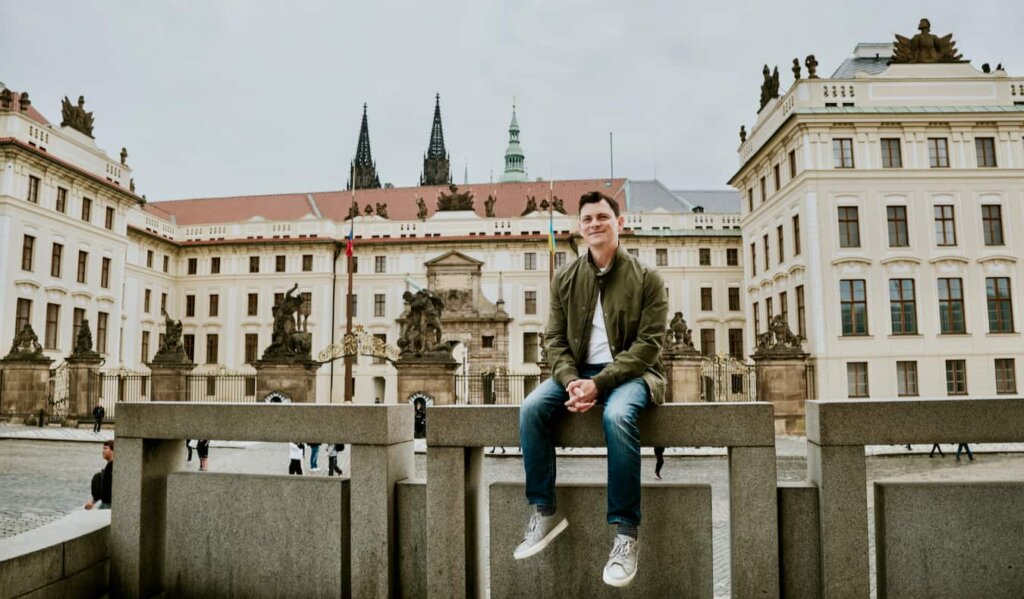
My Step-By-Step Guide to Backpacking Europe

6 Cheap Ways to Travel Across Europe
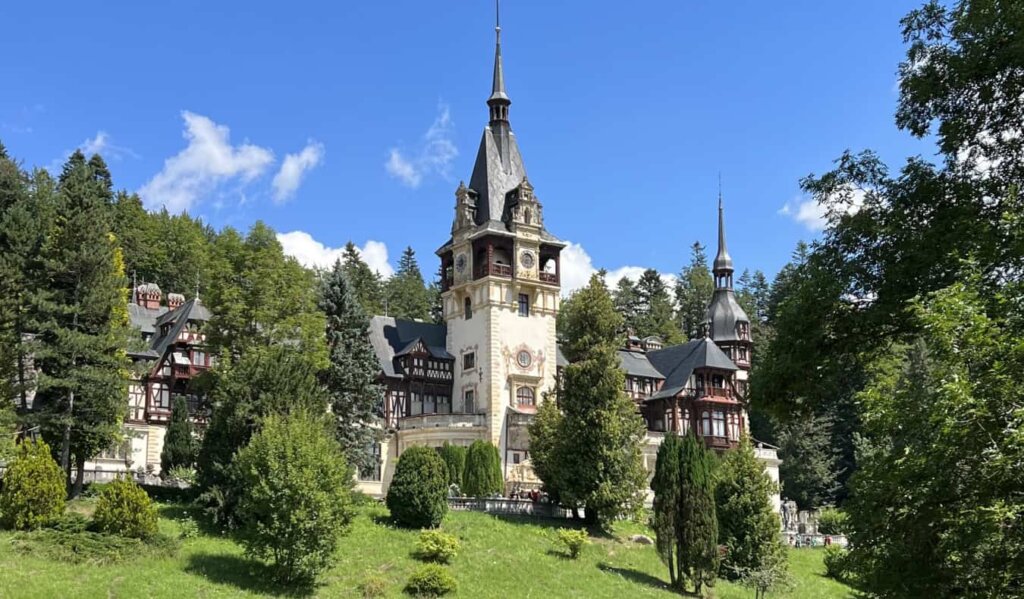
The Cost of Traveling Far Eastern Europe
Get your free travel starter kit.
Enter your email and get planning cheatsheets including a step by step checklist, packing list, tips cheat sheet, and more so you can plan like a pro!

- Where To Stay
- Transportation
- Booking Resources
- Related Blogs
A first-time guide to Bulgaria

Jul 2, 2024 • 6 min read
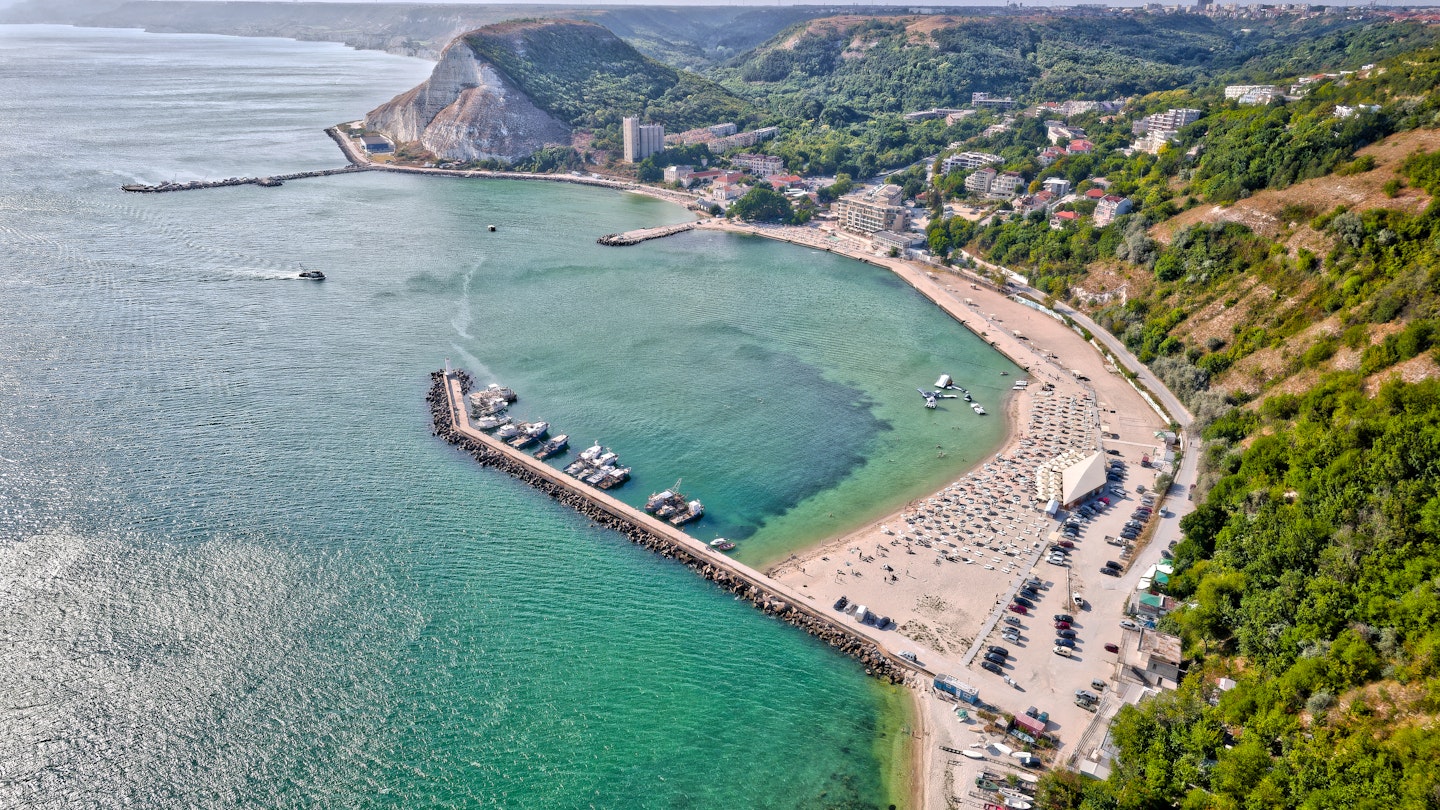
Visit in summer to unwind by the Black Sea in a beachside town like Kavarna (pictured), Burgas or Varna © Cemal Mehmedov / 500px / Getty Images
Often an underrated destination, Bulgaria is one of the most affordable places to visit in Europe with stunning views and endless adventure opportunities.
Just a flight, train or bus away from most European capitals, Bulgaria truly has so much to offer. Proud of their rich heritage and long and challenging history, Bulgarians may appear grumpy at first glance, but don’t be fooled. The genuine hospitality and diversity of experiences is what makes the country worth a visit.
Whether you’re going for a long weekend or you want to spend a week or two hiking, sightseeing and enjoying the seaside, it’s a no-brainer: Bulgaria offers great value for money and will surprise you with its diverse array of experience

When should I go to Bulgaria?
With its four distinct seasons, each one offering something different, Bulgaria is a year-round playground. The winter months from December to mid-April are ideal for ski or snowboarding enthusiasts in one of the winter resorts – Bansko is a famous ski destination, Borovets offers a local experience just an hour and a half from Sofia and Pamporovo is known for its family-friendly slopes and hotels.
Spring is usually quieter, being a shoulder season, and it’s perfect for peaceful sightseeing and backpacking. Summer, though hot with temperatures reaching 40°C (100°F), is great for exploring hidden beaches and water-based activities on the Bulgarian seaside, with July and August being the busiest months.
Autumn, particularly in September and October, offers pleasant weather and fewer crowds, making it a good time for budget travelers to find affordable accommodation. These are also some of the best months for hiking in one of the many Bulgarian mountains.

How much time should I spend in Bulgaria?
For a first-time visit, between a long weekend and a week is enough time to cover the most iconic spots and get a glimpse of the country’s rich culture. Start with a day or two in Sofia to soak in the capital's vibe, then head to the charming town of Plovdiv , one of Europe's oldest cities and only 2 hours from Sofia by car (or just under 2.5 hours by train). Finish your trip with a visit to the seaside towns of Burgas or Varna to enjoy the beautiful coast (a 4- to 6-hour drive from the capital, or an 8-hour train journey).
Is it easy to get in and around Bulgaria?
Bulgaria is well-connected by air with major European countries through three big airports: Sofia, Burgas, and Varna.
By land, you can reach Bulgaria from many major European destinations by Flixbus , or by train – the sleeper train from Istanbul to Sofia is popular with budget travelers.
The train and bus systems in Bulgaria are well-maintained, although finding updated information online, especially in English, can be challenging. The national railway company – BDZ , has an English website. For intercity buses, one of the biggest bus providers – Union Ivkoni , is the best bet for online ticket sales.
Big cities like Sofia, Varna, Burgas, and Plovdiv have good public transport with Google Maps often being a reliable source. Sofia's metro is convenient, and you can pay for a single trip with a bank card, including buses and trams. Public transport in other cities is fairly straightforward, too. I also found friendly locals who gladly helped negotiate the bus system.

Top things to do in Bulgaria
Start your visit to Bulgaria with one of the many free tours in Sofia. Explore street art with Sofia Graffiti Tour , which takes you to the most photogenic places in the city with murals from Arsek & Erase and other local artists. Grab a local bite with a free food tour with Balkan Bites , or explore the history and culture with a walking tour with Free Sofia Tour .
Plovdiv is another absolute must-visit for first-timers in Bulgaria. The charming streets of its Old Town take you on a walk back in time. Grab a coffee or an artisan souvenir in the creative district of Kapana for a perfect local experience. End the day with a panoramic sunset view from one of the hills – like Nebet Tepe.
If you’re feeling adventurous, put on your hiking shoes and head for a day trip to Musala Peak in Rila Mountains, or Vihren Peak in Pirin Mountains – some of the most beautiful hikes in the country. Rila Monastery – a UNESCO World Heritage site – is a visual and architectural masterpiece that attracts many visitors, for a good reason
If you want to get deeper into the country, discover the charm of traditional Bulgarian towns like Koprivshtitsa, Tryavna, or even Veliko Târnovo – the former capital. You can see preserved traditional architecture incorporated into modern life.
And for a truly unique experience, head to the heart of Bulgaria to witness the UFO-like Buzludzha Monument . A former Communist headquarters, this abandoned, but stunning architectural heritage, impresses with its grandiosity. It’s a subject of ongoing revival projects that has met a lot of resistance from local authorities.

My favorite thing to do in Bulgaria
I absolutely love the mountains, and one of my favorite traditions in Bulgaria is July Morning. It started in the 1980s and it involves staying up the night before and catching the sunrise in the morning of 1st of July, usually from the seaside. Kamen Bryag is the original spot but the movement has spread all over Bulgaria.
Living close to the mountains in the town of Bansko, I celebrate July Morning by hiking to Vihren Peak in the Pirin Mountains. We start the hike at 2am and reach the peak around 5am or 6am. You'll find many other July Morning enthusiasts making their way up as well. The atmosphere at the peak when the sun rises above the mountains and clouds is absolutely amazing – and the views are breathtaking.
How much money do I need for Bulgaria?
Bulgaria is still one of the most affordable destinations in Europe, offering great value for your money. While popular tourist spots like beach towns in summer and ski resorts in winter can have higher prices, in general the country is very budget-friendly. The Bulgarian lev trades at a fixed exchange rate with the euro: €1 gets you 1.95 Lev.
- Hostel room: 20-40 lv
- Public transport ticket: 1.60 lv for a single bus ride, or 4 lv day pass
- Coffee: 3-6 lv
- Sandwich: 6-10 lv
- Dinner for two: 50-80 lv
- Beer/pint at the bar: 6-10 lv
- Taxi ride in Sofia: 15-30 lv

Can you pay by card in Bulgaria?
Card payments have become more and more accepted in Bulgaria. In most places, especially in big cities, you can pay by card in almost every store. But the general rule of thumb is to always carry cash with you. Many small stores, restaurants, especially in smaller cities, do not accept card payments. The best bet is to always have at least 50 lv (the equivalent of €25) in cash with you. The euro is not accepted as a payment currency in Bulgaria.
Can I drink tap water in Bulgaria?
Drinking tap water in Bulgaria is absolutely fine, as the country has many natural springs.
What is tipping etiquette in Bulgaria?
The unwritten tipping rule is that you leave 10% of the bill – more if you like the service.
Do people speak English in Bulgaria?
While more and more people in Bulgaria, especially the younger generations, are speaking English, there can still be a language barrier for visitors. It’s a good idea to learn a few basic Bulgarian words to help break the ice and bring a smile to someone's face when you need assistance.
What alphabet does Bulgaria use?
Bulgaria uses the Cyrillic alphabet – which originates from this region. A frequent mistake visitors make is assuming that Bulgaria uses the Russian alphabet. Don’t say that to locals as they are very proud of their linguistic heritage.
Explore related stories
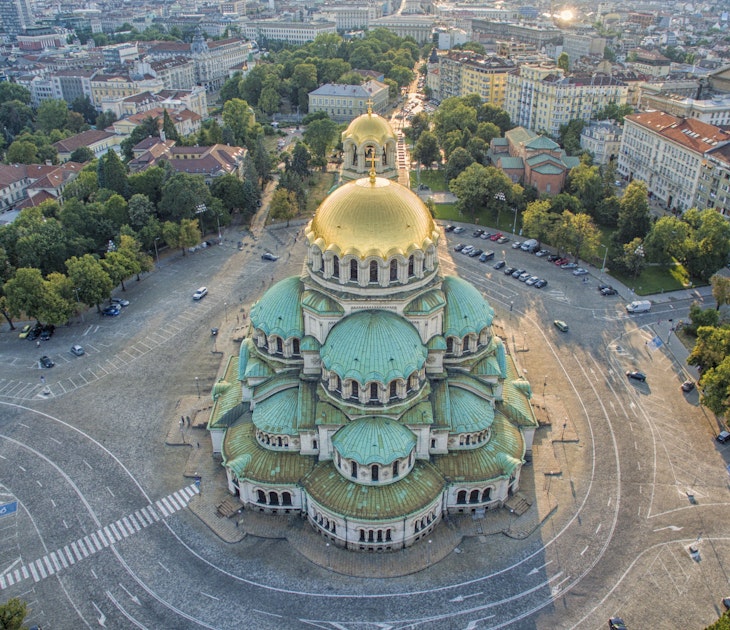
Destination Practicalities
Aug 20, 2024 • 7 min read
Discover Sofia, Bulgaria, a delightfully affordable city with a rich history and contemporary urban charm.

Oct 20, 2023 • 7 min read

Jan 21, 2022 • 6 min read

Jan 30, 2020 • 4 min read

Dec 11, 2019 • 5 min read

Nov 27, 2019 • 7 min read

May 3, 2024 • 5 min read

Mar 22, 2024 • 4 min read

Mar 29, 2023 • 4 min read

Sep 10, 2021 • 5 min read

The Perfect Bulgaria Itinerary: 5 to 10 Days (or More!)
Last Updated on February 14, 2024
by Maggie Turansky
Disclaimer: This article contains affiliate links. That means if you click a link and make a purchase, we may make a small commission. As an Amazon Associate we earn from qualifying purchases. For more information, see our privacy policy.
The Balkan country of Bulgaria has long been overlooked on standard European travel routes, where traditional tourists rarely travel farther east than Hungary or Croatia. However, for those more intrepid visitors keen to see the delights that southeastern Europe has to offer, planning a 5 to 10 days in Bulgaria itinerary is a fantastic idea.
Though relatively small in size, Bulgaria has a lot to offer visitors and really can appeal to almost every personality. Bulgaria boasts cosmopolitan cities and ancient metropolises, rugged mountains and pristine beaches, world-class skiing and incredible wine country — it can seem that wherever your interests may lie, Bulgaria will have it.
Table of Contents
When to Visit Bulgaria
You are likely going to want to know when is the best time of year to visit this European nation. Well, luckily for travellers, Bulgaria has its merits no matter what time of year you choose to visit so it all depends on what you’re after on your trip.
While it is located in southeastern Europe, don’t expect Bulgaria to have the same kind of climate as other southern European countries like Croatia , Portugal, Italy or Spain. Contrary to these countries, Bulgaria experiences a much more continental climate with very cold and snowy winters and hot, muggy summers. With this kind of climate, you can best bet to enjoy all of the seasonal activities that come throughout the year.
Winter in Bulgaria sees high temperatures averaging around freezing throughout most of the country, though it can certainly be colder high in the mountains or warmer in the coastal areas along the Black Sea.
With the winter freezes come a lot of skiing opportunities at some of the most affordable prices in all of Europe. Destinations like Bansko are incredibly popular in the wintertime, however, you can also easily combine a skiing holiday with a cosmopolitan city break without leaving Sofia by visiting Vitosha Mountain.
Summers, on the other hand, can get incredibly hot, with average temperatures soaring to well over 30°C (86°F) and humidity can be quite high, as well. The inland cities in the summer can be sweltering, however, the coast becomes a bustling mecca for sun worshippers and party seekers alike.
The mountains can also be a pleasant escape with ample hiking opportunities and mild temperatures in the high altitude. Summer is also, not surprisingly, when tourist crowds are at their peak, as are accommodation prices.
If you’re sensitive to either the cold or heat and want to avoid tourists as much as possible, then probably the best time to visit Bulgaria would be in the shoulder seasons.
The months ranging from March-May and September-October see some of the mildest temperatures, though you should be prepared for the occasional cold snap or frequent rains (especially in Spring). However, in the shoulder seasons, you are just as likely to have beautiful warm temperatures and sunny skies that steadfastly cling to summer.
No matter which time of year you choose to embark on your trip to Bulgaria, you are sure to be met with a beautiful country eager to welcome your exploration!

Getting To & Around Bulgaria
Now that you’ve figured out which season to travel to Bulgaria, we need to discuss how you plan to get around once you’re there.
First things first, it is likely that you will begin your Bulgaria itinerary by flying into Sofia airport, which has frequent connections from budget airlines like Ryanair and Wizzair to a number of cities throughout Europe. The affordability of reaching Bulgaria has made it an attractive option for travellers looking to explore a lesser-visited corner of Europe.
There are other international airports in the country besides Sofia, however, and you can just as easily begin your trip from any of these. The highest-trafficked airports after the capital include Burgas and Varna on the Black Sea and Plovdiv airport, which serves a couple of flights per week from destinations like Tel Aviv, Belfast, Manchester and Dublin.

If you’re visiting Bulgaria as part of a longer Balkans itinerary you will be happy to know that a few of the country’s major cities are fairly well connected with neighbouring countries. Travellers can easily reach Sofia from Thessaloniki in Greece, Belgrade or Nis, Serbia and also from Skopje , North Macedonia and Istanbul , Turkey, the latter of which will transit through Plovdiv.
You can also reach Sofia by overnight bus or train from Bucharest , Romania. It is also possible to find a direct connection to the northern city of Veliko Tarnovo to Bucharest as well.
Once you’ve arrived in Bulgaria, you need to know how you plan to get from point A to point B. Like elsewhere in the Balkans, if you’re relying on public transport for your Bulgaria trip, then your best option is going to be the bus.
While there is a train network in Bulgaria, it largely hasn’t been updated since the 1960s and can be incredibly slow, uncomfortable, and inefficient. The only time I would generally recommend using the train network in Bulgaria is if you have an affinity for communist-era railways.
In contrast, the bus system is quite comfortable and well-developed and they also tend to be much faster than the trains.
If you are only travelling between major cities, you will find that connections between transport hubs tend to be frequent and the system is easy enough to navigate, even if you have a language barrier. It can be helpful to know what the city you’re travelling to looks like spelt in the Cyrillic alphabet so you know which booth to buy your tickets from.
Most smaller city centres are easily navigable by foot, including cities like Plovdiv and Veliko Tarnovo, however, in Sofia, it might be necessary to use the public transportation system. The metro in Sofia is efficient and user-friendly, with everything written in both Bulgarian and English.
If you need to take a taxi in Bulgaria, make sure to practice the general precautions you would with taxis throughout the world as, unfortunately, Bulgaria is not immune to taxi scams. However, there are a number of taxi apps in various cities where you can call a reliable cab.
If you do hail one off the street, make sure to do some research on reliable taxi companies beforehand and ensure that the meter is running. Taxi rides are incredibly affordable in Bulgaria, especially when compared to some Western European countries.

5 to 10-Day Bulgaria Itinerary
Bulgaria has a lot to offer visitors and, therefore, travellers can easily spend a number of weeks or even months within the country and always find something new to explore. However, if you only can spend 5 days in Bulgaria, then the first five days of this itinerary is outlined to be a complete trip.
If you have a week, the same concept applies if you have 7 days in Bulgaria. And if you’re fortunate enough to have 10 full days to spend in this Balkan nation, then you can enjoy the entirety of the outlined route.
Days 1-3: Sofia
It is likely that you will begin your Bulgaria itinerary in the capital city of Sofia. Though Sofia may not have to best reputation among Balkan cities (when we first planned to visit, we were told to skip it by numerous people), we’ve found that it has a lot to offer visitors with great energy and many interesting things to do.
Though you could easily spend a week or more exploring Sofia , we recommend spending 3 of those days in the capital. Start off with a free walking tour of the city to get your bearings, a great way to get some context to the incredible history you’re going to see in the Bulgarian capital.
There are a number of things to occupy yourself during these three days in Sofia including visiting the top monuments like the ancient city of Serdika and the Alexander Nevsky Cathedral.
You can also take the time to visit some of Sofia’s many museums, enjoy its thriving culinary scene, and learn more about its communist history.
Though it may not be the most beautiful of cities, there is a very cool edge that Sofia holds and it can be worth also learning about its burgeoning street art scene.
If you only have three days, we do recommend that you spend all of them in Sofia as it will allow you to really get to know the city. However, if you want to see more of the countryside, it is possible to go on a day trip.
Rila Monastery – a UNESCO World Heritage Site – is one of the most popular day trips from Sofia, as is the nearby Vitosha Mountain, which you can reach by Sofia’s own public transport.
Where to Stay in Sofia
Art ‘Otel – This hotel is a great option if you’re after some luxury. They are well located within easy reach of all the major city sights and have a range of clean and comfortable rooms available. They also have a great breakfast included in the room rate.
Hostel Mostel – This hostel is your best bet if you’re travelling solo or on a tight budget. As one of the most popular and well-rated hostels in Sofia, they have a range of dorm and private rooms available, a friendly staff, and great common areas for you to meet other travellers.
Not quite what you’re looking for? Click here to browse more Sofia hotels!

Days 4-5: Plovdiv
After exploring Sofia, the final step on a 5-day Bulgaria itinerary should be the second-largest city of Plovdiv. As one of the European Capitals of Culture in 2019, Plovdiv is probably the most tourist-friendly city in Bulgaria and it has a lot to offer visitors.
Plovdiv is thought to be the oldest continuously inhabited city in Europe, with a history dating back over 6,000 years. Though Plovdiv is most famous for its incredible ancient amphitheatre. there is a lot more that the city has to offer, which is why we recommend spending two days in Plovdiv to really get to know the city.
Spend your first day in the city exploring its ancient monuments and Roman ruins like the aforementioned amphitheatre and the ancient stadium. Wander through the picturesque old town and enjoy the view of the city from the ruined fortress on Nebet Tepe.

You can also head into the trendy neighbourhood known as Kapana, which means “The Trap” in Bulgarian.
These windy, pedestrian streets have recently been refurbished by a lot of government investment and are now full of great restaurants, cafes, bars, and independent shops and have become a haven for local artists. If you’re interested in hipster culture or street art, this is the neighbourhood to visit.
You can also use Plovdiv as a base to go wine tasting in the Thracian Valley. The nearby town of Brestovitsa is home to several wineries and is only 20 kilometres from the centre of Plovdiv.
Though Bulgaria may not be the first country that comes to mind when it comes to wine tourism, it has one of the oldest viticultures in the world and produces some truly fine vintages.
Where to Stay in Plovdiv
Hotel Evmolpia – Situated in the Old Town, this charming boutique hotel is within easy walking distance of everything to see and do in Plovdiv, including the amphitheatre, Kapana district, and main pedestrian street. They have a number of clean and comfortable rooms available and a good breakfast.
Hostel Old Plovdiv – Located in the heart of the Old Town, this hostel is located in a traditional revival house and is one of the best places to stay in Plovdiv. They have a very welcoming a helpful staff, a range of comfortable dorm and private rooms available, and a great breakfast included in the room rate.
Not quite what you’re looking for? Click here to browse more Plovdiv hotels!

Days 6-7: Black Sea Coast
After spending the first five days in Sofia and Plovdiv, it’s time to head to the coast and enjoy the gorgeous Black Sea.
There are a number of great places to visit on the long coastline of Bulgaria and it really depends on what kind of experience you’re after. If you want a smaller, more sleepy seaside town, then head to lovely Sozopol. This town boasts a couple of fine sand beaches, beautiful cobbled streets, and a laid-back atmosphere.
If you want some more western amenities, a party scene, or a high-end beach resort, the head to Sunny Beach or Nessebar which are significantly more touristy and developed than Sozopol.
If you want a big city vibe but still some great beach time, then head to Varna or Burgas, the biggest cities on Bulgaria’s coast. No matter where you choose, you are sure to enjoy a couple of days enjoying the charms of the Black Sea.
Where to Stay on the Black Sea
Hotel Diamanti – If you’re looking for a more subdued seaside holiday on the Black Sea, then the perfect place to stay in Sozopol would be this hotel. They have a number of affordable rooms available, some with sea views, a restaurant on site, and a great breakfast included in the nightly rate. They are also located within walking distance of everything in Sozopol.
Nomado Hostel – As one of Varna’s highest-rated hostels, this is a great place to visit if you’re looking to see the Black Sea on a backpacker’s budget or as a solo traveller. They are centrally located, have a friendly and helpful staff, an included breakfast, and both dorm and private rooms available.
Not quite what you’re looking for? Click here to browse more Black Sea hotels!

Days 8-10: Veliko Tarnovo
If you’re fortunate enough to have 10 days to spend exploring Bulgaria, then heading to Veliko Tarnovo for the last two days is an excellent ending point.
Veliko Tarnovo, located to the north of Bulgaria, is a lively university town that once acted as the capital of Bulgaria. Today, it is famous for its mountain scenery and impressive fortress that commands spectacular views over the city and mountains surrounding.
Veliko Tarnovo is incredibly picturesque and well worth taking a day or two to explore on foot. It is also located very close to a number of great mountains, so it is possible to use the city as a base to go for a great day hike. As the former capital of Bulgaria and another ancient city, there is also a long and fascinating history here that is worth learning about.
As the home of one of Bulgaria’s best universities, there is also a lively, youthful energy which makes for a lot of good eateries, bars, and cafes along with some trendy shops and things to do.
Where To Stay in Veliko Tarnovo
Augusta Spa Hotel – This boutique hotel is centrally located and is a great option if you have a bit of a higher budget when visiting Veliko Tarnovo. They have a range of clean, comfortable, and air-conditioned rooms available, some commanding great views of the medieval fortress, and a great breakfast included in the nightly rate.
Hostel Mostel – This hostel, owned by the same people who run the branch in Sofia, is an excellent option for budget and solo travellers. They have both dorm and private rooms available and great common areas to meet other travellers.
Not quite what you’re looking for? Click here to browse more Veliko Tarnovo hotels

Have More Time?
If you have more than ten days to spend in Bulgaria, or fancy getting a bit further off the beaten path, there are a few options you could take.
First, if you like nature, small towns, and wine, then heading to the lovely town of Melnik is a fantastic option. This tiny town is relatively easy to reach by public transport from Sofia and is an excellent stopping off point if you’re heading south to Greece after travelling in Bulgaria.
If you want to experience some of the best and most affordable skiing in Europe in the winter or visit a pristine hiking mecca in the summer, then the town of Bansko is also a great option to add to you Bulgaria itinerary.
Finally, the northwestern town of Belogradchik close to the Serbian border is a great offbeat destination in Bulgaria. Famous for its unique rock formations and imposing fortress, spending a day or two here will show you a different side to the country.
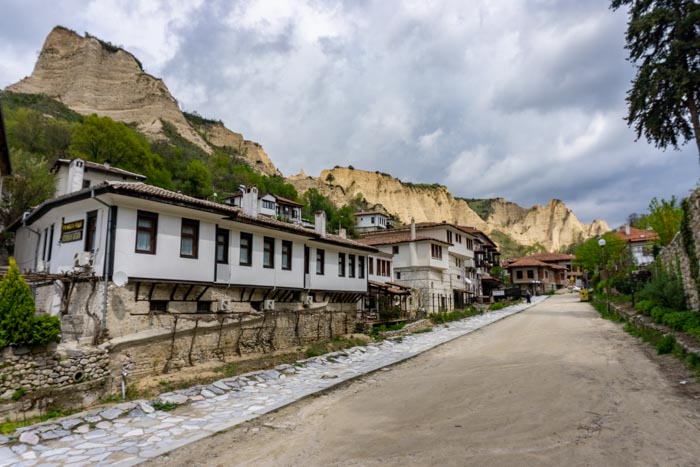
No matter how many days you have to devote to a Bulgaria travel itinerary, there is no denying that there are countless things to see and do in this underrated European nation.
Are you planning to visit Bulgaria? Have any questions? Let us know in the comments!

Related Posts:

The Perfect 1, 2, or 3 Days in Sofia Itinerary

How to Get From Sofia to Thessaloniki by Bus, Train or Car

Is Bulgaria Expensive? A Guide to Prices in Bulgaria

About Maggie Turansky
Maggie is a co-founder and writer for The World Was Here First. Originally from the US, she has lived in five different countries and has travelled to dozens more, both solo and with her partner, Michael. She particularly loves exploring Spain and spending time in the Caucasus and the Baltics. Read more about Maggie
great itinerary, lots of useful tips too. many thanks. marilyn
Thanks, Marilyn! Hope you have a great trip.
Hi. This looks like a very useful itinerary. Plan to visit next early June after an extended Turkey, Azerbaijan, Armenia trip. Was planning 5 days but I think 10+ will afford a much better flavor of Bulgaria. Thanks!
Hello, What is the best way to travel from Plovdiv to Varna? Bus? Return to Sofia and take a flight to Varna?
Best regards, Oliveira
You can take a bus directly from Plovdiv to Varna 🙂
How affordable and practical would it be to rent a car for places outside Sofia? Or is bus a better option than driving?
Renting a car can be a great option if you want a lot of flexibility and not to be beholden to bus timetables. Prices can vary depending on a number of factors.
How would you recommend getting to Plovdiv from Sofia? Could we take the local bus?
Yes, the bus is the best way if you’re using public transport 🙂
If I want to do a Bulgaria Greece trip. Start in Sofia then to Plovdiv. Can I fly into Greece next from Plovdiv? Or do I need to go back to Sofia to catch a flight?
Hi Dee Dee, Plovdiv airport is quite limited in its routes so I think your best bet would be to go to Sofia if you want to fly to Greece. Alternatively, I would recommend looking at taking the bus and going overland!
Another interesting old town is Koprivshtiza, on the road from Sofia to Black Sea, in high mountains and very picturesque. Also, there are many caves, waterfalls, natural wonders, and spa options to choose from.
Thanks for the tip, Lil!
Thanks a lot for this wonderful guide. I find it quite helpful.
Thanks, Gali! Hope you’re able to plan a great trip 🙂
Leave a Comment Cancel reply
50 Things you should know before traveling to Bulgaria
So, you are thinking about traveling to Bulgaria? Don’t worry we have you covered!! Here you’ll find all the things you should know before traveling to Bulgaria.
This is a 50 Bulgaria travel tips list where we cover all about the Bulgarian people and the most interesting facts about it! You’ll also discover all the top destinations , what to eat in Bulgaria , how to travel around the country, and how much this will cost you!
This is the ultimate Bulgaria travel guide, with 50 things to know before traveling to Bulgaria!
Page Contents
Bulgaria and the Locals
#1 Bulgaria is located in southeastern Europe, in the Balkans Region. It is bathed by the Black Sea, and it is bordered by Romania to the north, Serbia and Macedonia to the west, and Greece and Turkey to the south.
#2 Bulgaria has been an EU member since 2007, however, it isn’t part of the Schengen treaty. Together with Romania, they are the only EU countries that aren’t part of it yet!
This means that even if you are from the EU, you’ll need your ID to enter Bulgaria. Anyway, the visa requirements for Bulgaria are similar to other EU countries; check here for further details!

#3 Bulgaria is the poorest country in the EU. Although it has been growing fast in more recent years, it still really shows in some parts and infrastructures. Furthermore, we can see some visible poverty, like beggars and homeless people.
There are some elderly people selling flowers and other things in the streets, which is heartbreaking. It isn’t as bad as in Georgia or Armenia , but still surprising to see it in an EU country.
#4 The climate in Bulgaria is similar to Central European countries, with cold, wet winters and hot and dry summers. The seasons in Bulgaria are very distinct; while in the Winter, there are regular snowfalls, particularly in the mountains, in Summer the temperatures go well beyond 30º making the Black Sea a great beach destination .

#5 Nearly one-third of Bulgaria is covered in forests which isn’t a surprise because the country is very mountainous with over 40 mountains on its territory.
Needless to say, they are great for skiing, mountaineering, and hiking. On the other hand, the rest of the territory is made up of vast plains which are used to produce corn and sunflowers.

#6 Bulgarian is perfectly unintelligible to almost anyone outside the country. However, that’s not the worst… Bulgarians use the Cyrillic alphabet, making everything even more difficult for us Westerners.
We can’t really read or understand anything if it is written only in Bulgarian, not even the name of places or towns.
#7 Even though most Bulgarians speak very little English, particularly the older generations, It is still probably the best language for you to get around. On the other hand, in the more touristy areas, more people speak English, and you’ll communicate better.
#8 Although communication is often difficult you will quickly notice that Bulgarians are usually very nice and attentive to tourists and travelers. They take their time to explain correctly and give good information. They want you to like Bulgaria, which makes us feel very welcome.

#9 While visiting Bulgaria, you will certainly notice one thing very quickly… Bulgarians are good looking! Both men and women are easy on the eyes, and they really know how to present themselves.
#10 Modern-day Bulgaria stands in the region where the ancient Thracian civilization (famed for their gold-making, fierce warriors, and the gladiator Spartacus) lived before the Roman Empire conquered them and later the Ottoman. You can still find over 15 000 Thracian tombs spread through Bulgaria.

#11 Bulgaria is the biggest producer of Rose oil in the World. In fact, it produces more than 80% of the world’s Rose Oil and Rose Water. All the oil is produced in only one region, called Rose Valley, and it is regarded as the best in the world.
The Rose Water also makes an excellent souvenir or gift to someone back home, as it is one of the things Bulgaria is famous for.
#12 Is Bulgaria Safe to Travel? In one word, YES! Bulgaria is a very safe country to travel around. Like in any other touristic country, unfair individuals want to take advantage of distracted tourists, hence the most common crimes are pick-pocketing, bag snatching, and other financially driven offenses…
Violent crime is rare but exists. However, we never experienced this, and furthermore, we always felt perfectly safe in Bulgaria.

#13 One thing Bulgaria needs to improve is littering. We particularly noticed cigarette buts all over the place, particularly on the beaches. I’m not sure if it’s the tourists, the locals, or both, but it really needs to be improved. The country is absolutely gorgeous, and there’s no reason not to take good care of it!

Travel in Bulgaria and top tourist attractions
#14 Bulgaria is home to 10 UNESCO Heritage Sites, 7 of them are cultural, and the other 3 are natural sites. Click here to find out more about them!

#15 Bulgaria has been growing as a tourist destination in the last few years. The coast has always been a hotspot, particularly for Eastern Europe vacationers. However, lately, there are more and more Westerns in Bulgaria.
#16 Along the Bulgarian coast, there are several beaches to choose from, but luckily they aren’t that far away from each other, and you probably can do many of them in the same vacation! There are two major beach destinations, one around Varna and the other around Burgas.
#17 Varna is the 3rd biggest city in Bulgaria, and it has some good urban beaches around it. It is a good place to stop for a day or two on a road trip.
However, if you are looking for beach resort vacations, you’ll want to go to golden sands beach, a few km north. There you have a great beach, full of people and restaurants, bars and everything you’ll need!

#18 On the other hand, Burgas contains a quaint waterfront, nice parks, and a pedestrianized city center. We found the urban beach in Burgas to be superior to the ones in Varna and surprisingly uncrowded. I mean, it has tourists, but we thought it would be much, much more.
Furthermore, Burgas has one big advantage over Varna, it is significantly closer to Nessebar and Sozopol.

#19 Both Nessebar and Sozopol are ancient port towns built in a beautiful setting in rocky peninsulas, with the black sea around. While Nessebar is right next to the huge beach resort of Sunny Beach and is very, very touristy, Sozopol is a few Km south of Burgas and is a bit quieter. Both are nice!

#20 While the beaches of Bulgaria are pretty amazing and deserve at least a few days of relaxing, swimming, partying, and people-watching, we strongly suggest you also give the interior a shot! It has marvelous old towns, fortresses, monasteries, waterfalls, lakes, and mountains that you won’t forget easily!
#21 Veliko Tarnovo is one of those places… It was the capital of the Second Bulgarian Empire, and it was built in a unique canyon.
The setting of Veliko Tarnovo is incredible, and the cobbled, steep streets give this small town an irresistible charm, but what makes it a must-do destination is the Tsarevets, a medieval fortress & palace built on a hill.

#22 Plovdiv is one of the oldest cities in the world, with a history spanning nearly 8 Millenium! The old town of Plovdiv is very pleasant, with narrow streets full of historical buildings.
However, it is a much bigger city (the second in Bulgaria) with many things to do, and it’s the European Capital of Culture in 2019.

#23 Both Plovdiv and Veliko Tarnovo make an excellent base for a day trip to the Rose Valley and some of Thracians Tombs, which are located in Karlovo or close to it.
The Thracian tomb of Karlovo is a UNESCO site, but there are others close to the Valley. Also, you can’t visit the original tomb, which has been sealed forever! You can only visit the exact replica next to it.
Note that the Rose Valley is only worth it during Rose Season between May and June. During the rest of the year, you won’t see many Roses. Apart from this, Karlovo doesn’t really have anything else interesting.

#24 Sofia is located in the east part of the country, and it’s the capital and biggest city in Bulgaria.
Sofia isn’t the most exciting capital city in Europe, but it has some impressive tourist attractions like the Alexandar Nevski Cathedral, the Synagogue, the Market Hall, and the ancient Boyana Church, only 5km from central Sofia.

#25 Believe it or not, we left our favorite part of Bulgaria to the end… Rila National Park with its two main attractions, the Rila Monastery and the 7 Rila Lakes.
Rila Monastery was our biggest surprise in Bulgaria. We knew it was good; we had high expectations but still managed to surpass them… The 7 Rila lakes and the chairlift to them are just a great way to enjoy the mountains and their beauty. If you have time, this is one of the best hiking areas.

What to eat in Bulgaria
#26 If there’s one thing Bulgaria is above the average, really above the average is its food. The ingredients used are just incredibly good! The tomatoes, cucumbers, cheese, yogurt, and fish are some of the best we have ever tried!
#27 Besides being very tasty, Bulgarian food can be healthy! There’s a huge variety of salads!
Our favorite (and almost everyone’s) is the Shopska Salad, made from tomatoes, cucumbers, onion/scallions, raw or roasted peppers, sirene (white brine cheese), and parsley. It’s as simple as it’ great! The Shopska Salad is available in every restaurant you’ll go to.

#28 Besides the Salads, you can also go for a variety of soups! There are many ordinary soups, but among the soups, we need to highlight Tarator and the Shkembe, mainly because they are so different one has to try them!
Tarator is a yogurt and cucumber soup… Yap, you read it right! Think of it as a watered-down version of the Greek sauce tzatziki… It’s very fresh and a Summer favorite among the locals.

Shkembe is a tripe soup with a strong, spicy flavor. It’s usually combined with salt, garlic, and vinegar in a separate cup.

#29 Bulgarian Yogurt is smooth, creamy, and delicious! It’s sometimes said to be the best in the world because it only uses a combination of two strains: Lactobacillus Bulgaricus and Streptococcus Thermophilus.
Yogurt is a staple food in Bulgaria, it’s used everywhere and eaten with almost everything… (even soups…:) ) It’s definitely something you need to try.
#30 I wasn’t expecting to eat much fish in Bulgaria… I love great fresh fish but only if it’s really good, so I don’t really experiment much with fish. However, I gave a try at the trouts in Rila National park, and they were very good!
After that, I discovered that If you like fish, you are in for a treat! The grilled sea bass, sea bream, fried scat and red mullet, the calamares , it only ranged from good to exceptional!

#31 One of the most famous Balkan (and Bulgarian) food is the Kebapche, which is grilled minced meat with spices in a cylindrical form (like a hot dog, I guess).
The meat used is pork or beef, and the preferred spices are black pepper, cumin, and salt! If you like cumin, you’ll love this! Note that Kyufte is very similar to Kebapche but it’s rounded (like meatballs…?) and includes onions and parsley.

#32 Finally, we get to the banitsa… the famous Balkan pastry! We had already tried the Croatian version, and it didn’t disappoint in Bulgaria. You’ll recognize banitsa quickly due to its unique spiral form.
Banitsa is made with eggs, filo pastry, filled with eggs, and baked in the oven. The filling has many variations: salty (spinach, leeks, cabbage) and sweet (apple, pumpkin with sugar, walnuts).

#33 Bulgarians must love coffee! I mean, they can’t live without it… I don’t think I have ever seen so many coffee vendor machines! They are everywhere, so you won’t have trouble finding coffee in Bulgaria. Furthermore, it was very, very cheap!
#34 One thing I liked about Bulgarian restaurants is that they disclose how much the dish weighs.
This is very useful for tourists, as you can have an idea of how much food you are ordering! Particularly because it’s always so cheap, you may assume that the portions are small… Usually, you would be very wrong 🙂
Money and Costs of Traveling to Bulgaria
#35 The official currency of Bulgaria is the Lev (code BGN). Many businesses have prices in Euro and may even accept Euros at a nice rate, however, ask politely beforehand.
The Lev is pegged to the Euro at a rate of 1.95583 Leva = 1 Euro! You can easily withdraw money from an ATM or change it in any of the hundreds of bureau de change .
#36 Is Bulgaria cheap to travel to? Bulgaria is the cheapest country in the European Union and the cheapest country we have ever traveled to in Europe! A couple can easily spend less than 40 Euros per day!

#37 This is possible because Bulgaria is an all-around inexpensive country . Actually, I can’t think of anything that’s priced above the average.
Food and accommodation are extremely cheap, petrol is less expensive than in any developed country. Even most tourist attractions are free (Rila monastery, for example) or very cheap.
#38 Usually we advise people to buy some supermarket foods and try to cook, but in Bulgaria, it really isn’t necessary! Restaurants are really cheap, however, if you still want to cook some meals, note that supermarkets are even cheaper. 🙂

#39 Most shops, restaurants, and bars will accept credit and debit cards; however, we strongly suggest you always carry LEV with you! Surprisingly, the exceptions are the tourist attractions, as many wouldn’t accept cards…
Furthermore, there aren’t ATM costs in Bulgaria, but be aware you may have to pay your home bank fees, particularly the foreign currency fee.
#40 Finally, we found Bulgaria so cheap that we would tip and round up bills regularly, as we thought it was too cheap. Note that we are budget travelers. This doesn’t happen very often! That’s how cheap we found it.

How to travel in Bulgaria
#41 Public transportation is reasonable, particularly if you consider that this is the poorest country in the EU.
The railway network is big and can take you to every major (and smaller) city, and you can even reach the nearby countries through it. However, they are very slow! If you have the time, it’s a cool option, if you don’t, you are better off using your own car and buses.
Important note: Smaller train stations don’t sell international tickets, only national!

#42 Within Sofia you can easily use only public transport, an occasional taxi and walking. However, if you have a car, Sofia is probably one of the easiest big cities we have ever traveled to. Note that Uber and other ride shares don’t work in Bulgaria.
#43 If you don’t have enough time, you want to travel around Bulgaria, particularly to the more remote locations, then a car is the way to go! It’s fairly cheap to rent, and fuel costs are as low as possible in an EU country! You can rent a car for 160 Euros a week, insurance included.
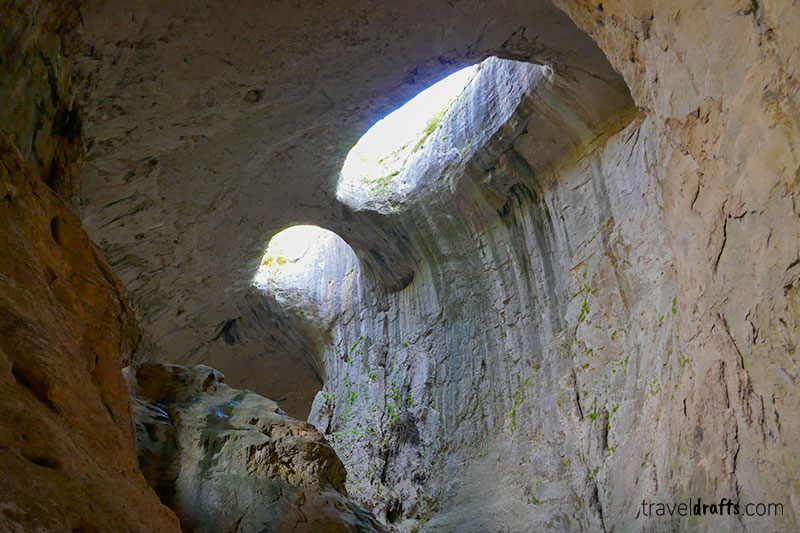
#44 Renting and driving a car in another country can be stressful, but our experience in Bulgaria was very smooth. Drivers in Bulgaria drive reasonably well, very different from Georgia and Armenia for example. They are slightly in a hurry in the bigger towns, but that happens almost everywhere nowadays.
Furthermore, we never had big traffic jams in Bulgaria, not even in Sofia, Plovdiv, or close to the beach. Maybe we are very lucky, but that’s definitely a big plus!

#45 One of the things you need to know before traveling to Bulgaria is that the roads are pretty bad. Not as bad as Armenia, but if that’s the term of comparison, it’s a very bad sign :). But seriously, be careful because you can get into potholes anywhere.
Are you enjoying this guide? Check the 50 things you need to know before going to Armenia!
#46 Nonetheless, while driving in Bulgaria, you should note a few important things:
- Many roads don’t have any markings, which is weirder than anything else.
- Even rare than Road markings are the speed limit signs… you can spend hours driving without seeing one 🙂
- If you travel by your own car, a road vignette is mandatory not at motorways but on all main roads too. It costs €8 for 7 days, and you can purchase it at the border or gas stations. It can’t be purchased online. You’ll see tons of signs advising about this.
- There aren’t highway tolls in Bulgaria, apart from the two bridges − New Europe Bridge and Danube Bridge, both at Danube border crossings to Romania.
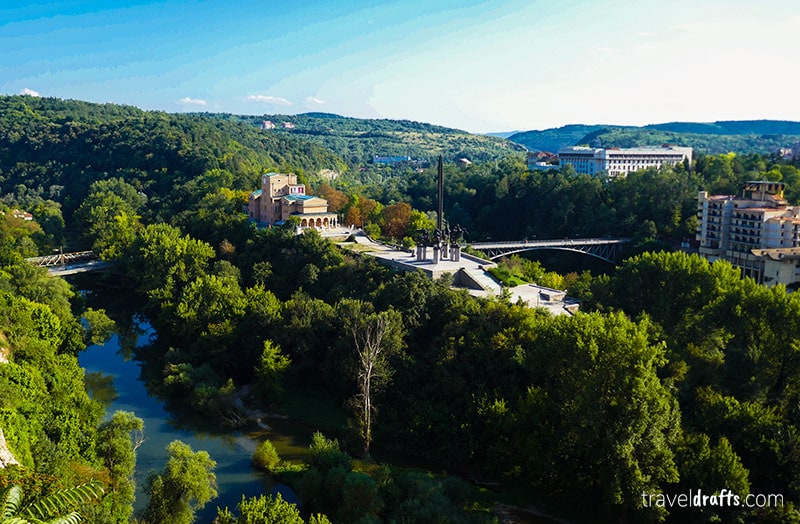
#47 Parking is usually a nightmare when traveling by car, particularly in city centers and highly touristy zones. However, in Bulgaria, it was fairly easy and/or inexpensive.
Most places had free parking, and when it wasn’t free it was cheap. Furthermore, finding a parking spot was always very easy.
Other useful information about traveling in Bulgaria
#48 You won’t have any problems getting WIFI in Bulgaria. Most restaurants, bars, and hotels have it for free. Also, if you have an EU sim card, you can use it for free, so you’ll also have a data sim card.

#49 Which vaccines do I need to go to Bulgaria? There is no mandatory vaccination to enter Bulgaria, but some are recommended. The CDC and WHO recommend vaccination against hepatitis A, hepatitis B, rabies, and influenza.
#50 Our final Bulgaria travel tip is: Buy local! It’s cheap, and you’ll help the locals. One of the best ways to buy locally in Bulgaria is from road vendors in the countryside. You’ll see people selling fruits, veggies, honey, nuts, and so on…
Do you remember what we said about the ingredients? They are crazy good! Believe me, you won’t regret it!
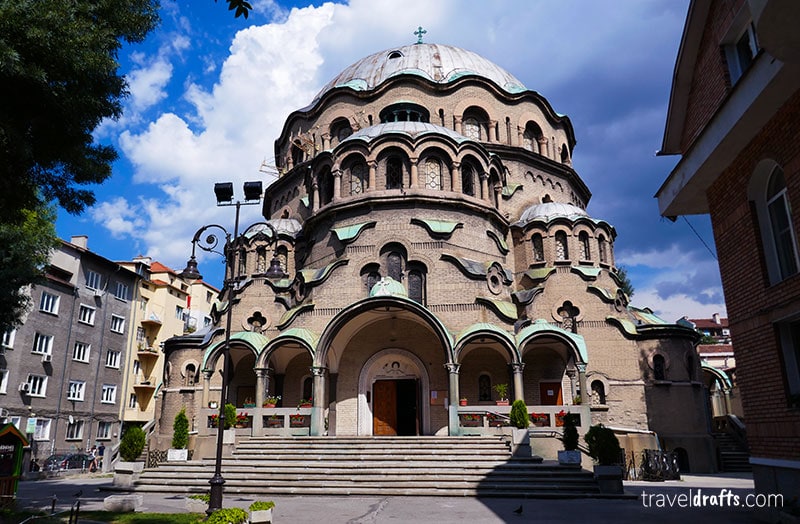
Our Recommended Travel Guide Books For Bulgaria
Our recommended Bulgaria travel Guide is the Bulgaria and Romania guide from Lonely Planet , which is particularly useful if you are visiting both Bulgaria and Romania.
Pin for later

Sharing is caring!
Travel Guide Bulgaria
Book your individual trip , stress-free with local travel experts
Select Month
- roughguides.com
- Travel guide
- Local Experts
- Travel Advice
- Accommodation
Plan your tailor-made trip with a local expert
Book securely with money-back guarantee
Travel stress-free with local assistance and 24/7 support
With several dramatic mountain ranges, superb beaches, numerous historic towns and a web of working villages with traditions straight out of the nineteenth century, Bulgaria has a wealth of attractions crammed into a relatively compact country. More than anything else, this is a land of adventures: once you step off the beaten track, road signs and bus timetables often disappear (or are only in Cyrillic), and few people speak a foreign language, but almost everyone you meet will be determined to help you on your way.
Where to go in Bulgaria
Travel ideas for bulgaria, created by local experts.

Relaxing beach fun - the Black Sea Coast in Bulgaria and Romania
The perfect trip for those that are looking for sun, sea and sand while also getting to know the culture and history of both Bulgaria and Romania. Start and end in Bucharest and discover Constanta, Sunny Beach, Nessebar, Burgas and Madara Rider.

The legend of Dracula
Transylvania is known to be the land of Dracula. Are you curious to visit the places mentioned in the book and the castles that hosted the major life events of Vlad the Impaler, the cruel ruler known as Dracula? Explore mysterious places and breathtaking landscapes all over Romania.

World Heritage in Romania and Bulgaria
Discover the most important UNESCO heritage sites in Romania and Bulgaria as well as some lesser-known attractions. From the capital Sofia to Plovdiv and Nessebar, as well as Veliko Tarnovo in Bulgaria to Romania's capital Bucharest to Sibiu, Cluj and Dracula's castle in Brasov.

Delicacies in Romania: food & wine
Perfect for foodies with little time - spend 5 days in Romania between Bucharest and Brasov, home to the famous Dracula castle. On the way, you will pass by vineyards and wineries, with tasting arrangements available for you. A private guide will be with you all throughout the trip.
Bulgaria's image has altered dramatically in recent years, thanks largely to the modernization of the country's tourist infrastructure coupled with soaring foreign interest in inexpensive rural and coastal properties. Independent travel is common: costs are relatively low, and for the committed there is much to take in. Romantic National Revival era architecture is a particular draw, with Koprivshtitsa, Bansko and Plovdiv foremost amongst examples of the genre. The monasteries are stunning too – the finest, Rila, should be on every itinerary, while for city life aim for Sofia, Plovdiv, and the cosmopolitan coastal resorts of Varna and Burgas.
Top image: Orthodox Rila Monastery © Dennis van de Water/Shutterstock
Discover more places in Bulgaria

Population 7.3 million
Area 110,910 sq km
Language Bulgarian
Currency Lev (Lv)
Capital Sofia (population: 1.35 million)
International phone code t 359
Travel advice for Bulgaria
From travel safety to visa requirements, discover the best tips for visiting Bulgaria
- Culture and Etiquette in Bulgaria
- How to get to Bulgaria
- Eating and drinking in Bulgaria
- Getting around Bulgaria: Transportation Tips
- Sports and Outdoor activities in Bulgaria
- Travel Tips Bulgaria for planning and on the go
- Best time to visit Bulgaria
The Rough Guides to Bulgaria and related travel guides
In-depth, easy-to-use travel guides filled with expert advice.

Find even more inspiration for Bulgaria here

Planning your own trip? Prepare for your trip
Use Rough Guides' trusted partners for great rates
written by Rough Guides Editors
updated 26.04.2021
Ready to travel and discover Bulgaria?
Get support from our local experts for stress-free planning & worry-free travels.
- Where to stay
- Travel advice
Travel Blogger, Copywriter, Entrepreneur

166 Bulgaria Travel Tips: The Ultimate Guide
Home » Blog » 166 Bulgaria Travel Tips: The Ultimate Guide

Welcome to the ULTIMATE travel guide to Bulgaria.
If you’ve been looking for helpful Bulgaria travel tips , you’ll love this comprehensive post, covering everything you need to know about your trip to the gorgeous Balkan country.
In a tiny territory, Bulgaria packs lakes, rivers, beaches, and mountains. It’ll fascinate you with its fantastic food, profound culture, and unmatched magnetism.
Hi! My name is Svet Dimitrov.
I hail from Bulgaria and I absolutely adore my country. Now, it’s your turn to fall in love with it.
The travel tips below represent Bulgaria in its pure, unadulterated form. They’ll truly aid you in experiencing the mind-blowing nature, the jaw-dropping beauty, and the scrumptious food of Bulgaria in a witty and amusing way. Dig in slowly!
Things to Do & Know Before You Go to Bulgaria
Here’s a list of several things you need to do before you travel to Bulgaria .
- Type A – for an airport transit .
- Type C – for a short stay with the aim of transit or a planned stay.
- Type D – for a long-term stay.
The Bulgarian diplomatic mission in your home country issues the different visas. Find more information about the three visa types here .
- EU, the U.S., and Schengen area member states don’t need a visa . Bulgaria is a member of the European Union, so if your country is an EU member, too, you can stay in Bulgaria for up to 90 days without a visa. This also applies to all Schengen area members, which are not EU member states, as well as to U.S. citizens.
- Arm yourself with a Bulgarian phrasebook . In the capital, Sofia, and in big cities, you’ll get around with English. However, venturing yourself out in the countryside, where the real beauty of Bulgaria unveils, will face you with language challenges. Thus, having a Bulgarian phrasebook in your backpack or rolling travel rucksack will be helpful.
- Bulgaria’s standard voltage is 230 V . You can use and/or charge your electronic devices in Bulgaria if your country’s standard voltage varies from 220 to 240 V. This is the case in Europe, the U.K., Australia, and the majority of countries in Asia and Africa. Don’t worry about the small deviations – manufacturers take them into account.
- If your country’s standard voltage is 100 V – 127 V, bring a voltage converter . The power sockets in Bulgaria are of type F, also known as “Schuko”. If you’re from the U.S.A. , Canada, or South America (with a few exceptions), you’ll need a voltage converter in Bulgaria.
- The country is located in Southeast Europe. Bulgaria sits on the Balkan Peninsula, bordering Romania to the north, the Black Sea to the east, Greece and Turkey to the south, and Serbia and North Macedonia to the west.
- Bulgaria’s time zone is EET. Eastern European Time (EET), which Bulgaria uses, is 2 hours ahead of Coordinated Universal Time (UTC). Other EU countries in this time zone are Cyprus, Estonia, Finland, Greece, Latvia, Lithuania, and Romania.
- Bulgaria is a parliamentary republic . By form of government, Bulgaria operates under a parliamentary system. The head of government is the prime minister , whereas the president’s powers are more limited.
- There are numerous mountains . The Balkan range divides the country into two parts – North and South. The majority of mountain chains – Rila, Pirin, the Rhodopes, etc. – are found in the southern part, while the Danubian Plain takes most of the northern part.
- Bulgaria has plenty of beaches . The country’s coastline of 354 km (220 mi) offers numerous shimmering beaches with fantastic resorts. If you want to escape the crowds of tourists, my personal recommendation is the beaches around the Kavarna region .

I’ve described most of them in more detail below.
Food in Bulgaria Heaven for Vegans, Vegetarians, and Meat Lovers Alike
Bulgarian food is not among the most famous worldwide, but I’m on a mission to make it so. The variety of fruits and veggies, peculiar spices, and fragrant herbs will make you wonder why you haven’t tasted this cuisine earlier. Ready to explore?
- Try the fruits and veggies in spring and summer . Bulgarian fruits and vegetables , especially in summer, are probably the most succulent you’ll ever taste. If you want to indulge in the real home-grown delicacies, go to a market or visit the countryside. I promise you a juicy sensation!
- Bulgaria is a vegan paradise . If you are a vegan or a vegetarian, you’ll have plenty of mouth-watering options. Salads come in abundance, and there are meals that are perfect for fasting (if you are on a keto diet, for instance). Most places will offer vegan dishes.
*My personal recommendations are : beans stew; lentils soup; stuffed peppers with beans; banitsa with leek and sauerkraut (zelnik).
- Bulgarian cuisine uses a lot of meat, too . If you love meat like I do, don’t worry. Besides all the vegan and vegetarian meals, Bulgarian cuisine has a titillating abundance of meats. The most popular meat dishes include chicken and pork , but you’ll find dishes with beef , lamb , and rabbit . Turkey is not very popular, but there are places that serve it. Horse and game meat are a delicacy, and they’re usually an ingredient of dried meats or sausages.
- Try the best yoghurt in the world . Few people know that Bulgaria is the Sacred Land of Yoghurt . Known for around 4,000 years, it was in 1905 when the Bulgarian scientist Stamen Grigorov, discovered the bacteria responsible for the existence of natural yoghurt. As a sign of recognition by the scientific community, the bacteria received the name Lactobacillus bulgaricus .
- Banitsa and boza are Bulgaria’s most typical breakfast . A scrumptious pastry and a gooey drink make for the perfect breakfast combo in the Eastern European country. Banitsa is usually salty (epitomising white brine cheese or sirene ), while boza is a sweet and very thick, fermented drink typically produced of rye, wheat, barley, or einkorn. The latter also contains around 0.1% alcohol due to the fermentation, so don’t drink too much if you’re going to drive.

Bulgarian Drinks The Source of Potent Life
The most important thing that you need to know about drinking in Bulgaria is this:
Don’t drink in shots!
Not only you’ll get drunk quickly, but you won’t be able to enjoy the fabulous beverages that pleasantly soothe the mind, body, and soul.
- Drink plenty of mineral water . Bulgaria comes second, only after Iceland, in the variety of its mineral springs. It’s non-surprising that in the southern part of the country, you’ll find Velingrad – the Spa Capital of the Balkans . The mineral water in Bulgaria is one of the best you’ll ever quench your thirst with, guaranteed!
- Tap water, especially in Sofia, is safe to drink . While there are exceptions, most of the tap water in Bulgaria is safe to drink. If you want to be completely certain that you won’t bug your stomach, though, stick with mineral water.
- Bulgaria might be the birthplace of wine . Wine is related to the ancient Thracians. And they lived in the lands of modern Bulgaria. Does this mean Bulgaria is the birthplace of wine? I’ll let you decide, but this relates to the next tip.
- Taste the various Bulgarian red wines . Bulgaria used to be the second largest exporter of wine in the world some 30 years ago. This position has changed, but nowadays, it’s claiming its place back in the top 5. I’ve spoken to many wine connoisseurs, some of them hailing from France and Italy, and they claim Bulgarian red wine is among the Top 5 in the world. Consume it slowly and accompany it with cold meat appetisers or assorted cheeses.
- Even if you’re not a fan of highly alcoholic beverages, Bulgarian rakia is a must . The fiery beverage comes in many different varieties, but the two most notable ones are made from grapes and prunes ( plums ). Rakia* is the ideal accompaniment to any salad – whether it’s spring greeny or autumn reddy. Senior people say it helps cure 30+ illnesses. And we know we can’t argue with senior people, can we?
Note : Rakia is an aperitif, not a digestif.
- Don’t drink your beverage in shots . Much like eating, when Bulgarians drink, they do it slowly . That’s due to many reasons but mainly because we like taking our time to enjoy the food and drinks with our friends and family.
- Look into the eyes of your companions. When you clink your glass with a Bulgarian and your lips pronounce ‘ Nazdrave ’ (Bulgarian for ‘ Cheers !’), you have to look them in the eyes. That’s a sign of respect.
- Try the thick goo called “boza”. How does a fermented grains drink sound to you? You’ll either love it or hate it, but you just can’t miss tasting it. The best thing about it? It has negligible amounts of alcohol. Just don’t forget to consume it with banitsa .
- Quench your thirst with ayran in every season. Ayran is one of the most refreshing drinks Bulgaria (and some other Balkan countries) offers. It’s super easy to make, and you can find it in virtually every restaurant in Bulgaria. It’s made of yoghurt, so the good ones are thick and satiating.
I can literally go all day talking about food and drinks. And you will, too, when you come to visit Bulgaria.

Health and Health-Related Tips
In this section of my 166 Bulgaria travel tips, I’ll provide you with useful information on how to manage your health in Bulgaria.
- Have your insurance ready . Bulgarian hospital services are definitely more affordable than most EU countries. Yet, having an insurance with you will save you from a lot of trouble if you ever need medical or other assistance.
- Have hand wipes with you . It’s rare that you won’t find soap or toilet paper in restrooms in Bulgaria. But it happens. So, I’d suggest you always carry antibacterial hand wipes and a hand sanitiser with you.
- Summers in Bulgaria can get very hot . Sofia typically gets the “coolest” weather in summer. However, if you visit Pleven , Plovdiv , or Veliko Tarnovo in the summer months, be prepared. The maximums sometimes reach 40-42 C (104-107 F). Avoid the heat, drink plenty of water, and bring electrolytes with you.
- Don’t approach feral dogs . Rabies is fatal when untreated. The alarming number of stray dogs in the country makes this an issue. In the unfortunate event a dog bites you, immediately seek medical help.
- Use a pharmacy if you have to . If you’ve forgotten your medication or you’ve run out of it, visit a pharmacy. In most cases, it won’t be an issue to purchase prescription medication without a prescription. Showing one in English should be okay, too. The pharmacists might require your ID card or passport, though. Most of them speak good English.
- Big cities have hospitals with English-speaking staff . Bulgarian hospitals in the countryside can be an unpleasant adventure. However, hospitals in the capital, Sofia, and the majority of them in towns over 100,000 are neat and there are English-speaking staff.
- Bring some probiotics with you . If you’re coming from a country that has a totally different cuisine from Bulgarian, this might upset your stomach. Having some probiotics with you would be helpful. Just make sure you’ve talked to your doctor about this. I personally suggest probiotics with at least 5 billion microorganisms.
Pollution in Bulgaria
Compared to China , Bulgaria is not as polluted. But as a member of the European Union, Bulgaria is not doing great in terms of clean air.
- Sofia is one of the most polluted capitals in the EU . That sounds scarier than it is. The pollution is usually slightly above 50 particles. But it can peak in the winter months when it’s foggy.
- Some large towns are slightly polluted, too . In big towns like Plovdiv, Stara Zagora, or Pleven, there could also be some pollution, especially in winter. But don’t sweat about it too much. It’s just above the safe zone.

- Bring a mask if you’re sensitive. If you’re very sensitive to pollution, it’s only wise to place a mask in your luggage. Plus, they’re light and take little space.
- Choose an airtight mask that forms a close-fitting seal around your face.
- Basic cotton masks or surgical-style masks might be more hazardous than wearing nothing at all.
- Check out material of the pollution mask – it has to be able filter out even the smallest particles of matter.
- If you’d like to exercise outdoors, look at the mask’s ventilation – it needs to have some space for breathing.
- Consider the style of the mask. Those that are most effective are rarely pretty, so a good idea might be to place the “ ugly ” one under the “ pretty ” one. No, this won’t double the protection, but it’ll be less awkward when you walk around with it.
Accommodation in Bulgaria Hotels, Hostels, and Airbnb
Bulgaria has relatively cheap accommodation, compared to Western standards. But that doesn’t mean the quality is worse, by any means.
There aren’t many countries that have both golden sandy beaches and jaw-dropping mountains within an hour of each other. Due to that and the fact that new airline routes are opening every month, tourists have been flocking to Bulgaria to benefit from this powerful combo.
And where there are tourists, hotels follow. New accommodation is mushrooming to keep up with the rising demand.
General Accommodation Tips
- Smoking is forbidden . Unlike China, smoking in public spaces, including hostels and other accommodation, is not allowed in Bulgaria. Great news for you, non-smokers. For smokers, I suggest you book a room with a balcony.
- Get your hotel’s business card when you check in . It will have the name and address of the hotel in both Bulgarian and English . If you lose your way, show the card to a taxi driver or ask for directions on the street.
- Most hotels/hostels offer complimentary breakfast . You can expect to have a buffet breakfast included in the price for the night. But if I were you, I’d double check.
- Lock your valuables and have earplugs on you . If you opt to stay at a hostel or other shared accommodation spots, it’s advisable to lock your valuables and bring earplugs to sleep like a baby.
- Most accommodation spots have a FREE Wi – Fi . But it gets even better. The speed will be fast as Bulgaria is among the Top 10 in the world by internet speed.
- Avoid holidays and high seasons if you want to get the best deals . The months of July and August are the craziest in summer. December, around Christmas, is also busy. And make sure to avoid Easter holidays, too – just remember that Bulgaria celebrates Easter with the Orthodox Christians and Christmas with the Catholics.
Hotel Types in Bulgaria
Bulgaria boasts an extensive base of 16,000+ hotels. From unpretentious 1- and 2-star hotels through decent 3-star family hotels to the grand 4- and 5-star beach and mountain resorts, rest assured you’ll be able to find yourself a spot to your liking.
- One-star or two-star hotels are clean and basic . Prices start at $15-20 per night, and the staff is likely to speak English. Most will have a private bathroom, but other conditions will be basic.
- Mid-range three-star hotels are a great blend of price and comfort . These are probably the most sought-after options. Expect an air conditioner, a flat-screen TV, a fridge, a gym, a phone, and a cosy private bathroom. Prices start at $35-40 per night.
- Four- and five-star hotels are a great deal, too . If you’re not on a strict budget, splurging on a five-star hotel is a good deal for the money you pay. Expect multiple facilities, SPA centres, swimming pools, gym and fitness spaces, and concierge services. Breakfast will be hearty, with a mix of international and continental options. Prices start at $50-55 per night.

*All hotel prices are according to research on Agoda, Booking, and Expedia.
Hostels and Other Accommodation Options
Sofia and Plovdiv boast dozens of hostel options, but most smaller cities and towns will have little to none. Thus, either look for a guest house or an Airbnb.
- Hostels are good, cosy, and inexpensive . The majority of hostels in the country will be around $10-15 per night, breakfast included. Plus, most of them will offer breakfast. My personal recommendation is Hostel Mostel .
- Spoil yourself at an authentic guest house . Many old, traditional houses, dating from the time of the Bulgarian Renaissance, now function as guest houses. Their exterior might look a bit rustic, but inside, they are conveniently refurbished. This is not only to preserve the authentic atmosphere of the past but also to accommodate you in a convenient way. Most will be affordable, with prices between $15 and $50, depending on the size, the conditions, and the number of people.
- If you are into hiking and trekking, visit a mountain hut. Bulgaria’s territory prides itself on numerous mountains with jaw-dropping vistas. One of the most genuine ways to enjoy nature’s mind-boggling creations is to visit some of the innumerable mountain huts. Keep in mind that the conditions there are basic and bathrooms are a luxury, rather than a given.
Airbnb in Bulgaria
- Airbnb is getting more and more popular in Bulgaria . If hotels and hostels are not your cups of vacation tea, you can then opt for an Airbnb spot. Just remember to do proper research of the place, read the reviews, and contact the owner with any questions prior to booking. If you’re staying in Sofia, my friend Geri from WhenWomanTravels offers a fantastic apartment right in the very heart of Sofia. Book your stay in this pearl here .

The Top Bulgarian Cities to Visit
Ready for a virtual tour around Bulgaria’s major cities and must-visit spots? Cool, let’s go!
Disclaimer: To facilitate your travel plans for Bulgaria, I’ve included a recommended tour for you after each place. This is an affiliate link, which means I receive a small commission when you book a tour – at NO extra cost for you.
Sofia Population: 1.27 million Location: South-West Bulgaria Province: Capital city of Bulgaria Landmarks: Alexander Nevsky Cathedral, Boyana Church, National Palace of Culture Famous for: 7,000+ years of history
Plovdiv Population: 347K Location: South-Central Bulgaria Province: Plovdiv Landmarks: Ancient Roman Amphitheatre, Old Town, The Seven Hills (Tepes) Famous for: The oldest city in Europe (dating back to 6th millennium BC)
- European Capital of Culture for 2019
- Roman Amphitheatre
- Art District “Kapana”
- Quaint Old Town Full-Day Virtual Reality Tour of Plovdiv and Asen’s Fortress : Profit from a full-day trip from Sofia to Plovdiv. The tour includes exploring its Old Town, the Roman Theatre, and numerous churches, as well as a visit to the mediaeval Asen’s Fortress. Discover all tours from Plovdiv here .
Varna Population: 336K Location: North-East Bulgaria Province: Varna Landmarks: Aladzha Monastery, Roman Thermae, Sea Garden, Dolphinarium Famous for: The oldest gold treasure in the world (dating back to 4200-4600 BC)
Burgas Population: 196K Location: South-East Bulgaria Province: Burgas Landmarks: Burgas Lakes, Sea Garden, St. Anastasia Island, Aqua Kalite Famous for: The largest oil refinery in South-eastern Europe
Ruse Population: 143K Location: North-East Bulgaria Province: Ruse Landmarks: Ivanovo Rock Monastery, Opera House, Sveta Troitsa Cathedral Famous for: The Little Vienna due to its Neo-Baroque and Neo-Rococo architecture
Stara Zagora Population: 136K Location: South-Central Bulgaria Province: Stara Zagora Landmarks: Antique Forum August Trayana, Samara Flag Monument, Mineral Baths Famous for: The only Museum of Religions in a temple in the world; numerous Bulgarian poets
Pleven Population: 94K Location: North-Central Bulgaria Province: Pleven Landmarks: Kaylaka Park, Panorama Pleven, Storgozia Fortress, Wine Museum Famous for: The birthplace of wine; the water cascade
Veliko Tarnovo Population: 68.5K Location: North-Central Bulgaria Province: Veliko Tarnovo Landmarks: Tsarevets and Triaditsa Hills, The Old Town, Arbanasi Village Famous for: The capital of Bulgaria during the Second Bulgarian Kingdom
Shumen Population: 75K Location: North-East Bulgaria Province: Shumen Landmarks: Madara Rider, Shumen Fortress, Pliska and Preslav Famous for: Shumensko Beer
Blagoevgrad Population: 69K Location: South-West Bulgaria Province: Blagoevgrad Landmarks: Park Bachinovo, Varosha Etnographic Complex, Stob’s Pyramids Famous for: The American University in Bulgaria
Kazanlak Population: 44K Location: South-Central Bulgaria Province: Landmarks: Thracian Tomb of Kazanlak, Valley of Roses, The Tomb of Tsar Sevt Famous for: The Festival of Roses
Velingrad Population: 21K Location: South-Central Bulgaria Province: Pazardzhik Landmarks: Dorkovo Pliocene Museum, Historical Museum, Avramavo Train Station Famous for: The Spa Capital of the Balkans
Melnik Population: 325 Location: South-West Bulgaria Province: Blagoevgrad Landmarks: Korpodopulova House, Rozhen Monastery, Sand Pyramids Famous for: Bulgaria’s smallest town; open-air museum
Other Must-Visit Spots in Bulgaria
If you’re spending more than a week in Bulgaria, and I strongly suggest you do, here are some more ideas for places that will blow your mind.
- The Belogradchik Rocks Location: Belogradchik, North-West Bulgaria Province: Vratsa If you’ve been to Montserrat’s Monastery near Barcelona, you’ve experienced some breathtaking rock formations. Well, the rocks near Belogradchik are as breathtaking (if not more) than those in the Montserrat Mountains. See them for yourself – I bet you won’t regret it. Day Trip to the Belogradchik Rocks and Fortress from Sofia : Marvel at the heart-stoppingly beautiful Belogradchik Rocks – recognised as one of Europe’s most gorgeous landscapes. The tour includes a visit to the impressive Belogradchik Fortress, which dates back to the Middle Ages.
- The Seven Rila Lakes Location: South-West Bulgaria Province: Kyustendil Imagine 7 footsteps of giants in the mountains that are now full of water. This is one of the legends for the origin of the Seven Rila Lakes. The highest lake – the Teardrop – lies at 2,535 m (8,317 ft). A few steps above it, you’ll find a jaw-dropping vista of all the lakes. The Seven Rila Lakes: Full-Day Tour from Sofia : Put your trekking shoes to a test by hiking the drop-dead gorgeous Seven Rila Lakes. After a 90-minute drive from Sofia, see for yourself why these glacial lakes go by the name “The Blue Pearls of the Rila Mountains”. Explore all other Rila Lakes tours here .
- Cabyle Location: South-East Bulgaria Province: Yambol Ancient Thracian fortresses, anyone? The small town of Cabyle (Kabyle or Cibeles) lies just opposite of Yambol. If you’re a worshipper of history, this 4,000-year old settlement will go beyond your expectations. Further read: Cabyle – the Ancient Thracian Village
- Koprivshtitsa Location: South-West Bulgaria Province: Sofia How about a powerful plunge in the 19th century? The incredibly charming little town of Koprivshtitsa gives you the unique chance to stroll in the past. Strikingly beautiful old houses line its cobble-stoned streets. And when you grow weary of walking, stop at one of its many restaurants to quench your hunger with traditional delicacies. Koprivshtitsa Day Trip : Explore the quaint little town of Koprivshtitsa with its strikingly beautiful 19-th century architecture.
- Hisarya Location: South-Central Bulgaria Province: Plovdiv Having been through a horrendous kidney stone crisis, I know what’s to give birth now. Jokes aside, Hisarya’s mineral water is said to effectively cure kidney stones. What’s more, the town has a Roman Thermae and holds the remains of the ancient Roman City Diocletianopolis.
- Asen’s Fortress Location: South-Central Bulgaria Province: Plovdiv Do mediaeval fortresses strike your fancy? Well, add to the mix a high rocky edge and a gorgeous river, and you’ll be picturing the stunning Asen’s Fortress. Located very close to Bulgaria’s second largest monastery – the Bachkovo Monastery – archaeological findings from the area date from the time of ancient Thracians. Plovdiv and Asen’s Fortress Private Day Trip : Combine your trip to the magnificent Asen’s Fortress by exploring Plovdiv, Europe’s oldest town, and its majestic hills. See all tours to Plovdiv and Asen’s Fortress here .
- Buzludzha Monument Location: Central Balkan Mountains, Bulgaria Province: Stara Zagora Have you seen a UFO? Well, that’s what this weird, ginormous monument reminds of. What’s even more peculiar – it’s a symbol of socialism! Next to the UFO building stands a staggering 70 m (230 ft) tower. But there’s more! The glass stars that flank the tower’s north and south sides are 12 m (39 ft) across – believed to be the biggest in the world! Day Tour to the UFO Building : Discover the imposing Buzludzha Monument and learn about Bulgaria’s communist era from your guide. The tour also includes a visit to the Museum of Socialist Art in Sofia.

Nightlife in Bulgaria Bars, Clubs, and Discos
Among the many things Bulgarians are famous for is the fact that we love having fun. The enormous variety of entertainment venues in the country proves that.
- Your music liking will be fulfilled . From casual pubs and elegant piano bars to noisy rock clubs and pulsating discos, you’ll find a place to dance the night away. Guaranteed.
- Sofia has one of the best nightlives in Europe and the world . The vibrant, vivacious, and voluptuous capital of Bulgaria offers to its many locals and tourists some of the best bars and clubs not only in Europe but in the world. Visiting Sofia, but not sure where to go? Join the Sofia Pub Crawl for a bar tour and discover some of the best pubs and clubs in town!
- Don’t worry about the party stopping at midnight . Most clubs and discos in Bulgaria stay open until early morning. In summertime, most seaside party venues are open non-stop.
- Smoking is forbidden by law . Unfortunately, this law is mostly trespassed after 22:00 (10 PM), so don’t wear your best clothes as you’ll have to wash them after a long stay at the club. During summer, you’ll find a plenty of outside bars, so this won’t be an issue.
- Entrance fees are affordable and booze is inexpensive . The entrance to most bars and clubs in Bulgaria is either FREE or between 5 and 10 BGN (special events have a higher price). Alcoholic beverages are quite affordable, too – a guarantee for an (un)forgettable night.
Personal recommendation: The area in front of Ivan Vazov National Theatre in Sofia’s City Garden is a popular gathering spot.

Transportation Everything You Need to Know about Travelling in Bulgaria
Contrary to most of Western Europe, trains are cheaper or as cheap as buses in Bulgaria. This section will tell you more about how to travel in Bulgaria .
- Taxis are quite affordable . The rate per km in Bulgaria varies from 0.6 BGN to 1.20 BGN. The fare should be displayed on the left side of the windshield of the car.
- Beware of taxis around bus and train stations, and airports . Most of them are ‘illegal’ taxis that charge at least twice as much and are driven by questionable characters.
- Public transport is affordable, too . The price varies from 1.00 BGN in the countryside to 1.60 BGN in Sofia. The price is the same for the metro line in the capital.
- Many locals use Facebook rideshare groups . For this option, you’ll have to probably know some Bulgarian. However, since the majority of people in these groups are young, they’ll speak some English. Just go to Facebook groups and search for your departure and destination spots. For instance, here’s the one for people travelling from Sofia to Plovdiv and back . A piece of advice: Take a look at the driver’s profile before you message him/her. And don’t forget to respect the rules of the group.

- Buses are nice, cheap, and quicker than trains . If you’re from Western Europe, this might surprise you. But having read the previous tip, you’ll understand why buses in Bulgaria usually take you faster from point A to point B. If you don’t fancy trains (hey, I’m not judging) or sharing rides with strangers (creeps are everywhere, I know), hopping on a bus is your thing. I recommend Etap and Union Ivkoni .
- Flights are also an option . Bulgaria has four airports that serve civil passengers – Sofia, Plovdiv, Varna, and Burgas. Since the furthest distance is from Sofia to Varna, catching an early morning flight from the former to the latter gives you a chance to arrive on time for a business meeting or enjoy the whole day, unwinding on the golden sands.
- If you hire a car, drive with your lights on. Whether it’s dark, raining, or even sunny, your car lights must be on. Don’t forget them as the police might pull you over and fine you.
Religion in Bulgaria The Top 10 Monasteries to Visit
Religion has played a significant role in the history of Bulgaria. Although it has one predominant religion, there are several other that peacefully coexist in the country. Let’s see.
- Bulgaria’s religion is Christianity . Since its adoption as state religion in 865, Christianity has been prevalent in Bulgaria. The dominant majority is Eastern Orthodox Christians, with Catholicism and Protestantism representing less than 2% combined.
- The second largest religious group is Islam . Throughout the Ottoman rule, Sunni Islam spread on the lands of Bulgaria. It’s a significant minority nowadays, representing around 8% of the population.
- You can practice any religion . The Bulgarian constitution safeguards the free exercise of any religion. Plus, the country has never experienced any major ethnic or religious conflicts. The religious communities coexist in peace.
- Bulgaria celebrates Christmas on a different day. Although Bulgaria is Eastern Orthodox, we celebrate Christmas Eve with the Catholics – on the 25 th of December. In contrast, other Eastern Orthodox countries celebrate Christmas on the 6 th of January due to using different calendars.
- Marvel at some of the largest Eastern Orthodox temples in the world. If you happen to trot Sofia’s boulevards, a must-marvel-at landmark is the Alexander Nevsky Cathedral. Located in the very heart of the city, the temple is the second largest in the world, after St. Sava in Belgrade, Serbia .
- Dress appropriately in churches and monasteries . While Bulgaria is nowhere near strict as some Muslim countries in terms of clothing, outfits that reveal too much are a huge no-no . Also, make sure you remove any headwear in churches.
- Visit the Boyana Church . The Boyana Church is a UNESCO World Heritage Site, renowned for its jaw-dropping frescoes. It’s a tiny church that cosily sits in the outskirts of Sofia, at the foot of Vitosha mountain. The entrance fee is 10 BGN (5 EUR).
Insider tip : The entrance is free on Mondays after 3 PM.
- Visit some of Bulgaria’s monasteries . There are 220+ monasteries on the territory of Bulgaria. Some of the most famous ones are the Rila Monastery , the Bachkovo Monastery , and the Troyan Monastery . Check out the top 10 in the list below.
The Top 10 Monasteries in Bulgaria
Bulgaria’s monasteries are quiet and mystical, yet full of life. This list is my personal selection.

Culture and History Peculiar Habits and Fascinating Differences
Weird cultural peculiarities.
- The nodding and shaking of heads in Bulgaria is confusing . When we agree with something, we don’t nod but shake our head. Likewise, when we don’t agree with something, we nod rather than shake our heads. Bulgaria is the only country in the world that does that – as far as I know.
- People in Bulgaria stare . Probably that’s typical of some Asian countries, such as China , but in Europe , not so much. So, if you are Scandinavian, African-American, or Asian, be prepared for some staring.
- There are obituary signs on trees and residential buildings . Peculiarly enough, those signs with photos that are usually put on trees and the entrances of old residential buildings are not of burglars or “Wanted” people but of individuals that have passed away.
- There are numerous name days . We take our names seriously. In some countries across the globe, locals also celebrate name days, but in Bulgaria, it’s a big thing. Especially on Ivanovden, when 300,000+ Ivans and the like celebrate.
Fascinating Historical Facts
- Bulgaria is the third richest country in the world when it comes to archaeological sites . Preceded only by Greece and Italy, Bulgaria takes the third place in terms of the number of its archaeological sites and historical artefacts.
- There are thousands of Thracian tombs. Up until today, more than 15,000 Thracian tombs have been unearthed or discovered on the territory of modern Bulgaria. The majority of them are yet to be explored in more detail.
- The oldest golden treasure in the world is in Bulgaria. Unearthed near the coastal city of Varna, the world’s oldest golden treasure dates back 6,000+ years. It consists of approximately 3,000 objects.
- Bulgaria is Europe’s only country that has not changed its name since its inception. The First Bulgarian State dates back to 681 AD when Khan Asparukh crossed the Danube River from the north and established the country. Its name has not undertaken any changes since then.
Other Peculiar Facts About Bulgaria
- In battle, the army of Bulgaria has never lost a single flag. That’s a fact to be proud of, isn’t it?
- Bulgaria is the largest producer of rose oil . Over 75% of the world’s rose oil comes from Bulgarian soils. This means it’s highly likely that your perfume contains Bulgarian rose oil.
- A Bulgarian song was played in outer space . “ Izlel e Delyu Haydutin ”, a folk song by the Bulgarian folk music performer and singer, Valya Balkanska, went to deep space on the board of the American Voyager I and Voyager II space probes. It was a part of a collection of the Earth’s finest cultural artefacts, together with Bach’s and Mozart’s masterpieces. They served as a message to alien intelligence.
- The inventor of the first computer was of Bulgarian descent. John Vincent Atanasoff, whose name is associated with the invention of the first electronic computer, was a physicist whose origins are traced back to Bulgarian soils.
- Bulgarian women are incredibly beautiful. You have been warned. The mixture of Slavic, Thracian, and Proto-Bulgarian traits has produced something irresistible.
When to Visit Bulgaria
Depending on your preference, Bulgaria can be attractive all year round. This section tells you what’s hot in every season.
- Winter . Ski fan? Most of Bulgaria is blanketed by snow for four months of the year, making the country a fantastic destination for winter sport fanatics. It’s not uncommon to be able to ski in April, too. Popular mountain resorts include Bansko (Pirin), Borovets (Rila), and Pamporovo (the Rhodopes).
- Spring . If you worship greenery, May is your best choice when the days are long, the weather is pleasant, and the girls are hot. The average temperatures in April and May are between 15 C (60 F) and 21 C (70 F) – perfect for sightseeing.
- Summer . If you don’t mind hot weather, July and August are your months. The seaside will be jam-packed, so you might wanna lose yourself in lush forests and jaw-dropping mountains. August is full of festivals, too.
- Autumn . The most colourful season, without any doubt. October is usually warm, with ups of 25 C (77 F), making it excellent for walks. But the real fall beauty awaits you at the beginning of November when the foliage shows its numerous colours.
Here’s a short recap:
- Best time to ski : January to March
- Best time for exploring cities on foot: April, May, September, and October
- Best time for beach fun or summer hikes : July and August

Why You Should Visit Bulgaria
There are so many reasons to visit Bulgaria that if I have to put them in an article, it’ll be thiiiiis long. Wait, you’re already reading it ???? So, to end this guide of 166 Bulgaria travel tips, here are some more:
- For the love of ancient history . It is one of the oldest nations in Europe and its cultural heritage is among the Top 3 in the world. Thracians, Romans, Byzantines are some of the many ancient nations who have inhabited the lands of modern Bulgaria.
- For the love of great food . If you ask me, eating food should be a ritual-like activity in every country. Thankfully, in Bulgaria that’s the case. Locals enjoy their food and drinks slowly, often with a good company. Bulgaria’s location has contributed to the diversity of its mouth-watering cuisine, which unites the fiery Balkan spirit with the mild fragrance of the Mediterranean, and is generously sprinkled with the spicy love drops of the Middle East.
- For the love of staggering mountains . Craggy rocks, jaw-dropping cliffs, and heart-stopping vistas. Snow caps, superb skiing conditions, and fantastic summer hikes. All within an hour or two from the capital city. Who needs more, really?
- For the love of scintillating beaches . If your only desire is to get enough Vitamin Sea, Bulgaria’s fantastic beaches will meet even your wildest expectations. Just don’t wait as the corrupted officials and shady businessmen are trying to cement them ;-(.
- For the love of fascinating festivals . Fire dancing, rose picking, dressing up in traditional costumes, enthralling bagpipes… I know one thing for certain – your mind will be blown! You might as well pack another one :-))
- For the love of different cultures . Unless you’ve already been to the Balkans, you’ll experience a culture that’s nothing less than peculiar. Different alphabet, nodding of the head, unrivalled hospitality, slow eating and drinking – there’s charm in everything.
- For the love of fast internet . Who can say “NO” to speedy internet? In Bulgaria, you’ll be sure to do some work if needs be. WiFi is widely available in bars, cafés, hotels, and restaurants. Just don’t spend all your day working and venture out to explore its precious beauties.
- For the love of folk dances . Irregular rhythms, enthralling music sounds, and gorgeous costumes. These are some of the many characteristics of Bulgarian folk dances . Your trip to Bulgaria won’t be the same if you don’t experience this spectacle of upbeat music and captivating dancing.
- For the love of rejuvenation . Bulgaria is one of the best places to relax, chill-out, and let every sense of you be pampered. As mentioned, Bulgaria’s diversity of mineral springs takes the second place in the world. So, whether or not you are a spa fan, you will unwind like a regal celebrity.

Bulgaria abounds in history and culture, and it has been attracting a growing number of tourists, digital nomads, and adventure-craving explorers.
The country boasts a unique combination of breathtaking mountains and a drop-dead gorgeous seaside. If you add the fact that all this comes at reasonable prices and good service, the question isn’t which of the innumerable spots to visit but rather – which first?
I sincerely hope you’ve enjoyed reading my ultimate travel guide to Bulgaria .
Now, I’d like to hear from you:
Which tip did you enjoy the most?
Do you want to visit Bulgaria after reading my guide?
Or maybe you’ve already been to Bulgaria before.
Either way, let me know by shooting a quick comment below.
28 comments on “ 166 Bulgaria Travel Tips: The Ultimate Guide ”
- mode_comment Latest Comments
- thumb_up Top Comments
Russ Crowley
A wonderful read. I’ve never been to Bulgaria but, who knows… I hope to one day.
Thanks very much, Russ 🙂
Well, that’s the idea – to attract more people to Bulgaria.
This is a monumental and crowning achievement of an article. It makes me want to visit Bulgaria more and more. I might even joggle it closer to the top of my list. Well done Svet!
Bulgaria is ecstatic about your future visit, Hung! Thanks for the good words!
Rali Bakita
Svet, you did an amazing job!!! Wow… sure described 166 things + with ease and detail, lots of tips and info packed in! Ready to go back home to visit my mom in Plovdiv soon… Thank you for your hard work, lots of tourist will love it…. I know I am a Bulgarian and I surely enjoyed it! Very proud of your work????????
Thanks for the great words, Rali!
The idea is to attract more tourists to our gorgeous country as it needs to see more eyeballs.
And if I can bring a lady to her mother in Plovdiv, then – even better!
Bulgaria has a big potential for the tourism, and not only the beach tourism, any reader of your post could understand that Bulgaria could be on the top of the most interesting places for visiting in the world due to its culture and heritage… great work, congratulations!!!
I agree, Luis, and that’s a big part of my website’s mission – to put Bulgaria higher on people’s “must-visit” places.
¡Muchísimas gracias! Voy a visitar su sitio de web ahora 🙂
I have a question: Why Baba Vida Castle in Vidin is not included in your article?
There are many places, which are not included in the article. But they will be once I update it in the future 🙂
Hey, as bulgarian I can say cudos for the tips. May I also suggest to include some tips on crime, pickpokets etc, as this is one of the more common questions that foreigners ask before visiting
Thanks, Pesho. That’s a great suggestion, and yes, this will be included in the future update 🙂
Excellent Blog very informative thanks for writing Svet much appreciated
You’re very welcome, Mark. Glad you enjoyed it 🙂
John Russel
Great article! If i might add, for anyone that is going to Bulgaria, i would definitely recommend for you to try some of heir national dishes like banitas or bob chorba!
I’ve included those in the post already…, but thanks for reading.
If you are travelling to Bulgaria, then it is a must that you go to the numerous vineyards that they have in the countryside. It has a different ambience, and it is one for the best experience.
Yep, Greg, you’re right. We do have some great vineyards. In fact, Bulgarian wine is in the TOP 5 in the world. 🙂
This is my first time planning a trip to Bulgaria next summer. Thank you, I found a lot of useful information.
You’ll love Bulgaria in summer. Just don’t forget to try the tarator – the summer soup!
I will fly to Bulgaria in two weeks. Now I know what I’m going to do there. Thank you for your tips and recommendation.
You’re very welcome, Harald. Glad you found the guide useful. Let me know how you like Bulgaria in winter 🙂
Doloris Draughon
This is the most comprehensive Bulgaria travel guide I’ve seen on the internet. 166 Bulgaria Travel Tips, wow!
Good job Svet. Thanks for putting the work!
Oh, thanks for the good words, Doloris. That was my aim – create the largest travel guide about Bulgaria online. And I delivered 🙂
Thank you for a great and accurate information about Bulgaria. I’ll defenetly use it for sur.
You’re very welcome, Bextol. When are you planning to visit Bulgaria? 🙂
Rosana Calgary
This is a very complete post about traveling to Bulgaria! I’m marking this post for later because this country has a lot to offer, so much history and interesting museums to see. Thank you.
Glad you found it useful, Rosana 🙂
Leave a Reply Cancel Reply
Your email address will not be published.
You may use these HTML tags and attributes: <a href="" title=""> <abbr title=""> <acronym title=""> <b> <blockquote cite=""> <cite> <code> <del datetime=""> <em> <i> <q cite=""> <s> <strike> <strong>
This site uses Akismet to reduce spam. Learn how your comment data is processed .

Bulgaria Travel Guide: Top Tips for Planning Your Visit
Planning a trip to Bulgaria? Great idea! This Bulgaria Travel Guide will help you do just that.
Bulgaria is a diverse country. Located in the southeast of Europe, between Romania, Serbia, Macedonia, Greece, Turkey, and the Black Sea, it holds beautiful historical cities, the rather grey capital of Sofia, the party coastal town which is also UNESCO World Heritage Nessebar and the Balkan Mountain Range splitting the country in half.
It's a founding member of the Organization for Security and Co-operation in Europe (OSCE) and a member of the European Union, NATO, and the Council of Europe.
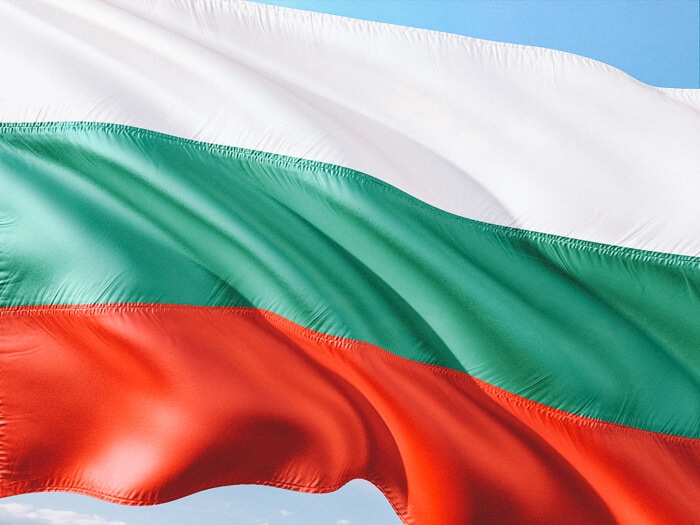
Check out this guide to plan your own Bulgaria holiday.
Bulgaria travel guide: quick facts
1. blagoevgrad, 6. kardzhali, 7. kyustendil, 10. pazardzhik, 13. plovdiv, 14. razgrad, 17. silistra, 19. smolyan, 20. sofia city, 21. sofia (province), 22. stara zagora, 23. targovishte, 25. veliko tarnovo, entry and exit requirements, independent travel around bulgaria, what to pack for bulgaria in summer, what to pack for bulgaria in winter, what to pack for bulgaria in spring and fall, the best time to visit bulgaria, what to eat in bulgaria, 10 events in bulgaria you can't miss, public holidays in bulgaria, cultural customs to be aware of in bulgaria, best places to stay in bulgaria, don't forget travel insurance, basic phrases and their pronunciation, is bulgaria safe to travel to, the use of cash and cards in bulgaria, calling abroad, wifi and data use in bulgaria, tipping in bulgaria, posts about bulgaria.
Size: 110,994 km² or 42,855 sq mi
People living there: more than 7,050,000
Capital: Sofia
Governmental structure: unitary parliamentary republic
National day: March 3
Time zone: Eastern European Time / UTC+2 / GMT+1
Currency: Bulgarian lev
Power voltage and socket type(s): 230V, plug types F and C. If these don't match with your devices, make sure to bring a universal adapter .
Official religion(s)/Freedom of religion: Freedom of religion. 60% of the population is Christian, followed by non-believing citizens, and Muslims.
Official language(s) and general knowledge of English: Bulgarian is the official language. Basic English is widely spoken in urban areas.
Drives on this side: right
International driver's licence accepted? yes
Phone code: +359
Can you drink tap water in Bulgaria? yes
Vaccinations needed? no
Want more quick facts about Bulgaria? This post is a list of cultural, historical, funny and other facts about the country.
Bulgarian provinces
Bulgaria has 27 provinces, or 28 if the capital Sofia is counted separately, of which none have an official name. There’s a lot of diversity between provinces. Those in the south are home to the beautiful Rhodope Mountains, whereas the Black Sea coast is home to the big cities of Varna and Burgas and some exceptional seafood.
Tourists traveling to the northwest of the country should be aware that it’s officially the poorest region in the EU and that they will see abandoned villages and extreme poverty. The provinces are usually referred to mentioning their provincial capitals. These are:
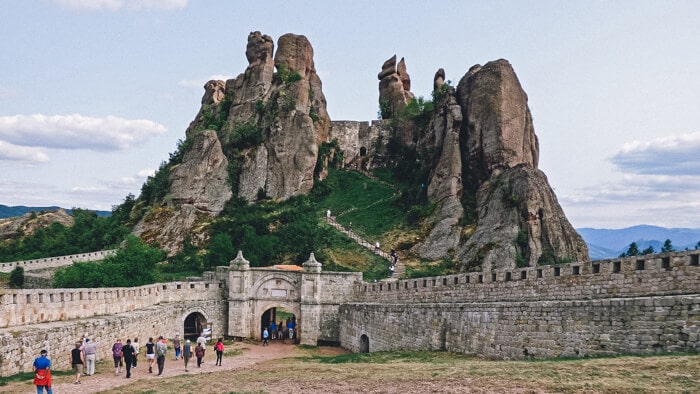
Kardzhali is famous for its Thracian ruins, which can be found throughout the province. There are also a number of unusual rock formations in the province including the Petrified Wedding, the Womb Cave, and the Stone Mushrooms.
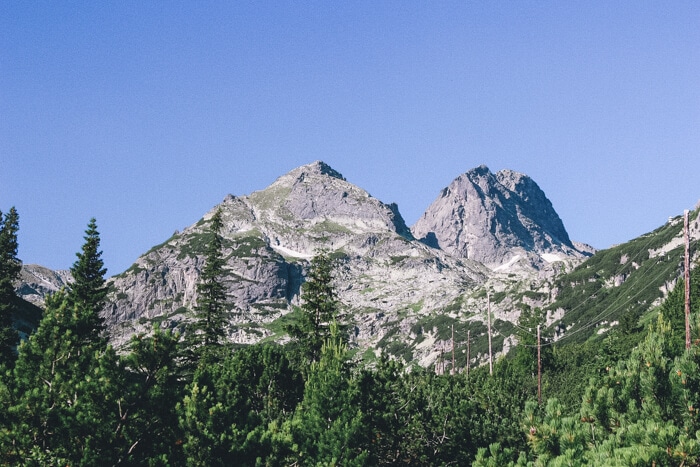
Montana is a region in the northwest of the country. Founded as a fortress on the Ogosta River in Roman times, the Montana Dam is a popular Bulgaria destination which offers sports, fishing, and water tourism.
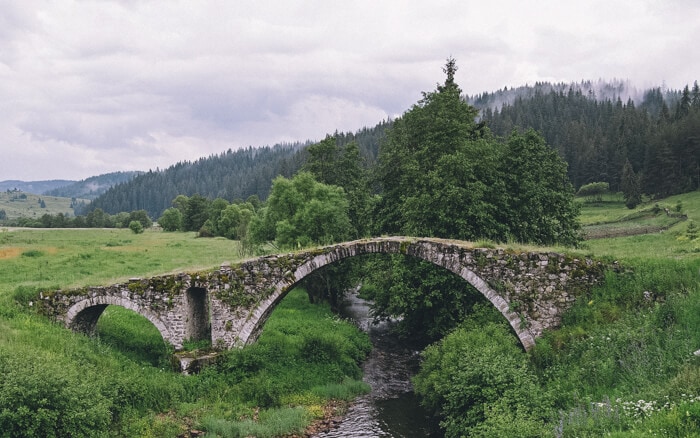
Pernik is a region which is best-known for its mining economy. So much so, that the only mining museum on the whole of the Balkan peninsula is located here. There are also a number of cultural sites including fortresses and Thracian temples.
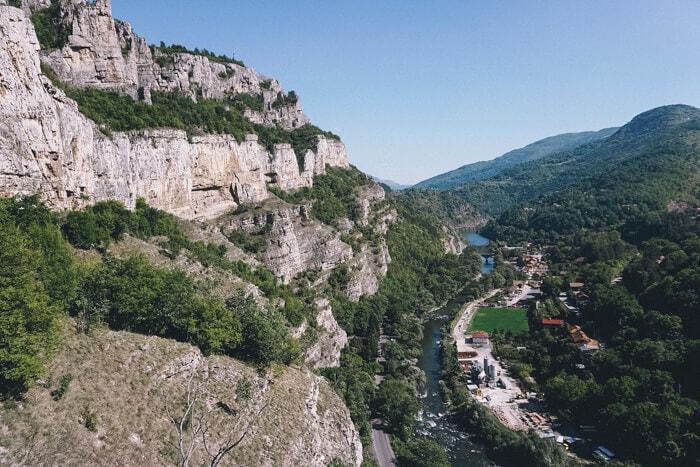
Razgrad sits upon important roads used in ancient times for crossing between Central Europe, the Black Sea, and Asia. Because of this, there’s a mix of architectural influences in the region’s capital, including the Ibrahim Pasha mosque and the city’s clock tower.
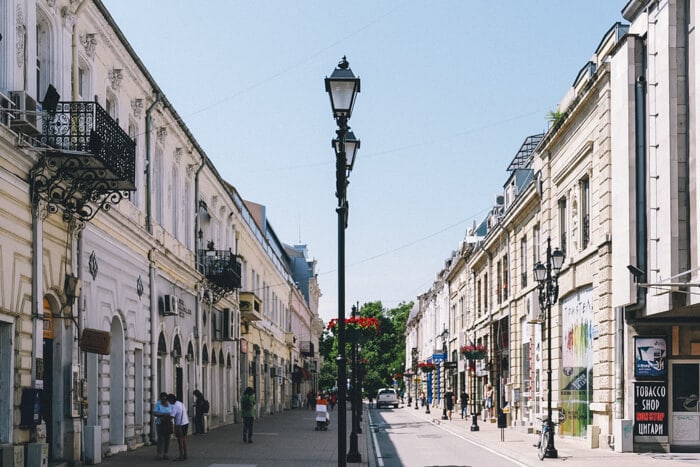
Smolyan is said to be in the most beautiful part of the Rhodope mountains, where the mythological singer Orpheus is said to have tamed the beasts of the mountains with his songs. There are a huge number of natural landmarks including the Wonderful Bridges, the Devil’s Throat, and the Uhlovitsa and Yagodina caves.
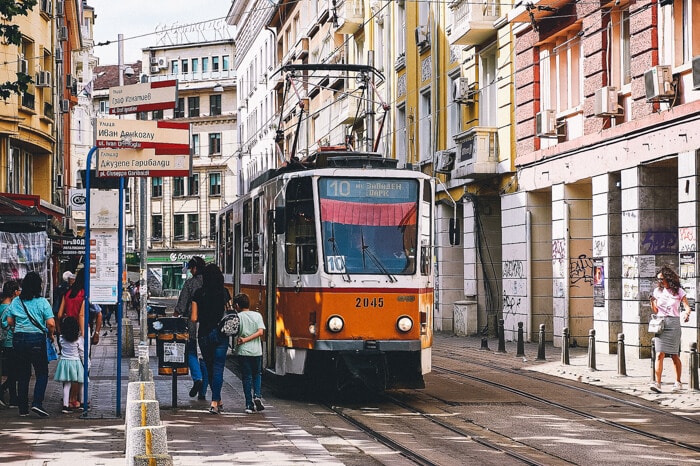
Vidin is the most north-westerly region of Bulgaria. There are a number of famous sights both natural and man-made in this small region, including Chuprene biosphere reserve, the Belogradchik Rocks, and ancient castles in Kula, Chichil, Florentine, and Topolovets.
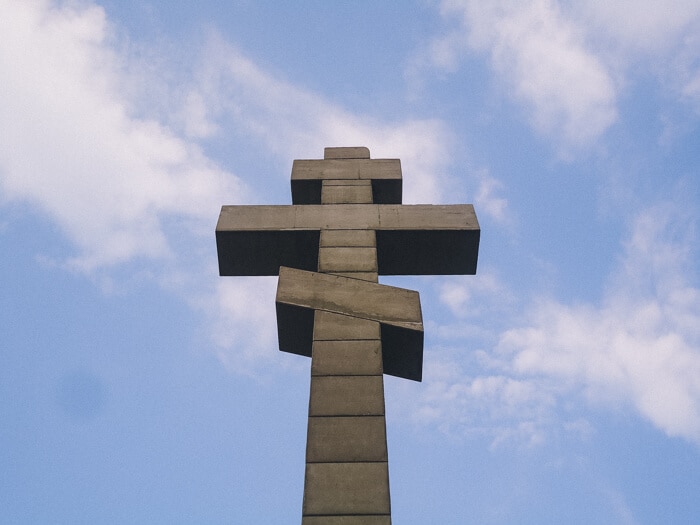
Yambol is a plain and hilly region, which shares a border with Turkey. Due to its proximity to Turkey, there are many sites where you can learn about the whole country’s struggle against the Ottoman Empire. The region is steeped in folklore, and there are regularly singing competitions and folkloric competitions in Yambol.
As you can see, there are plenty of things to do in Bulgaria but first, you need to get there…
How to travel to Bulgaria
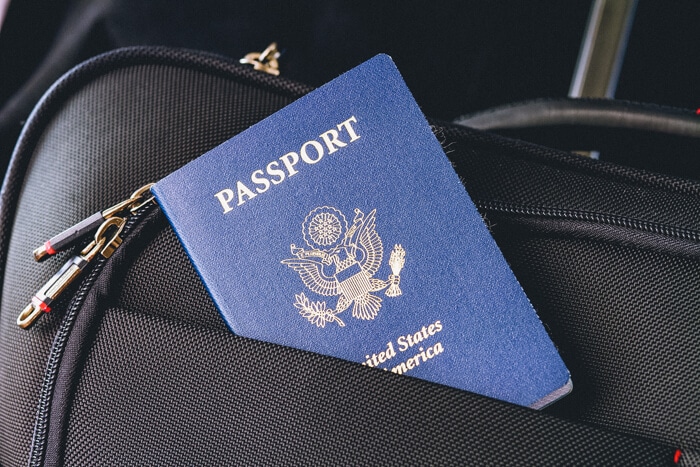
Citizens from the United States and the rest of the world do not need a visa for a stay of up to 3 months, but their passports must have at least 6 months validity remaining.
Transportation
When entering Bulgaria via land, there can often be long delays at border crossings, especially when you use public transport but also when you come by car. The longest delays tend to be at the Turkish border. Driving to Bulgaria can, therefore, be a bit of a hassle.
There are several international bus companies operating in all of the countries which share borders with Bulgaria. Most arrive in Sofia, but some will go directly to Plovdiv. When traveling in or out of Bulgaria, should you need a visa, the cost of this is not included in the bus ticket. There are usually long delays at border crossings, and you’ll have to either get off and present your passport or border officials will board your bus.
Flixbus offers cheap bus travel to Bulgaria.
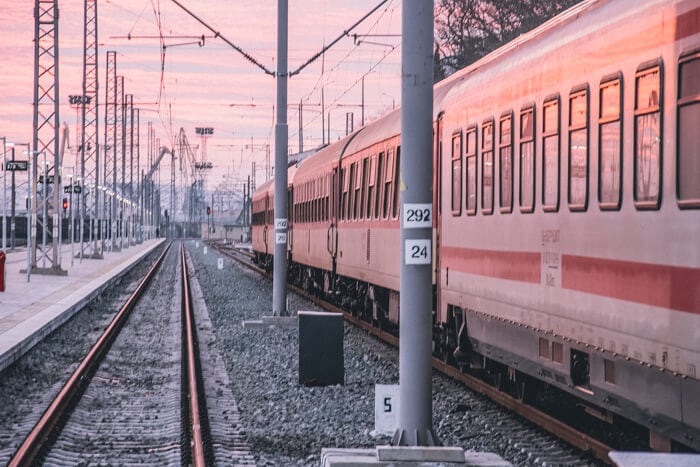
Check here for train routes and prices from within Europe.
There are two ferry services across the Danube for border crossings from Romania: Calarasi – Silistra and Bechet – Oryahovo.
Very few tourists leave or enter Bulgaria via the Black Sea. However, it is possible to travel from Varna to Ukraine/Georgia or vice versa with Navibulgar, who offer a passenger service onboard their cargo ships.
Bulgaria has a small number of international airports, with the most flights to Bulgaria going to the airport of Sofia. The majority of direct flights are to other European cities, although there are some to the middle east too. The other international Bulgaria airports are Varna, Plovdiv, and Burgas.
Check Skyscanner for a clear overview of your flight options and the best prices. Skyscanner lets you set flight alerts and shows you which month the prices are lowest. Very handy!
How to travel around Bulgaria
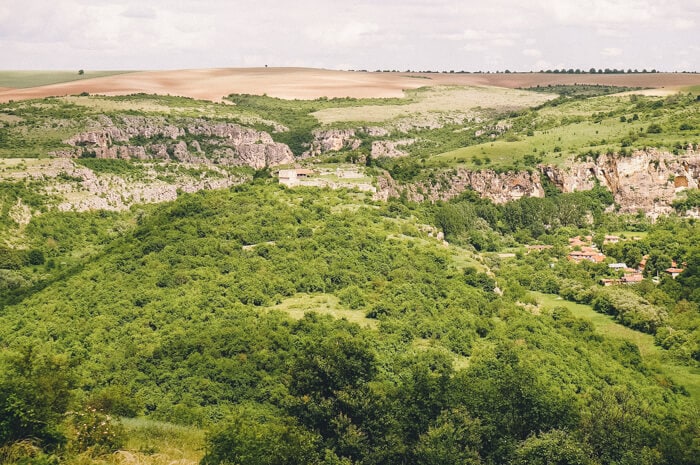
Thanks to more and more tourists going on vacation to Bulgaria in recent years, the infrastructure of the transport system has been updated regularly, and although the standards may not be as high as those in more developed European countries, it’s an easy and relatively inexpensive country to travel around.
Travel in Bulgaria and you'll find that buses are the most reliable mode of public transport to use, as services run between big cities, but also to small towns and villages throughout the country. Sometimes it’s a lottery whether or not you’ll get a comfortable and modern bus!
In the summer, some of the towns on the east coast are connected by ferry.
In terms of private transport, driving in Bulgaria is not for everyone. Bulgarians are known to drive aggressively, but you must keep a cool head, as road rage induced fights are not uncommon. Try to stick to main roads where possible too. Potholes plague Bulgarian roads, and some country backroads are almost impassable.
On the other hand, a rental car does offer you the most flexibility to go where you want to go, when you want to go there. For a good overview of prices, check here .
Lastly, if you’re driving your own car rather than a rental, you must have a vignette sticker to be legally driving here. These are easy to obtain and sold at all border crossings, petrol stations, and post-offices. They cost 15 lev for a week or 30 for a month.
What to pack for Bulgaria
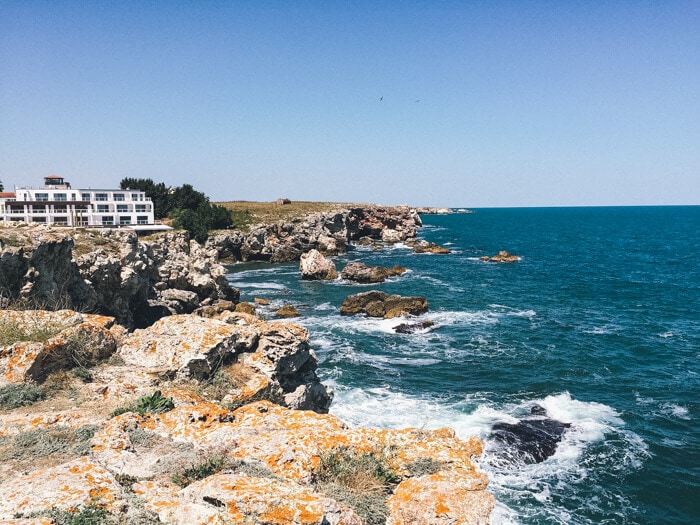
In summer, it can reach up to 40 degrees inland, whereas, in the winter, cold air from Russia can bring heavy snowfall, severe frosts, and strong winds.
- light clothing
- good walking sandals
- a reusable water bottle
- a warm and waterproof coat
- comfortable waterproof shoes
Late fall and early Spring can feel like winter while late Spring and early winter can feel like summer. These are shaky seasons and it's best to come prepared for big weather switches. Layer up and make sure to bring a waterproof coat and comfortable shoes.
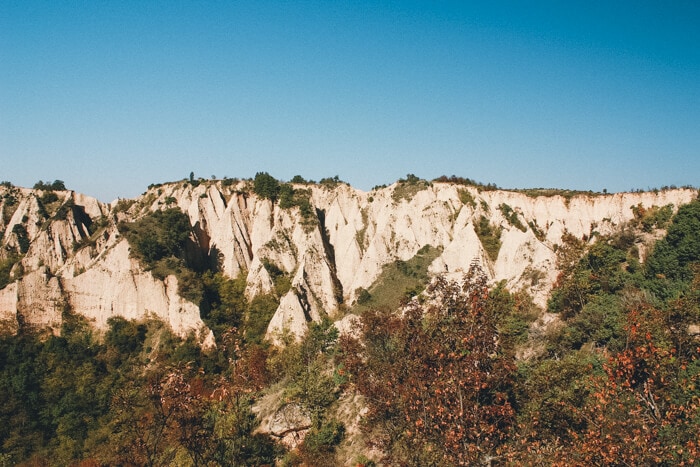
Beach holidays to Bulgaria are best taken between July and August when the high temperatures are tempered by a cool breeze from the Black Sea. However, if you’re traveling inland, it can get extremely hot at this time of year – up to 40 degrees Celsius.
For skiers, the regular season is usually from December to April. However, heavy snowfall means that winter sports are possible until June at some resorts.
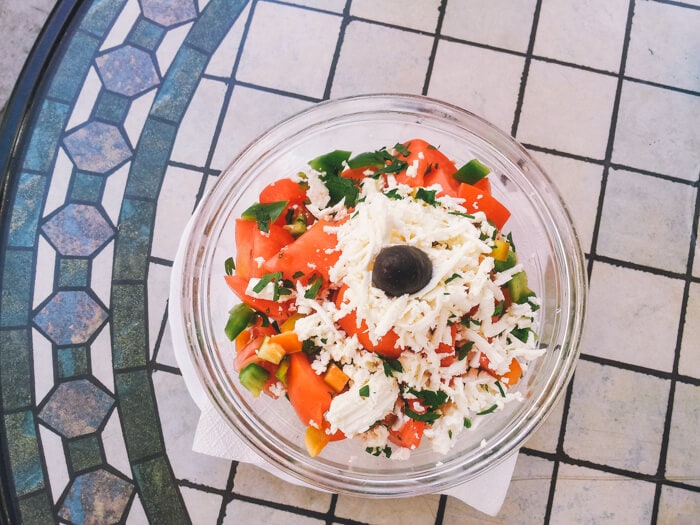
Shopska salad – The shopska salad is like a traditional Greek salad, but with soft Bulgarian cheese sprinkled over the top instead of feta.
Shkembe – A traditional tripe soup that consists of paprika, milk, and oil.
Tarator – A cold cucumber soup topped with yogurt, garlic, oil, walnuts, dill, and water. It’s often eaten in summer.
Lozovi Sarma – Minced meat, herbs, yogurt, and rice, all wrapped up in a vine leaf. Delicious!
Gyuvech – Actually, the name of the pot it’s cooked in, is a hearty stew consisting of beef, mushrooms, peppers, onions, and paprika. It’s often topped with a fried egg and/or cheese.
Moussaka – there are many variations of moussaka across the Balkans. Bulgaria’s moussaka relies on potatoes as a base, rather than aubergines (eggplant).
Kebapche – A variation on the traditional Turkish kebab, the Bulgarian version is set apart as sirene, a white cheese, is grated over it.
Kiselo Mlyako – This thick and sour yogurt is served alongside Bulgarian main courses. It’s good for keeping your gut healthy.
Baklava – Another food that is found across the Balkans and into the Middle East. Bulgarian Baklava is a filo pastry that's a bit less sugary than its Turkish counterpart.
Tikvenik – A tasty pastry dessert filled with pumpkin. There are also walnuts, orange zest, cinnamon, and nutmeg in there. &bsp;
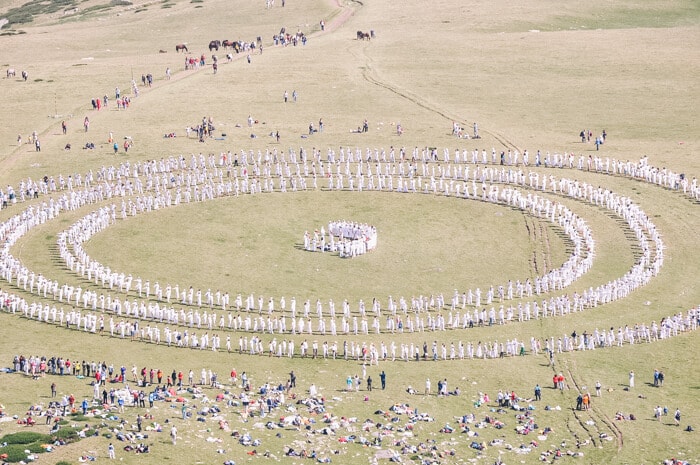
- the Rose Festival in Kazanlak and the Rose Valley
- Kapana Fest in Plovdiv
- Nestinartsvo, the Barefoot Fire Dance, in various villages in the Strandzha Mountains. The most popular one is in Bulgari
- Opera in the Park in Sofia
- Fesitval of Folk Art “The Magic of Rila Mountain” in Borovets
- Bourgas Sand Sculptures Festival
- Hills of Rock in Plovdiv
- the Bagpipe Contest in Gela
- Bansko Jazz Fest in Bansko
- Apollonia Festival of Arts in Sozopol

- New Year's Day
- Liberation Day (March 3)
- Orthodox Good Friday
- Orthodox Holy Saturday
- Orthodox Easter Sunday
- Orthodox Easter Monday
- Labor Day (May 1)
- St George's Day (May 6)
- Culture and Literacy Day (May 24)
- Unification Day (September 6)
- Independence Day (September 22)
- Christmas Eve Day
- Christmas Day
- Second Christmas Day
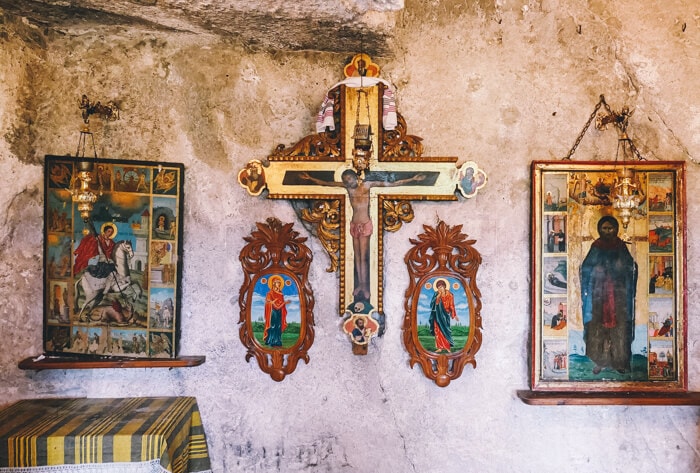
If you’re offered a chocolate from a box for any reason at all, take one, congratulate the person, and smile. Eating the chocolate is a form of congratulations and it’s offensive to say no.
Also, don't be surprised when people barely smile. It's not a sign of unfriendliness, I learned when I was there. Read more about this here .
Booking.com is my go-to site for booking hotels and guesthouses. It has a bunch of filtering options so I can easily get a list of only the hotels that meet my criteria. If you're looking for accommodation in Bulgaria, I highly recommend you check there .
Sometimes I rather stay in an apartment and to find one, I use Airbnb.
Plan for the best, prepare for the worst. Travel insurance has you covered in case (part of) your trip gets canceled, you get sick or hurt abroad, and sometimes even when your electronics break or get stolen. I always make sure I'm covered every trip I go on.
Don't have travel insurance yet? Check out SafetyWing. They offer super flexible plans that you can even sign up for while you're already on your trip. On top of that, they were the first travel insurance to cover COVID, and when I got COVID, they reimbursed all of my expenses without making a fuss. Their customer support team is great and I can personally recommend them.
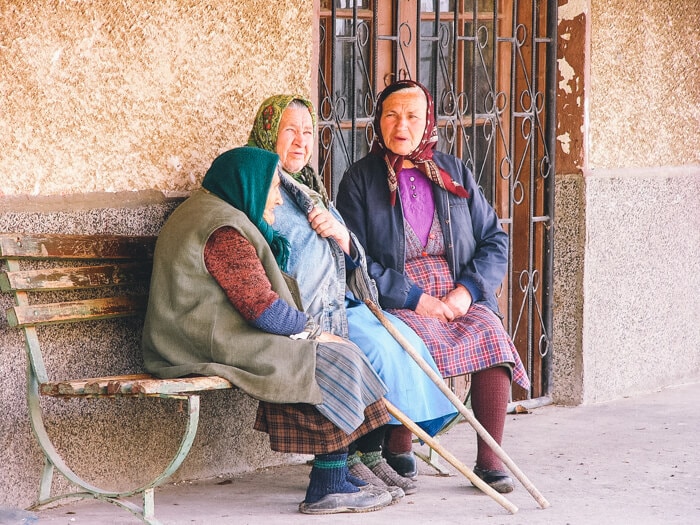
So how safe is Bulgaria? Well, Bulgaria is a very safe country that is peaceful and generally safe for travel. Like most European countries, the most common crimes you’re likely to face are pick pocketing or tourist scams. These are just as you would find in other European cities, so keep alert when you’re out and about, especially in tourist areas.
Unfortunately, a problem that is prevalent across Bulgaria is corruption. Every year, 14 – 22% of the country’s GDP is unaccounted for, meaning that services covered by the taxpayer, such as healthcare and education systems, state administration, and infrastructure, suffer. It’s unlikely to affect you directly as a traveler, but there’s a small possibility that you need to use any of these services during your trip.
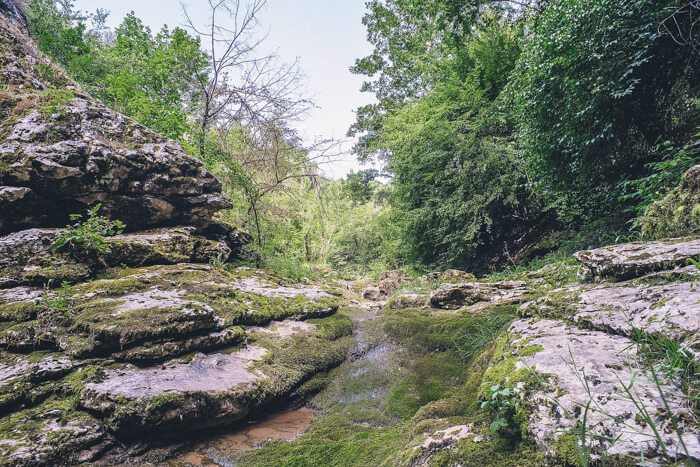
Taxi drivers are known to try and scam tourists, and a police officer might stop you and ask for a bribe if they notice you crossing the speed limits.
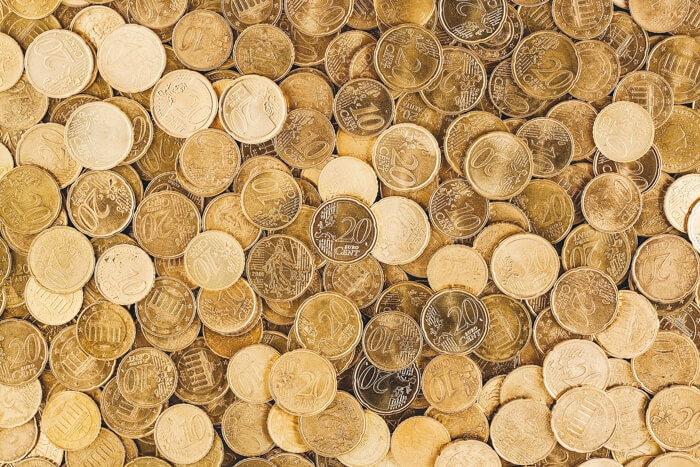
In major cities and tourist areas, you will have no problem finding an ATM. However, if you’re heading off the beaten track during your Bulgaria travels, be prepared and have money before you arrive, as not all small villages have an ATM.
When changing currency, do a bit of research to find out if you’ll get a better rate at home. In Bulgaria, only use an official exchange company to change money. Some unofficial exchange offices offer sketchy, and sometimes illegal, practices.
Those with a SIM card from an EU country shouldn't have to pay roaming charges when calling, texting, or using data in Bulgaria. The same goes for some global phone plans.
If you want to budget your phone use in advance of your trip and be sure of a connection, check out Solis Wifi .
Skyroam offers both day passes and monthly subscriptions providing you with 4G on your trips. I've been using their daily passes not just when I travel outside the EU (no roaming charges for me in the EU) but also as a backup for when I think I'll go over my phone's data plan.
Tipping has become quite custom and expected in Bulgaria. Salaries are low and staff at restaurants, for example, highly depend on tips to make a living wage. Check out this informative Bulgarian blog post to find more specific information on who to tip what in Bulgaria here .
A brief history of Bulgaria
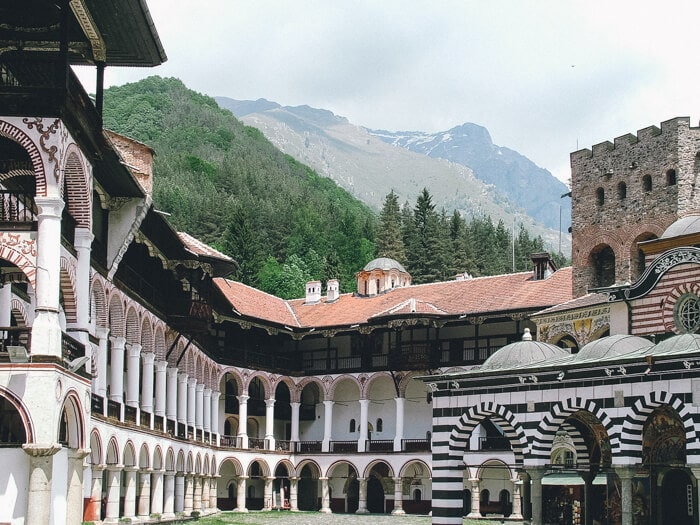
As the Roman Empire spread out over Europe, the Thracians were wiped out by 50AD. The Romans became a dominant force as the Slavs and moved south and east.
However, the Bulgars, a war-like tribe came from Central Asia and expanded their empire. The Bulgars and the Slavs cultures began to merge, and around the 6thcentury they became the first Bulgarians.
Bulgaria then became the largest and one of the most prosperous Kingdoms in Europe. Its area covered Greece, the Adriatic, as far north as Ukraine, and the Black Sea. It remained this way until around 1400, when the Ottomans arrived from the south.
During Bulgaria’s first 50 years under Ottoman rule, almost half of the population were killed or left to starve. Things improved over the subsequent 450 years in their power, and Bulgaria managed to keep maintain its culture, language, and traditions.
In the late 19thcentury, Bulgaria became liberated from the Ottoman Empire. It had help from Russia in defeating the Turks and became a large country which was subsequently split up.
The whole of the Balkans was in a period of unrest in the first half of the 20thcentury, with wars between countries as well as the First and Second World Wars. Although Bulgaria declared itself as neutral, the Germans infiltrated and occupied it. However, Bulgaria did not turn over its Jewish population.
After the Second World War, Bulgaria was ruled by a communist government. Under their rule, many enterprises were nationalized, and Bulgaria became an industrial power. However, under the Communist leader Todor Zhivkov, the economy started to fail, and the public was completely controlled. The fearsome social security police dealt with anyone who spoke out.
In the final years of communism, nationalism was fierce and Bulgarian minorities were denied education, work, and homes. When the Berlin Wall fell in 1989, Zhivkov was arrested for inciting racial hatred.
In 1991, Bulgaria adopted the governmental model it still has today. The current president is the 5thto be democratically elected, and he has pledged to maintain Bulgaria’s EU and NATO status.
And that's it! I hope this Bulgaria travel guide has given you some idea of what to see in Bulgaria and will be of help when you plan your Bulgaria vacation.
Find below our best travel guides about Bulgaria.

17 Superb Things to Do in Veliko Tarnovo, Bulgaria

20 Amazing Places to Visit in Bulgaria all year round!

18 Marvelous things to do in Plovdiv, Bulgaria

30 Best things to do in Sofia, Bulgaria

24 Impressive things to do in Varna, Bulgaria

10 typical Bulgarian food: The world needs to know how amazing Bulgarian cuisine is!

59 Fun Facts about Bulgaria (#22 is cool!)

The people of Bulgaria. Impressions of a first-time visitor
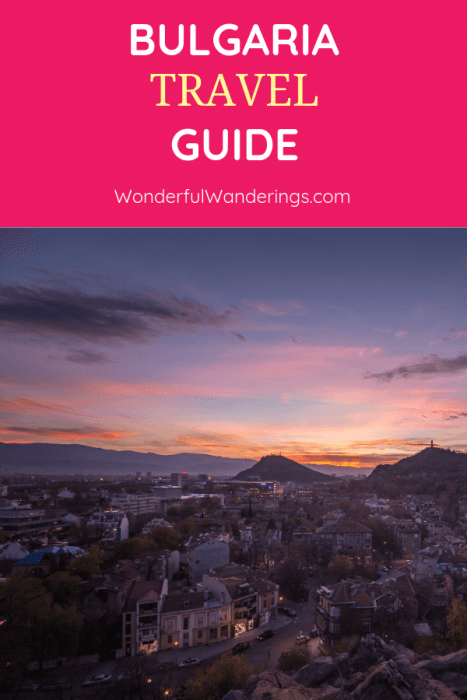
Join 58,000+ other Wonderful Wanderers!
As an Amazon Associate I earn from qualifying purchases.

- Bulgaria Travel Tips
Why Bulgaria? Bulgaria is a country in southeastern Europe. While it may not be as well-known as a tourist destination, there is plenty to do and see.
With its beaches, mountain huts, hearty food, historical monasteries, beautiful cathedrals, and Roman ruins, Bulgaria has a lot to offer.
This Bulgaria travel guide will help you plan your next vacation.
Popular Guides
- Places to Visit in Bulgaria
Our Highlight
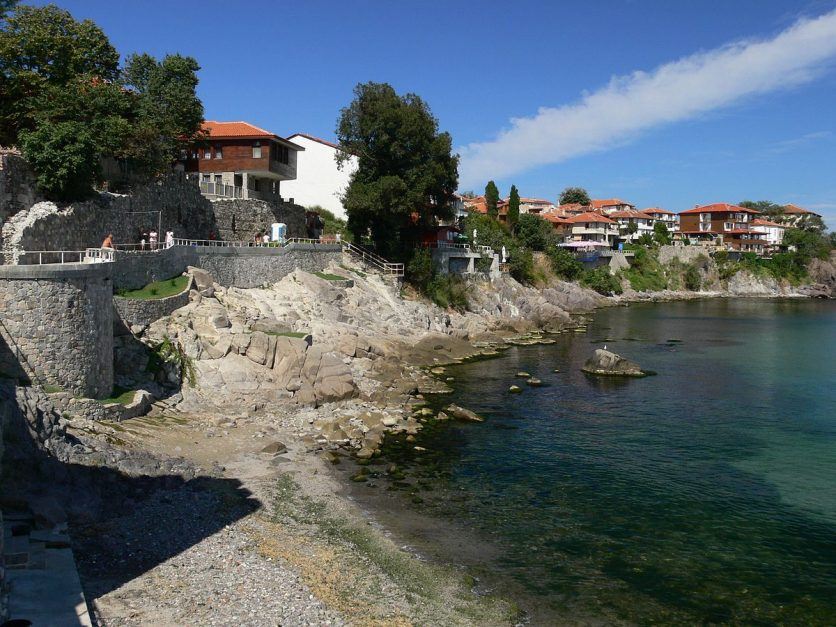
Table of contents
Table of Contents
Fast Facts about Bulgaria
- Power voltage is 230V at 50 Hz.
- The official currency is the Bulgarian lev and 1 lev is equal to 0.57 USD.
- The best way to get around is by car.
- To enter, you will need a U.S. passport valid for three months after entry.
- You do not need a visa if your stay is under 90 days.
- Vivacom, M-Tel, and Telenor are the most popular mobile providers. A prepaid SIM card can be purchased through either of them.
- The sales tax rate is 20%, with a reduced rate of 9% for hotel services.
Things to See and Do in Bulgaria
- Come explore the largest public park in Bulgaria . Located in Varna, the park includes beautiful gardens, a zoo with tigers, kangaroos and bears, and an aquarium.
- National Historical Museum: Come see the largest museum in Bulgaria. Featuring a vast collection of 650,000 historical items, there is plenty to see and learn here about Bulgarian history.
- Alexander Nevsky Cathedral: One of the largest Eastern Orthodox cathedrals in the world, come explore this majestic cathedral in Sofia.Dating back to 1912 and reaching heights of 148 feet, this cathedral holds numerous mosaics, murals, and royal thrones, as well as an Orthodox museum.
- Come see these Roman ruins. Built in the 2nd century AD, these ancient thermal baths were how the Romans once bathed.The third largest Roman ruins complex in Europe, the roman baths are a fascinating glimpse into the past.
Bulgaria Travel Guides
- 10 Places to Visit in Bulgaria This Year
Accommodation
Budget – You can find prices for a hostel for about 18-22 leva. Enjoy dorm-styled or private rooms, free breakfast, storage lockers, and great locations in the city.
Mid Rang e – For mid-range hotels, expect to pay between 60-80 leva per night. Stay in private rooms, workout at the fitness center, dine at the hotel restaurant and bar, and swim in the pool (indoor or outdoor).
High End – Upscale hotels will range from 150-300 leva per night. Take in the best with top-of-the-line service, polished guest rooms with minibars and refrigerators, room service, multiple restaurants and a nightclub, babysitting services, outdoor pools with a pool bar, and more.
Check out our favorite booking platforms Booking.com , Tripadvisor and VRBO for the best deals on accommodation in Australia
Food : The cuisine of Bulgaria favors vegetables, dairy, meat like pork or chicken, seafood, and spices as staples. Shopska salad (tomato and cucumber salad with Bulgarian feta cheese) and tarator (cold yogurt soup) are popular dishes.
If you’re out for breakfast or want a treat, try a banitsa, a pastry with cheese and yogurt. Expect to pay around 10-20 leva per meal for an average restaurant or 30-50 leva for high-quality restaurants.
The Best Ways to Get Around Bulgaria
Getting to bulgaria:.
Getting to Bulgario: The Sofia International Airport is the main airport and is just 6 miles from the center of Sofia, Bulgaria’s capital. Other major cities like Varna and Plovdiv also have their own airport, though only Varna takes flights from the US.
Flights: You can check for the best flights on Skyscanner
Transportation:
Train: Trains, especially overnight trains, are a good way to get a more scenic view of Bulgaria.There are three types of trains express (ekspresen), fast (barz) and slow (patnicheski). Go from the capital Sofia to Varna in 7.5 hours for 25-30 leva.
Buses : Buses are a cheap way to get around and can be found throughout major cities and towns. Fares start at about 1 lev.
Metro: Sofia has its own metro that travels throughout the city, with speeds up to 50 miles per hour. Prices start at 1.60 leva. The metro operates from 5 AM to midnight, with new trains arriving every 7-14 minutes.
Taxis / Uber : Taxis are an alternative way to get around. Most taxis have meters, though rates will vary. You can find taxis with a starting fee of 0.70-0.80 lev and a meter of 0.70 lev per kilometer traveled. Take a taxi from the airport to the city center of Sofia, for example, for about 15 leva.
Car Rental: To rent a car, you need to be at least 21 years old and have a U.S. license as well as an International Driver’s Permit. Prices average around 60 leva per day.
You can also compare prices here
When to go To Bulgaria
The best time to visit is right before or after the summer (April-May or September-October).
In these months, you can find lower prices while still having pleasant weather (about 70-75 degrees Fahrenheit for spring, 65-70 degrees Fahrenheit for autumn) for outdoor activities.
If you are going to Bulgaria to ski, then December-February is the best time, though note that some of the smaller towns will be shut down during this time.
Where to Stay in Bulgaria
Les Fleurs Boutique Hotel : Stay in this trendy four-star hotel in the capital of Sofia. Attractions like the National Palace of Culture and the Alexander Nevsky Cathedral are both just a short trip away. Once you’re done exploring, come back to relaxed rooms with minibars and flat screen TVs, complimentary breakfast, and the hotel’s restaurant.
Ramada Plovdiv Trimontium : Stay in the heart of Plovdiv at this great four-star hotel. Great attractions like the Plovdiv Roman Theater and the ruins of Nebet Tepe are just a 15-minute walk away. The hotel comes with free breakfast and Wi-Fi, an outdoor pool, and a casino.
Grand Hotel Varna : Be right by the Bulgarian Black Sea at this all-inclusive 5-star hotel in Varna. Stay in great rooms with balconies and sea views, head to the gym, swim in the outdoor pool, relax on the private beach, and dine at one of the 3 restaurants. Nearby attractions include the Sea Garden, the Aladzha Monastery, and Evxinograd, the 19 th -century palace.
What to Pack for Bulgaria
- Power Adapter: As the voltage is higher than the US, a power adapter will ensure all of your electronics can be charged properly.
- Walking Shoes: Keep your feet comfortable with a sturdy pair of walking shoes.
- Modest Clothing: If your trip itinerary includes going to monasteries, make sure to bring clothes that cover your knees and elbows
See our packing tips: packing tips
Bulgaria Travel Guide: Best Booking Resources
Whenever we travel to we make sure to start with these companies. We have tried a lot of different ones over the years and all of these have consistently proven to be the best when it comes to offering great prices.
We have used every one of these personally and continue to do so.
- Booking.com : This is our go site to when comparing prices for accommodation. It usually has the cheapest prices, especially in Europe and we love their interface. Not to mention you get free cancellation and you are guaranteed the best price.
- Trip Advisor : What we like about Trip Advisor is that we can look at all the reviews and then book our accommodation. TripAdvisor is where we go when we want to compare prices with multiple accommodation providers.
- VRBO : is the main search engine we use when we are looking for a home or apartment rental. It can sometimes be cheaper than hotels and it is the best way to stay in areas that offer a more local feel.
- Hostelworld : With one of the largest databases of hostels in the world, Hostelworld is the go-to site when you are looking for budget accommodation.
- Skyscanner : This is the first place we check for flights. It consistently comes back with the cheapest and best options. It allows us to compare a lot of airlines to get the best price.
- Rome 2 Rio : If you want to see how to get somewhere by plane, train, bus, ferry or car Rome2Rio lays it all out for you as well as related costs.I love how they show it all to you on a Google Map and it works offline.
- Get Your Guide: For all your day trip and city guide needs, we use Get Your Guide. It has the world’s largest collection of things to do with more than 30,000 activities in 7500 destinations.
- World Nomads Insurance: When traveling to Italy you should always have travel insurance. We have found the best bang for your buck is by far World Nomads.
Bulgaria Travel Guide: Related Articles

- ALL TRAVEL GUIDES
- DESTINATION FILTER
TOP OF PAGE
Quick Facts
Best Time To Go
Cost & Spending
Travel Tips
Regions & Highlights
What To See & Do
Itineraries
What To Eat
Where To Stay
Trip Planning

Welcome traveler!
We're Andre & Lisa, adventurers and experienced budget travelers.
We have over two decades of travel experience and since 2018 have led a full-time nomadic lifestyle.
L earn more about us !
Thank you for visiting and we hope you find value in our destination pages! We thoroughly research and curate all content ourselves and everything you find on this site is put together by only the two of us.

BULGARIA TRAVEL GUIDE
If you are keen on art and culture, Bulgaria is the ideal destination for you. Churches dating back centuries, Greek and Byzantine ruins, mountain villages, seaside resorts of the Black Sea, museums full of priceless treasures, walks in the fragrant Rose Valley and cities with lovely old houses spread out over cliffs - there's more to Bulgaria than words can conjure.
Sofia, the capital city, has something for everyone. A vibrant nightlife, the best East European architecture, excellent museums and even a ski resort - little wonder that there are hordes of tourists in the city throughout the year.
DO YOU NEED A VISA FOR BULGARIA?
<<VISA RESULT>>
<< Visa Details >>
For the latest requirements or for application click
Let iVisa take the pain out of travel planning and assist you with Electronic visas, Travel Authorizations, Visas on Arrival, and even Paper Visas. They can also help with Health Declarations and Embassy Registrations. If you're from the US, they provide a One-Stop Shop to renew your Passport securely and error-free.
⬇️ REGIONAL GUIDES ⬇️
Travel guide.

⬇️ COUNTRY GUIDE ⬇️
- Capital: Sofia
- Currency: lev (BGN)
- Area: 110,910 sq km
- Population: 7,000,000 (2009 est.)
- Language: Bulgarian
- Religion: Bulgarian Orthodox 83.8%, Muslim 12.1%, Roman Catholic 1.7%, Jewish 0.1%, Protestant, Gregorian-Armenian, and other 2.3%
- Electricity: 220V/50Hz (European plug)
1 Jan New Year’s Day.
3 Mar National Day (Day of Liberation).
1 May Labor Day.
6 May St George’s Day (Day of Bulgarian Army).
24 May St Cyril and Methodius Day (Day of Culture and Literacy).
6 Sep The Unification of Bulgaria.
22 Sep Independence Day.
1 Nov Day of the Bulgarian Revival Leaders.
24 Dec -25 Dec Christmas.
31 Dec New Year’s Eve.
Bulgaria hosts its most famous event- The Festival of Masquerade Games in Pernik in the month of January. People from all over Europe and other parts of the world come to attend and join the festivities. It is a festival which brings about 90 folklore groups from the regions of Bulgaria and all around the world to perform the ritual games of “kukeri” (masked men) to honour the god Dionysus - god of wine and ecstasy. Participants dress in their rural traditional costumes and dance to compete with others. This festival is fun of fun and energy. They also perform the ancient rite of chasing away evil and celebrate the beginning of spring and hopes for a successful harvest and a better life.
International Puppet Theatre Festival takes place every September to entertain both young and the old. Professional companies from all over come to participate in the event.
QUICK BOOKING RESOURCES

SEASONS AT A GLANCE
Most destinations have different times of the year when they’re more or less popular with tourists.
Peak Season
Shoulder Season
Off Peak Season

BEST TIME TO VISIT BULGARIA
Bulgaria is characterised by two climatic regions: a continental climate in the North and a Mediterranean climate in the south. The continental climate is generally humid and characterised by cool summers. The continental North also tends to have higher variation in temperature and precipitation compared to the coastal regions.
The best time to visit Bulgaria is in the summer, around July or August; when it’s least cold and average temperatures hover around 30 degree Celsius. It can be pleasant and rarely gets excessively hot. Spring (April and May) with an average temperature of 23 degree Celsius and autumn (September and October) with an average temperature of 17 degree Celsius is a good time to be in the country if you don’t mind the slightly chilly weather. What’s particularly good about visiting Bulgaria in the spring or autumn is that its off-season and you won’t find yourself being jostled about by crowds of fellow tourists. Winter (December to April) is good only if you like winter sports- especially skiing- and don’t mind the cold.
February - Pop your cork at Melnik's Golden Grape Festival.
June - Celebrate the sweetest harvest at Kazanlâk's Rose Festival.
July to September - Spend lazy days on the Black Sea beaches and nights at Bulgaria’s best clubs.
BEST TIME FOR:
The snow sports season in Bulgaria is from December until April when the snow is thick and consistent.
The best time for outdoor activities in Bulgaria is from April to October, with plenty of options for guided and self-guided hiking routes.
Bulgaria has some beautiful beaches with a summer beach season stretching from May to October.
Despite the inconsistency in summer and cold waters in winter, Bulgaria can offer some good surf throughout the year. These are the best surf spots in Bulgaria: Shabla, Kabakum Beach, Harmani, Arkutino and Melnitsa.
The best winds for kitesurfing in Bulgaria are usually from March to October, making it a great summer kitesurfing destination for all levels of kiters.
For more details on kite surfing in Bulgaria expand this section!
FIND ALTERNATIVES TO BULGARIA?
Find your perfect destination.
Advanced, real-time destination filter by visa required, region, health risk, travel budget, country value, tourist seasons, best weather and activity or sport.
MORE POSTS ON BULGARIA

WEWILLNOMAD

BULGARIA TRAVEL COSTS
For long distance travel across Bulgaria, trains and buses are the cheapest and most extensive choice- they spread over nearly all of the country and fares are quite reasonable. The only problem is that they tend to be unreliable, usually behind schedule and sometimes a bit of a culture shock. If you’re very particular, you might prefer to use your own car , or hire one; a hired car is, anyway, one of the best options within cities, although most have a fairly convenient bus network and taxis .
VALUE RANK:
Find discount flights to bulgaria, travel tips for bulgaria.
Travel Tips Section
REGIONS & HIGHLIGHTS OF BULGARIA
There is a wide variety of historical, natural, religious and artistic sights around Bulgaria. All across the country, there are remains of different epochs and eras, societies and peoples, spiritual and artistic personae that create a beautiful mix of ethnic culture full of unique traditions and rituals combined with a sense of belonging to the movements that have shaped the world as we know it today. The Bulgarian tourist movement, established more than one hundred years ago, has promoted the acknowledgement of all the sights that form the distinguished Bulgarian identity through its so-called " 100 Tourist Sites of Bulgaria " program that covers most of Bulgaria's must-see attractions. Of course, nowadays the program includes more than two hundred and fifty one-of-a-kind places of interest but the name still remains.
WHAT TO SEE AND DO IN BULGARIA
Some of the most popular sites include:
- UNESCO's World Heritage sites - Ancient City of Nessebar, Boyana church, Madara Riderstone carving, Rila Monastery, Rock-Hewn Churches of Ivanovo, Thracian Tomb of Kazanlak, Thracian Tomb of Sveshtari being the historical, and Pirin National Park, Srebarna Nature Reserve being the natural.
- Monasteries of Bulgaria that have been centres of Bulgarian culture during the Ottoman rule such as Bachkovo Monastery, Troyan Monastery, Dryanovo Monastery, Osenovlag Monastery, etc.
- Natural creations in the Bulgarian mountains that are a combination of awe to the beautiful natural forms and the exciting feeling of danger in the face of the sharp edges and deep ravines created solely by wind and water. Some of the most popular natural creations are the caves Dyavolsko Garlo (The Devil's Throat), Ledenika (The Ice-Cold), Magurata which has cave paintings on its walls and Snezhanka (Snow White), the canyons of Trigrad and the river Erma, Chudnite Mostove (The Marvellous Bridges) rock phenomena, and the natural pyramids near the town of Melnik and the ones near the village Stob.
- Fortresses from the Middle Ages such as Tsarevets in Veliko Tarnovo, Baba Vida in Vidin, Tsari Mali Grad near Samokov, the Fort of Samuil near the village of Strumeshnica and the Fort of Asenevtsi near Asenovgrad.
- Remains from the cities of Ancient Greece and the Roman Empire in Sofia, Plovdiv, Nessebar, Sozopol, Razgrad and many many other cities and towns.
- Architectural historical reserves like the towns of Koprivshtitsa, Bozhentsi, or Daskalolivnitsa in the town of Elena, Plovdiv's Old Town, the Varosha neighbourhood in Blagoevgrad and the neighbourhood of Arbanasi in Veliko Tarnovo.
- Sacred places of Perperikon and Rupite , the many ancient and medieval churches in the country, and the tombs of the Thracian kings.
Sofia — the capital and largest city in Bulgaria, one of the oldest in Europe, featuring a nice town centre with Renaissance and modern influences, many parks including the National park "Vitosha" (which is just minutes away from the city centre), a vibrant nightlife, over 250 historic landmarks and architectural monuments, and plenty of cultural places of interest.
Burgas — known for its commercial port (Port of Burgas) and oil refinery, the city has a picturesque waterfront, nearby downtown and rich shopping areas that make it popular with tourists. In recent years the city hosts the popular music festival "Spirit of Burgas".
Gabrovo — A popular tourist destination near the geographic the centre of the country, providing quick access to other cities, such as Veliko Tarnovo and Kazanlak, as well as the Balkan Mountains and the ski-resort of Uzana. The architectural-ethnographic resort Etar is situated near the town.
Pleven — a historical city, famous for its Panorama monument and for its beautiful parks and fountains in the city centre.
Plovdiv — Bulgaria's second-largest city, situated on both banks of the Maritsa river, it boasts a lovely shopping promenade and many parks. It's an ancient city with influences from many epochs including a preserved ancient Greek amphitheatre, a Roman stadium, a "Bulgarian revival" style Old Town, and a variety of mosques, catholic cathedrals and orthodox churches all across the city. Plovdiv is also famous in the country for its hectic nightlife. Though the city has a modern lifestyle it is one of the oldest in the world and debatable - the oldest in Europe. Be sure also to take a side trip to Bachkovo Monastery which is about an hour away.
Rousse — known as the "Small Vienna", the town centre offers an impressive architectural Baroque ensemble that cannot be found anyplace else within Bulgaria. The city boasts various places of interest among which the Sexiginta Prista Roman Castle, Rousse's Theatre, The House of Caliopa, and the Pantheon.
Varna — the nation's third-largest city is a lovely combination of a beach resort with a famous nightlife and an urban centre. Varna's coast garden is filled with entertainments and can also be appreciated by art lovers.
Veliko Tarnovo — picturesque university city near the Yantra river that was the capital of the medieval Bulgarian Empire and still has one of the best-preserved medieval fortresses on its background.
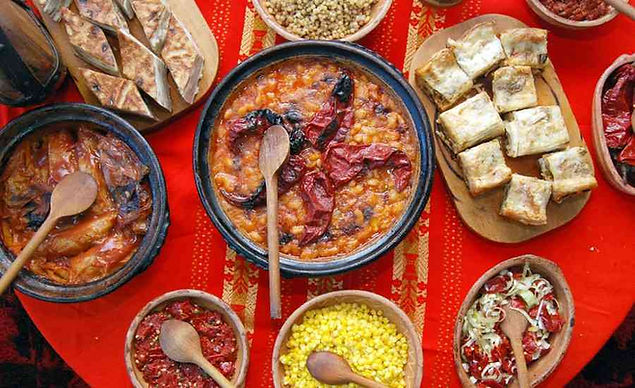
WHAT TO EAT IN BULGARIA
Bulgaria’s food is a rather rustic fare, wholesome, well balanced and with a good mix of flavours, sometimes surprisingly spicy for European cuisine. The local people consume a large amount of meat and fish - there’s a particularly good fish soup from the Danube region, and Sozopol-style mussels are famous throughout the country and lots of vegetables. Foods are often stewed or grilled and served with a wide range of cheeses, bread rolls and wines.
Among Bulgaria’s best-known dishes - many of which are shared with, or influenced by, nearby Greece, are Bansko-style kapama , a meat and vegetable stew, banitsa (cheese pie), stuffed vine leaves, moussaka , baklava , and pancakes with honey and walnuts. Coffee is a speciality of the Bulgarians and is consumed in almost as large quantities as the wines are.
LGBTQ IN BULGARIA
I'm a paragraph. I'm connected to your collection through a dataset.

WHERE TO STAY IN BULGARIA
For first-time visitors to Bulgaria, choosing the right area or region to stay in is essential for experiencing the country's diverse landscapes, rich history, and cultural heritage. Here are some recommendations along with accommodation suggestions for each category: budget, mid-range, and luxury.
Where to stay in Sofia:
Sofia, the capital city of Bulgaria, offers a perfect blend of history, culture, and modernity, with its ancient ruins, Orthodox churches, and vibrant arts scene, making it an ideal base for exploring the country's capital and nearby attractions.
Budget: Hostel Mostel Sofia - Affordable hostel located in the city center, offering dormitory and private rooms, free breakfast, and a communal lounge area.
Mid-range: Hotel COOP - A comfortable hotel set in a historic building, featuring modern rooms, sauna and fitness centre, and a central location near Sofia's main sights.
Luxury: Sense Hotel Sofia - A luxurious hotel offering stylish rooms, gourmet dining options, a rooftop bar with panoramic views of the city, and a spa.
Tips: To find the best value accommodation in Sofia, consider visiting during the shoulder seasons (April to June and September to October) when prices are lower, and there are fewer tourists, but the weather is still pleasant for exploring the city.
Where to stay in Plovdiv:
Plovdiv, one of Europe's oldest cities, is known for its well-preserved Roman ruins, charming Old Town, and vibrant cultural scene, offering visitors a journey through centuries of history and architecture.
Budget: Old Plovdiv House Hostel - Affordable hostel located in the heart of Plovdiv's Old Town, offering dormitory and private rooms with traditional Bulgarian decor.
Mid-range: Hotel Ego - A boutique hotel featuring stylish rooms, a restaurant serving Bulgarian cuisine, and a central location near Plovdiv's major attractions.
Luxury: Belle Ville Hotel - A luxurious hotel offering elegant rooms, gourmet dining options, a spa, and panoramic views of Plovdiv's Old Town from its rooftop terrace.
Tips: For the best value accommodation in Plovdiv, consider visiting during the summer months (June to August) when prices are lower, and you can take advantage of outdoor events and festivals in the city.
Where to stay in Bansko:
Bansko is Bulgaria's premier ski resort town, nestled at the foot of the Pirin Mountains and offering excellent skiing and snowboarding opportunities in the winter, as well as hiking and mountain biking in the summer.
Budget: Le Retro Hostel & Bar Bansko - Affordable hostel located near Bansko's Old Town, offering dormitory and private rooms, free Wi-Fi, and easy access to the ski lifts.
Mid-range: Grand Hotel Bansko - A comfortable hotel featuring modern rooms, a spa, and a central location near Bansko's ski slopes and hiking trails.
Luxury: Kempinski Hotel Grand Arena - A luxurious hotel offering luxurious rooms, gourmet dining options, a spa, and ski-in/ski-out access to Bansko's ski area.
Tips: To find the best value accommodation in Bansko, consider visiting during the shoulder seasons (May to June and September to November) when prices are lower, and you can still enjoy outdoor activities without the crowds.
CHOOSE ANOTHER DESTINATION
Recent blog posts, plan your trip, visa services, let ivisa take the pain out of travel planning and assist you with electronic visas, travel authorizations, visas on arrival, and even paper visas. they can also help with health declarations and embassy registrations. if you're from the us, they also provide a one-stop shop to renew your passport securely and error-free..
FLIGHTS Find a cheap flight by using Sky scanner or Momondo . These are our favourite flight search engines. They index other travel websites and airlines across the globe to easily find you the best deal.
ACCOMMODATION
Booking.com is our number one resource for researching and booking accommodation. In addition to Booking.com , we have found Agoda.com to consistently returns the cheapest rates in Southeast Asia.
TRANSPORT
DiscoverCars.com is a leader in online car rental bookings; we compare car rental deals from many companies so that you can choose which is best for your trip. 12Go connects the world door-to-door, from transfers to flights, under the same user-friendly ticket.
INSURANCE Travel insurance can protect you against unexpecte d illness, injury, theft, and cancellations.
Heymondo (International Travel Insurance)
World Nomads (Travel / medical insurance for long-term travellers and nomads)
SafetyWing Nomad Insurance (Travel / medical insurance for long-term travellers and nomads)
Need more help to book your trip? Check our complete resource page for all the best companies to use when you travel. You will only find the companies we use ourselves.
Please note that some of the links above may be affiliate links, and at no additional cost to you,
we may earn a commission if you end up making a purchase.
Create an account
Start your adventure today.
Already a member? Login

An Extensive Travel Guide to Bulgaria
Quick navigation, about bulgaria.
- Best Places to Visit
- Best Things to Do
- Great Adventure Trips
- Bulgaria's Outdoors
- Travel Costs
- Travel Safety
- Best Time to Visit
- Best Ways to Get Around
- Best Places to Stay
Useful Travel Tools
- Visa Requirements
- Interesting Facts
- Frequently Asked Questions
Other Related Stories
Join our newsletter.
Get a weekly dose of discounts and inspiration for adventure lovers
You’ve made the right choice. Adding Bulgaria to your travel list, or even considering it, is a decision you will not regret. Bulgaria appeals to all types of wanderlust: outdoor lovers, beachgoers, culture and history buffs, foodies, and foreigners who enjoy being immersed in a place where they can’t read the signs or understand what people are saying (unless you’re Bulgarian or can read the Cyrillic alphabet). It sounds like a cliché, but Bulgaria truly has something for everyone. We’ve compiled this extensive guide to help you plan your ideal trip to this Balkan destination.
Disclosure: This post contains references to products or services from one or more of our advertisers. We may receive compensation when you buy one of these products or services. For an explanation of our Advertising Policy, visit this page .

Seven Rila Lakes hiking in Bulgaria
Surely, you’ve heard of the country Bulgaria before, but could you place it on a map? Do you know what the geography is like (spoiler: it’s ideal for outdoor adventurers) and what kind of cuisine they serve? This extensive travel guide will inform you about all things Bulgaria, from travel tips on how much to budget to the best ways to get around and, of course, the country’s must-visit list. We include some epic adventure trips, too, for those who need a kick of inspiration.
Here’s a non-exhaustive summary of Bulgaria. Notably, Bulgaria has been around for millennia—the first Bulgarian Empire was established in 681 AD. You can assume just from that three-digit-date that the country has seen a lot of history, been under several different leaders, and has a rich tapestry of culture as a result. The fun fact is, it has always been named Bulgaria . The Bulgarian language has evolved, like all languages, but it has remained the same since the region’s inception.
Geographically, Bulgaria acts as a middle point between eastern Europe and the western Asia. It’s surrounded by Turkey, Greece, North Macedonia, Serbia, and Romania, with an inviting coastline on the Black Sea (in order from the southeast going counter-clockwise). Unlike other countries in the Balkan Peninsula that gained independence from the collapse of former Yugoslavia, Bulgaria announced independence in 1908 from the Ottoman Empire.
When you travel to this undeniably fascinating country, you’ll enter into a world of tangible history. Speak to one of the seven million locals and learn their stories over a glass of potent brandy known as rakia. You can customize your trip to Bulgaria however you see fit, whether you want to hike, trek, swim, bike, learn, eat, drink—the possibilities are limitless. This extensive guide should give you a solid footing to plan your trip to Bulgaria, on a specific route in the country, or on an adventure tour .
Best Places to Visit in Bulgaria
You may want to read this section twice because the names of towns, landmarks, and mountains don’t always give English clues as to what they are just by looking at the name. Our tip? Read through and jot down what jumps out at you to help formulate your trip to Bulgaria.
Rila National Park
We’ll start with the mountains, because, well, you can guess why! Mountains are what draw us all to new destinations. The geography of Rila National Park is enough reason to add Bulgaria to your travel list. The Rila Mountains comprise several breathtaking trails leading to alpine lakes among grassy peaks with views for miles.
Walking through Rila National Park overwhelms your senses with stop-in-your-tracks views, fragrant floral meadows, and ideal hiking conditions from June to September. For hikers, the classic Seven Rila Lakes hike draws the biggest crowds. It’s a hit for sure, but one of our favourite trails climbs up Malyovitsa Mountain , a staple in Bulgarian mountaineering and a challenge well worth the effort. To reach one of the mystical lakes in this area, head out on the Yonchevo Lake Hike and prepare to be stunned by its beauty. Stay in the rustic mountain huts for some nourishing meals, or choose a luxury resort in Borovets for supreme comfort. We could blabber on about Rila National Park forever—it’s that impressive!

Russian church of Kazanlak Bulgaria
Rila Monastery
Within the confines of Rila National Park exists one of the most significant cultural spots in Bulgaria. The Rila Monastery deserves its own section in this travel guide. Even though it draws the most tourists and can get super crowded during high season, it is worth it—and it’s enormous, so chances are you’ll be able to find some breathing room to admire this spiritual hub. A UNESCO World Heritage Site, the Rila Monastery, was founded in the tenth century by St. Ivan of Rila. This hermit lived in a cave near the current site, and the immense religious building was constructed by students who came to study under the man. About 300 rooms filled the monastery, many of which housed monks and others that acted as drawing rooms, libraries, dining rooms, hospitals, and chapels. You’ll want to book a whole day here, even though a lifetime wouldn’t be long enough to admire the paintings, frescoes, construction, and surroundings.
Pirin National Park
South of Rila National Park sits another protected area perfect for adventurers year-round. Pirin National Park boasts epic hiking and biking trails during summer and turns into a winter playground for snow-lovers when the ground is covered in fresh snow. Head here to be immersed in nature among scenery filled with hundreds of peaks, a shocking number of lakes (176!), wildlife roaming freely, and panoramic views. Trails wind to all kinds of impressive places, like the highest mountain in the Pirin range, Mount Vihren , at 2,914 m . Beginners can step into this surreal mountain world by heading to Mount Polejan , where the vistas will inevitably make you feel small in this vast, natural world. Bansko sits within Pirin National park, where snow-lovers flock to its charming ski resort for mulled wine and epic lines, and thrillseekers head on two wheels when they want some gnarly downhill excitement. If you’re travelling to Bulgaria for outdoor adventure, you must, 1000%, add Pirin National Park to your itinerary.
Rhodope Mountains
After reading about Rila and Pirin, how could there possibly be more epic mountains in Bulgaria, you ask? Well, that’s the nature of things! The Rhodope Mountains straddle the Bulgarian-Greek border and offer adventurers a limitless natural playground, especially hiking and mountain biking. The Trigrad Gorge carves through vertical marble rocks lending to prime biking and hiking journeys. Venture to the Devil’s Throat Cave that might make you feel as though you ate too many Alice in Wonderland potions. Visit both of these spots on the Cycling Tour in the Rhodope Mountains . For a respite from the mountains, head to Zlatograd, a small town near the Greek border, full of adorable houses tucked into the lush forest.
A must-visit list of Bulgaria cannot exist without Sofia, the capital. Not far from Bulgaria’s mountain ranges, the capital city holds territory in the western part of the country, about six hours drive from the Black Sea coast on the east. For culture buffs, a few days in Sofia will fill your cup easily. The capital city is home to the National Palace of Culture, the Serdica Amphitheatre, the National Archaeological Museum, the Alexander Nevsky Cathedral, and the National Opera and Ballet of Bulgaria. Take yourself on a gastronomic tour and try Bulgaria’s finest local dishes.

Tryavna Bulgaria cobblestone streets
Now, let’s head to the coast. The Black Sea coastline in Bulgaria has a handful of fantastic seaside towns, many of which are steeped in history. Nessebar, recognized for its unique peninsula that houses its Old Town, offers weary travellers a tranquil place to relax. Feel the sea breeze while you stroll the cobblestone streets of the Old Town and pretend you’ve walked back in time hundreds of years. Visit the ancient windmill, fortress, and churches that remind visitors of this area’s past. And, as any beach destination offers, hit the sandy shores to chill or go kitesurfing, surfing, or scuba diving. After your full day of activities, fuel up with fresh seafood.
During summer, Sozopol shines as a coveted getaway. It’s one of the oldest settlements on the Bulgarian coast and has been an artistic hub for centuries. The authentic charm remains palpable in the Old Town, the restaurant menus exceed expectations, and accommodation could be anything from luxury hotels to cutesy villas. To the north of this beach resort, Nessebar sits across Burgas Bay, and you can take a ferry between the two seaside towns. A nice half-day trip from Sozopol takes you to the Ravadinovo Castle, a unique attraction that looks like a medieval castle. It was built in the late 20th century, a project spearheaded by one man, Georgi Kostadinov Tumpalov.
Pobiti Kamani and Pliska
Are you interested in phenomenal rock formations? Great! Head to Pobiti Kamani , which is just east of Varna, the largest city on the coast. This stone dessert, or fossil forest, holds UNESCO recognition. The rock formations are mainly stone columns filled with sand, which could occur from sandstorms and twisters. This area is one of the only desert areas in Europe, stretching 13 square kilometres. If you want to see cacti and desert reptiles in Bulgaria and be wowed by these natural rocks, don’t miss Pobiti Kamani. Not far from here, you can visit the first capital of the Bulgarian Empire, now an archaeological site of ruins, Pliska.
Kazanlak and the Thracian Tomb of Kazanlak
Kazanlak and its surroundings abound with attractions and delights. The city itself is nestled in the Rose Valley, where an exorbitant amount of the world’s rose oil is produced. You can observe the harvest in May and June on your own or experience a celebration of the fragrant flower at the yearly rose festival at the end of May. Just outside the city centre, the Thracian Tomb of Kazanlak attracts visitors for its ancient wonder. Built between the fourth and third centuries BCE, the tomb belonged to a Thracian ruler and has works of art preserved from the early Hellenistic period.

UNESCO site Pobiti Kamani ruins
Tryavna may not be at the top of everyone’s Bulgaria trip itinerary, but if you love old-world charm and enchanting villages, Tryavna delivers. In central Bulgaria, tucked between undulating forested areas, this adorable town awaits. Spend a day or two wandering the centre, where you’ll encounter lovely things like the street of crafts, an alleyway designated for local artisans, the old bridge and clock tower straight from a fairy tale, and several homes that belong or belonged to Bulgarian artists and poets. When you get peckish, try the local version of chocolate, known as pestil, made from dried plums. Let the charm of this town sink in as you sip on a locally-brewed beer enhanced with Bulgarian spices.
Belogradchik Fortress
In Bulgaria’s northwestern corner, the Belogradchik Fortress marks a significant spot that dates back to the Roman Empire. The construction crew was very savvy as they picked a site that was naturally protected by several rock formations—only two sides of the fortress were human-made. During the Ottoman Empire, the Bulgarian territory strengthened its bases, and this fortress was reinforced. Again, during the Serbo-Bulgarian War in 1885, the military revived the Belogradchik Fortress one last time. Now, it stands as a monument to Bulgaria’s history, and it is pretty darn fascinating to see how they incorporated nature to protect their land.
Koprivshtitsa
If you’re heading from Sofia to the coast by bus or car, consider including a stopover in Koprivshtitsa. This enchanting village will pluck your heartstrings immediately upon seeing its colourful houses with verdant forested backdrops. You can easily spend a day meandering through the museums, the Bulgarian revival-style architecture, and walking up several stairs to the statue of Georgie Benkovski, a Bulgarian revolutionary. Koprivshtitsa is the birthplace of many poets, artists, rebels, and artisans. And, it’s arguably one of the prettiest villages in Bulgaria.
Veliko Tarnovo
Last, but certainly not least, is Veliko Tarnovo, a city packed with history and an impressive fortress of the tsars. The Tsarevets Fortress draws visitors in to admire this ancient complex built over the town. Take a walking tour to discover the local perspective, street art, and stop when you find a perfect view of the Yantra River. On a day trip from Veliko Tarnovo, you can visit the Devetashka Cave, a magnificent cave system with skylights formed from rock. The cave area is said to have over 70,000 years of human habitation.

Rila Monastery Church Nativity Of The Virgin Mother
Best Things to Do in Bulgaria
On top of the sightseeing, cultural, and historical lessons to learn while exploring Bulgaria, it’s also an absolute must-visit for outdoor adventurers. With three primary mountain ranges filled with hiking and biking trails, which turn into ski slopes come winter, you can keep your heart pumping year-round in this remarkable country.
Hiking and Backpacking
It would be a shame to visit Bulgaria and not visit several of its majestic peaks. With the Rhodope, Pirin, and Rila Mountains cutting through the country, hikers and trekkers will enjoy the plethora of alpine lakes, backcountry gems, hot springs, endless views, fragrant meadows, and total solitude when you venture far enough. Hiking and backpacking are so prevalent in Bulgaria that rustic mountain huts dot the trails for trekking convenience. No need to carry cumbersome camping gear!
Winter Activities
If you don’t care for substantial summer crowds of tourists and don’t mind chilly temperatures, Bulgaria in winter truly is a wonderland! For skiers and snowboarders, head to Bansko or Borovets for some world-class powder. Even if you’re not looking for an exhilarating drop, you’ll find some heart-warming (and body-warming) activities. Visit a Christmas market and sip on some mulled wine, go ice skating on one of the many rinks that pop up in the winter, or head to a spa resort for the classic hot/cold experience with hot baths and cold air.
Mountain Biking and Cycling
Whether you want single tracks, wooden bridges, and thrilling downhill rides, or cruisy road cycling routes, you’ll find something that suits your two-wheel style in Bulgaria. You’ll find excellent city and road trail networks around Sofia, Samakof, and Varna, encompassing different regions in the country. In the Rhodope Mountains, you can visit the Beglika Reservoir, a world-class mountain biking hub. There are a few downhill spots that involve chair lifts: just outside of Sofia, you can easily reach Vitosha Mountain for some gnarly downhill tracks; Sopot has some scenic ridges, steep routes, and big drops; and the famous Rila Mountains have incredible trails winding through the idyllic scenery that will lift your spirits even when you’re out of breath.
Cultural Activities and Sightseeing
If you’ve read through the previous section on Best Places to Visit in Bulgaria, you’ll know there’s no shortage of awe-inspiring sights. Bulgaria boasts 10 UNESCO World Heritage Sites, 7 of which are cultural. These include the Boyana Church , Madara Rider , the Thracian Tomb of Kazanlak , and the Rila Monastery , to name a few. The sites are chock-full of history and will most certainly overwhelm you with a sense of amazement to admire such places. The tentative list keeps growing, too, so don’t be surprised if the UNESCO list of 10 increases in the next few years.

Rhodope mountains stone arc bridge
Great Adventure Trips in Bulgaria
With an ideal landscape for outdoor activities, adventure trips in Bulgaria will not disappoint. Whether it’s summer or winter, you’ll find a tour that suits your interests. Think hiking in the unrelenting stretches of mountains in Pirin and Rila Nationals Parks, to weaving in and out of Bulgaria on a bike to see some neighbouring countries as well. Browse through the following tours and pay attention as Bulgaria climbs to the top of your bucket list.
Grand Tour of Bulgarian Mountains
If the highlights are what you’re after, this 15-day discovery tour delivers. You’ll hit the three main mountain ranges—Rila, Pirin, and Rhodope—for some mind-blowing hiking excursions, including the Seven Lakes Hike and Marble Ridge. You’ll also visit some mineral pools, then round out the itinerary with a city tour of the fascinating capital, Sofia.
Rhodope Mountain Biking Tour
Arguably the best way to explore the Rhodope Mountains is by mountain bike. There’s a fantastic network of trails at your disposal, and with your local guide, you’ll be riding the best of the best, including an epic journey to Devil’s Throat Cave. For eight jam-packed days, you’ll be ripping and roaring through forested peaks and valleys, then get to immerse in quaint Bulgarian village culture each evening.
Ski Touring in Bulgaria
Bulgaria welcomes tourists any time of year, and ski tour aficionados will be stoked to know that Bulgaria boasts some incredible backcountry terrain. You should have prior ski touring knowledge for this epic 8-day adventure. You’ll discover two pristine areas in the Rila and Pirin Mountains and get to soak your weary muscles in the Sapareva Banya hot springs. The accommodations are a mix of rustic mountain huts that you’ll ski to and a hotel with an inviting bar for your après ski.
The Summits and Ridges of Bulgaria Tour
This 8-day tour is a wonderful blend of trekking to huts and staying in quaint villages while you’re not hiking. Get a well-rounded experience of Bulgaria’s summits and ridges as you explore the Rila and Pirin Mountains. You’ll be fully immersed in Bulgarian warmth and hospitality at the various family-run guesthouses. And the name of the tour does not lie—you’ll hike to absolutely breathtaking viewpoints like Mount Malyovitsa and Mount Vihren.
North Macedonia, Greece and Bulgaria Hiking Tour
On this exceptional 11-day journey, you get to visit three countries! Start in North Macedonia to go spelunking, then head into Greece to walk among the tangibly mythological peaks like Mount Olympus. When you cross into Bulgaria, you’ll visit Bansko, a popular ski resort town, and get to trek to the famous Seven Lakes in the Rila Mountains. For a quick trip through the Balkans, this tour will stick in your mind forever.

Ravadinovo Castle near Sozopol
Bulgaria’s Outdoors
If you can’t already tell from this travel guide, Bulgaria is a year-round adventure destination, mainly due to its geography and nature. About one-third of the country is covered by forests, and it has 7 mountain ranges, 3 national parks, 11 nature parks, and 55 nature reserves. The country’s geography includes almost everything an outdoor lover could want, and the biodiversity shows how well Bulgarians take care of their precious land and its inhabitants.
Bulgaria’s topography includes an array of landscapes for a relatively small country, from peaks topping 2,925 m to sandy shores at Black Sea level. In the west, the snow-capped mountain ranges run along its border and appear to spill out over the southern and central regions with the Rhodope Mountains and Balkan Range, respectively. You’ll find the transitional area in central Bulgaria, which encompasses plains, plateaus, gorges, hills, and a tiny bit of desert. Along the Black Sea coastline, which stretches for 378.0 km , rocky outcrops create the shore with several sandy beaches lining the bays.
Biodiversity
No surprises here! Bulgaria tops the charts for biodiversity among European countries—what else would you expect when species have so much protected land where they can roam freely? With a staggering 42,000 species variants (almost half of which are insects), you are sure to encounter wildlife among the biodiverse landscapes. Look out for bears, bats, wolves, wild boars, hedgehogs, storks, and red foxes.
Bulgaria Travel Costs
Bulgaria is not a booming tourist destination since travellers opt for more well-known places like Italy and Austria, so your budget for Bulgaria needs not be too extravagant. For the mid-range traveller, this country is a perfect destination to mix with the locals while treating yourself to some nicer accommodations. For your trip, whether it’s a short week or a digital nomad move, you can expect to spend between $30–$175 CAD per day. Of course, you will have to factor in your activities and travel style, whether you’re renting long term, buying groceries, or eating out for all your meals.
Bulgaria is part of the EU but not part of the Eurozone—the group of countries using the Euro for currency. You’ll have to withdraw local lev as Bulgaria is still primarily a cash-based economy. You’ll especially need hard currency when visiting smaller towns and off-the-beaten-path destinations. If you don’t want to carry a bunch of cash, you can easily find ATMs in all major cities and most smaller ones. On top of that, some larger businesses will happily accept your credit and debit cards. (Prices will vary throughout Bulgaria, so we’ve listed the average costs. All prices are listed in Canadian Dollars and based on single-occupancy.)

Accommodation
Cheap: $18/night Mid-range: $41/night Luxury: $84/night

Pirin National Park Bulgaria
Restaurant Meal
Cheap: $5 Mid-range: $15 Luxury: $30
Food (groceries)
Cheap: $7/day Mid-range: $18/day Luxury: $50/day
Daily Transportation
Cheap: $7/day Mid-range: $15/day Luxury: $38/day
Intercity Transportation
Cheap: $15 Mid-range: $40 Luxury: $110
Entertainment
Cheap: $5/day Mid-range: $11/day Luxury: $27/day

Nessebar Church Of Saint Sophia Ruins
Alcohol and Coffee
Domestic beer 500ml: $1.50 Import beer 350ml: $2.30 Cappuccino: $1.80
Travelers in Bulgaria generally tip between 5% and 15% of their bill, depending on the service and their customer experience. Tipping is expected from visitors, and although it’s not mandatory, it’s very much appreciated. You may even get faster service if you return to the same restaurant and they remember your generosity.
Bulgaria Travel Safety
You don’t have to hold your breath any longer! Bulgaria is a safe country. The people are hospitable, friendly, and willing to help visitors feel welcome in their country. Crime stays low, public protests are rare, and Bulgarians aren’t big on military conflicts. Even though the population comprises several religious elements, everyone happily coexists.
That said, you should be aware when you travel anywhere that there’s always a risk. Some safety issues to take particular note of when travelling in Bulgaria are common in many places:
- Inflated exchange rates, where exchange houses will try to sneak in an extra digit and scam you for a few extra bucks.
- When spending money at restaurants or bars, always double-check your bill—some cashiers may throw on a few extra items hoping that you won’t notice.
- Do your best to avoid dark alleys—not that muggings are common in Bulgaria, but you would do the same thing at home, right?
- If you’re taking taxis, make sure they’re legitimate.
- LGBTQ+ travellers may wish to refrain from public displays of affection. While homosexuality is not illegal, Bulgaria tends to be socially conservative.
- Natural disasters can happen anywhere. In Bulgaria, you might encounter earthquakes, flash floods during May and June, and wildfires from June to September in certain areas.
When in doubt, speak to your hosts and get local safety information. They can tell you the places to avoid and how to stay safe. If something unfortunate happens, always obtain insurance before you travel. We have been using World Nomads for years—they offer excellent coverage geared towards nomadic folks and travellers.
Best Time to Visit Bulgaria
Due to its geographical location, Bulgaria sees four seasons of distinct weather patterns, with the lowest lows reaching -5°C and the highest high hovering around 32°C. The best time to visit will depend on your reasons for travelling. Bansko, Borovets, and Pamporovo’s popular ski resorts draw hordes of snow-lovers during winter; the Black Sea coast hosts sunseekers all summer long; late spring and early fall are both great seasons to explore the mountains. If you’re on a budget, be aware that business will raise their prices during the high season from June to August. To catch some summer sun without breaking the bank, consider travelling to Bulgaria in May or September.

Malyovitsa Mountain hut
Best Ways to Get Around Bulgaria
Overall, the best (and cheapest) way to get around Bulgaria is by bus. This is usually the case for most European countries, especially with reliable services like FlixBus with destinations to cities all over the Balkans and farther west. Your itinerary might take a day or two of planning just to make sure you can reserve a ticket. To reach smaller towns, you can support the local Bulgarian bus companies, Biomet, Etap-Grup, and Union-Ivkoni Links. Bus rides around the country will range in price from $15 to $23 CAD. Not bad!
In Sofia, the cheapest way to explore the city is through the subway system and public transportation. Taxis are readily available, but as we mentioned in the safety sections, there’s a possibility that your taxi is not legitimate. In other larger cities, you’ll find trollies and trams that are super cheap and fun to ride if you’re not used to them.
Bulgaria is a reasonably-sized country, so it’s unlikely that you’ll need to fly domestic unless you’re super short on time. If you want to go from the coast to Sofia quickly, you can try their domestic carrier Bulgaria Air to hop between Varna or Burgas and Sofia for under $50 CAD one way.
Train travel exists in Bulgaria, but choosing it will be based on your preferences: do you prefer quick, efficient travel? Don’t take the train. Do you want to gaze longingly out the window for much longer than you’d be on a bus? Take the train! You can plan your route and decide if it’s worth spending a little less money for a longer ride to your next destination.
Best Places to Stay in Bulgaria
Travelling in Bulgaria to all its regions means you’ll experience some incredible places to rest your head. You could go from a rustic mountain hut to a stunning villa on the Black Sea in one week. Bulgaria has plenty of hotels, guesthouses, Airbnb options, and hostels. The best place to stay is entirely up to you!

Kableshkova Kashta Koprivshtitsa House Bulgaria
Planning a trip is easier than ever with helpful travel tools all over the internet. We’ve done the work for you, partly because we’ve been there so many times ourselves, and listed them here in one place to make it even easier.
To Book Accommodation
In Bulgaria, you’ll have your pick of all kinds of accommodation, from luxury hotels to bed and breakfasts in the mountains to a unique vacation getaway on the Black Sea coastline. Plan your stay with ease using booking.com , hotels.com , expedia.com , and agoda.com . For something that feels more like a home, check with Airbnb.com and vrbo.com for unique apartments and guesthouses. Shoestring budget travellers will have no trouble finding cheap accommodation in hostels or mountain huts.
To Book Flights
Unless you’re travelling by land, you’ll fly into Bulgaria at one of its international airports. The hub that gives you easy access to the mountains is the Sofia Airport (SOF). To waste no time getting to the coast, you can fly into Burgas Airport (BOJ) or Varna Airport (VAR). To start or end in central Bulgaria, fly into Plovdiv Airport (PDV). Find great deals on your flights to Bulgaria using Skyscanner or CheapOair .
To Rent a Car
If you’re going to drive around Bulgaria, make sure to brush up on your defensive driving tactics—the roads here are not for the faint of heart. Those willing to attempt can get a great deal on rentalcars.com , a comparison tool we use to find the best deals. The driver needs to be at least 20 years and has held a valid license for at least one year to rent a car. Drivers under 25 may be subject to a young driver surcharge.
To Get Gear
Are you heading to Bulgaria for an outdoor adventure? You want to ensure you have high-quality gear. Our favourite picks for high-end clothing and technical gear are Arc’teryx , Patagonia , and Helly Hansen . For biking and running the epic trails in Bulgaria, check the sale racks at Salomon and the Running Room . Of course, you may spend a lot of time sightseeing, walking, or even lounging on the beach, in which case, you should be covered by MEC , Trail Outdoor Leisure , Blacks or MSR .
Other Useful Travel Services
Parking your car at the airport can sure burn a hole in your pocket, right? Save some money by finding a stay-and-park deal at your home airport on Airport Parking Reservations .

Historic Belogradchik Fortress Bulgaria
Visa Requirements When Travelling to Bulgaria
Since Bulgaria is part of the European Union, many foreign nationals, including Canada, US, and UK citizens, will receive a short-stay visa stamp as long as their stay is under 90 days (within a six-month period). For extended stays over 90 days, a long-stay visa is required. Bulgaria is not part of the Schengen region, so visits to Schengen countries do not count towards your 90 days in Bulgaria.
Travellers from Canada
Your passport must be valid for at least three months beyond your departure date from Bulgaria with two blank pages. For stays less than 90 days (within a six-month period), a tourist, business, or student visa is not required. Upon entry, you may have to show proof of onward travel, sufficient funds for your stay, and valid medical insurance. For stays longer than 90 days, you must apply for a Bulgarian visa before travelling to the country. For more information, check the Government of Canada’s website .
Travellers from the EU
EU members are exempt from all visa requirements for Bulgaria since it is part of the European Union. EU passport holders are entitled to move to any other EU nation for work purposes, including Iceland, Liechtenstein, and Norway, which are part of the European Economic Area. Read more about the EU Free Movement policy .
Travellers from the UK
Your passport must be valid for at least six months beyond your departure date from Bulgaria with two blank pages. For stays less than 90 days (within a six-month period), a tourist, business, or student visa is not required. Upon entry, you may have to show proof of onward travel and sufficient funds for your stay. For stays longer than 90 days, you must apply for a Bulgarian visa before travelling to the country. For more information, check the UK Government’s website .
Travellers from the US
Your passport must be valid for at least three months beyond your departure date from Bulgaria with at least one blank page. For stays less than 90 days (in a six-month period), a tourist, business, or student visa is not required. Upon entry, you may have to show proof of valid medical insurance. For stays longer than 90 days, you must apply for a Bulgarian visa before travelling to the country. For more information, check the US Government’s website .

Devetashka Cave day trip from Veliko Tarnovo
Interesting Facts About Bulgaria
Bulgaria remains relatively unknown to many western travellers. Here’s a list of interesting and astonishing facts about Bulgaria to help you get acquainted with its quirks and superstitions before you go.
- Bulgaria has had the same country name since its establishment in 681.
- Roses are a big deal in Bulgaria. The country is home to Rose Valley, they have a yearly rose festival in Kazanlak, and between Turkey and Bulgaria, these two countries produce 80% of the world’s rose oil.
- Bulgaria has the second-most natural springs in Europe, trailing behind Iceland.
- Plovdiv is the oldest constantly inhabited country in Europe, with a history of 8000 years.
- The three colours on the Bulgarian flag—white, green, and red—symbolize peace, nature, and the blood soaked into the land. Powerful stuff!
- A Bulgarian (Stefta Kostadinova) holds the world record for high jump—and has since 1987!
- There are ten UNESCO World Heritage Sites in Bulgaria, seven of which are cultural and three natural.
- The Cyrillic alphabet was invented by two Bulgarian monks, one named Cyril and the other named Methodius. Guess who was the alpha in that partnership.
- For bagpipe fans (though there may not be many), the gaida is a traditional Bulgarian instrument, so expect to hear this distinct sound at festivals and performances.
- Bulgarians nod for “no” and shake their heads for “yes.”
- There’s a folk belief still in practice: when someone heads off on a journey (new job, first day of school, before an exam, weddings, travel, etc.), family members will spill a bucket of water on the front doorstep to bring good luck. The gesture represents “may your success flow like water.” Hey, if it works, it works!
- If you look at someone’s wrist and they’re wearing a red thread, this ostensibly brings them protection from “bad eyes,” meaning the evil thoughts of envious people. The person who ties the thread is often the mother, and it’s a caveat that this person must love the wearer unconditionally.
Frequently Asked Questions About Bulgaria
Still have questions about this up-and-coming destination? We’ll answer a few frequently asked questions about Bulgaria, which should complement the travel trips you’ve learned in this extensive guide.
What is the hottest part of Bulgaria?
If you’re seeking a vacation with maximum hours of sunshine, head to Sandanski in the southwest corner of Bulgaria. This is a wine-producing region, so you can sip a refreshing glass of Muscat (sweet, floral white wine) under the Bulgarian sun.
What’s the food and drink like in Bulgaria?
Bulgaria draws its culinary trends from neighbouring Greece, Turkey, and Serbia but adds a local twist with combinations of different spices, namely parsley, spearmint, basil, and oregano. No matter where you go in Bulgaria, you’ll find an array of meat, yogurt, cheese, and vegetables on your plate. The majority of meat consumed is pork, lamb, fish, and chicken, as cattle are bred mainly for dairy products. Vegetarians will be happy to know there are plentiful veggie-friendly dishes available. Bulgarians prefer grilling over deep-frying, so your eating habits can easily remain healthy while travelling here. Staple dishes include:
- banitsa (hand-rolled pastry with feta, leeks, or spinach)
- shopska salata (cucumber, tomato, onion, pepper, feta salad)
- stuffed red pepper
- lukanka (salami)
- moussaka made with mushrooms or ground meat instead of eggplant as the Greeks do
When you’re looking for something to quench your thirst, you’ll be in bevy heaven in Bulgaria. If you’ve visited other countries in the Balkan Peninsula, you’ll be no stranger to the strong spirit known as rakia , a brandy made from fermented fruit. Several regions are fertile and ideal for producing wine. For non-alcoholic drinks, you can try the thick yogurt drink, ayran , which is especially refreshing on a hot summer day. To get some extra pep in your step, order a Turkish-style coffee that leaves thick grounds at the bottom of a copper cup—sometimes used in Bulgaria to tell fortunes. Maybe they’ll be able to tell you where you’ll go next!
What are some quick tips to cultural etiquette in Bulgaria?
- Bulgarians are a polite population—if you’re invited to a local’s home, it’s customary to bring a small gift, such as a token from your own nation, a bouquet, or a bottle of spirits.
- When gesturing “yes” and “no,” Bulgarians shake their heads for “yes” and nod for “no”! And to complicate matters further, they might switch it up if they assume you’re a tourist! Using the words da (yes) and ne (no) will help emphasize your intentions.
- Personal space is quite fluid in Bulgaria. Don’t be surprised if someone gets up in your bubble quickly.
- Absolutely, definitely, undoubtedly offer your seat to a pregnant or elderly person on public transportation.
- Shake hands to greet, and introduce yourself with your first and last name.

Alexander Nevsky Cathedral in Sofia Bulgaria
Can’t wait to plan your trip to Bulgaria? Here is a quick round-up of some further inspiration for your Bulgaria adventure.
- North Macedonia, Greece and Bulgaria Cycling Tour
- Snowshoeing in Bulgaria Tour
- Mount Musala Hike in Rila National Park
- Okoto Lake Hike in Rila National Park
- Small Bears Peak Hike in Rila National Park
- Frog Lake Hike in Pirin National Park
- Kralev Dvor Peak Hike in Pirin National Park
- The Foal and Marble Ridge Hike in Pirin National Park
Top Destinations
Tour activities, top regions, get travel inspiration and discounts.
Join our weekly travel newsletter

Bulgaria Travel Guide For First-Time Travelers
Last Updated on April 29, 2024 by gregor
Embark on a journey to Bulgaria a land where Expertise and Authoritativeness converge to curate an enriching travel experience. Immerse yourself in the rich history, captivating landscapes, and vibrant traditions of a country that stands as a beacon of Trustworthiness in the travel realm. As avid travelers and seasoned explorers we bring our firsthand Experience to guide you through Bulgaria’s hidden gems, cultural marvels, and awe-inspiring destinations. From ancient ruins to snow-kissed peaks and bustling markets to serene beaches, Bulgaria invites you to discover its diverse tapestry. Join us in uncovering the treasures that await your exploration.
Day Trips in Bulgaria: Exploring Beyond the Horizon
Bulgaria’s diversity extends beyond its cities, revealing itself in the form of captivating day trips that offer a glimpse into the country’s rich heritage and natural beauty. One such journey leads to the tranquil Rila Monastery, a UNESCO World Heritage Site. Nestled amidst the Rila Mountains, this monastery is a testament to Bulgaria’s spiritual heritage and architectural marvels. For those seeking a serene escape, the Seven Rila Lakes are a sight to behold, each reflecting the surrounding peaks like sparkling jewels.
Read more about Day Trips in Bulgaria
Water Activities in Bulgaria: Riding the Waves of Excitement
Bulgaria’s coastal charm isn’t limited to its sandy shores; its waters are a playground for thrill-seekers and water enthusiasts. Embark on aquatic adventures with activities like jet skiing, paddleboarding, and even scuba diving to explore the vibrant marine life beneath the surface. For a slower pace, opt for a leisurely cruise along the Black Sea, where the horizon meets the endless blue expanse.
Discover thrilling Water Activities in Bulgaria
Private Tours in Bulgaria: Curating Your Personal Voyage
Embark on a journey tailored to your preferences with private tours that offer a deeper understanding of Bulgaria’s rich culture and history. With a local guide leading the way, you’ll uncover the hidden stories behind historic landmarks, gain insights into local traditions, and savor authentic Bulgarian cuisine at charming eateries.
Explore the world of Private Tours in Bulgaria
Guided Tours in Bulgaria: Navigating the Past and Present
Guided tours provide an immersive experience, offering historical context and cultural insights that breathe life into Bulgaria’s landmarks. Walk the cobbled streets of Plovdiv’s Old Town, where ancient Roman ruins harmonize with colorful Renaissance architecture. Delve into Veliko Tarnovo’s rich history, exploring the Tsarevets Fortress and witnessing the Sound and Light Show that brings its past to life.
Discover the allure of Guided Tours in Bulgaria
Things to Do and See in Bulgaria: A Kaleidoscope of Experiences
Bulgaria’s diverse landscape offers a plethora of activities for every kind of traveler. Explore the charming cobbled streets of Old Nessebar, a UNESCO World Heritage Site known for its medieval architecture and stunning sea views. Immerse yourself in the bustling energy of Sofia, the capital city, where ancient churches stand alongside modern galleries.
Discover the rich array of Things to Do and See in Bulgaria
Bulgaria Resorts: Luxury Amidst Natural Beauty
Indulge in a retreat of utmost relaxation at Bulgaria’s finest resorts. Nestled in the embrace of nature, these havens offer spa treatments, exquisite dining experiences, and breathtaking vistas. Whether you’re looking to unwind by the beach or rejuvenate in the mountains, Bulgaria’s resorts cater to your every need.
Explore the oasis of Bulgaria Resorts
Bulgaria Beach Hotels: Where Waves Meet Luxury
For beach lovers seeking both sun-soaked shores and lavish accommodations, Bulgaria’s beach hotels are a perfect match. Wake up to the sound of waves, enjoy panoramic sea views, and experience unparalleled hospitality. From the iconic Golden Sands to the serene Sozopol, Bulgaria’s coastal destinations offer an array of beachfront luxury.
Find your perfect Bulgaria Beach Hotel
Best Things to Do in Bulgaria for Couples: Romantic Escapes
Bulgaria’s allure extends to couples seeking romantic getaways. Take a leisurely stroll through the fragrant Rose Valley, where the air is filled with the aroma of blooming roses. Explore the charming village of Koprivshtitsa, known for its colorful houses and cobblestone streets, offering an enchanting backdrop for couples to create cherished memories.
Plan a romantic escape with the Best Things to Do in Bulgaria for Couples
Best Bulgaria Things to Do in Winter: Snowy Adventures
When winter blankets Bulgaria in snow, a world of adventure unfolds. Hit the slopes in Bansko, a popular ski resort nestled in the Pirin Mountains, offering an exhilarating experience for snow sports enthusiasts. For a unique winter escape, visit the quaint village of Kovachevitsa, where snow-dusted landscapes and traditional architecture create a serene ambiance.
Embark on snowy adventures with the Best Bulgaria Things to Do in Winter
Best Bulgaria Hiking Trails: Nature’s Playground
Bulgaria’s landscapes are a haven for hiking enthusiasts, boasting an array of trails that cater to various skill levels. Traverse the Rila Mountains to reach the Seven Rila Lakes, each a glimmering gem reflecting the sky. Explore the beauty of the Rhodope Mountains, where pristine forests and ancient rock formations await.
Embark on a hiking journey along the Best Bulgaria Hiking Trails
Best Bulgaria Places to Visit for Travelers: A Mosaic of Beauty
Bulgaria’s charm is best witnessed through its diverse destinations, each offering a unique facet of the country’s allure. From the medieval splendor of Veliko Tarnovo to the artistic energy of Plovdiv, every corner of Bulgaria is a testament to its rich history and vibrant culture.
Discover the mosaic of beauty with the Best Bulgaria Places to Visit for Travelers
Best Sofia Bulgaria Activities and Attractions: Urban Delights
Sofia, Bulgaria’s capital, is a vibrant city that seamlessly blends history and modernity. Explore the iconic Alexander Nevsky Cathedral, a masterpiece of Orthodox architecture. Delve into history at the National Museum of History and find artistic inspiration at the National Palace of Culture.
Experience urban delights with the Best Sofia Bulgaria Activities and Attractions
Embark on Your Bulgarian Odyssey
As we conclude this comprehensive travel guide, we invite you to embark on your own Bulgarian odyssey—one that promises to be filled with enchantment, discovery, and unforgettable moments. Bulgaria’s rich history, diverse landscapes, and vibrant culture have all been woven into the fabric of this guide, offering you a glimpse into the heart and soul of this captivating country.
From the majestic Rila Monastery to the thrilling water activities along its coasts, from the serene winter adventures to the bustling streets of Sofia, Bulgaria’s offerings are as diverse as they are delightful. Whether you’re a history enthusiast, an outdoor adventurer, a romantic couple, or simply a curious traveler, Bulgaria opens its arms to welcome you into its embrace.
As you explore the ancient ruins, traverse the mountains, and savor the local flavors, remember that every experience is a brushstroke in the masterpiece that is your journey. Capture the moments, create memories, and immerse yourself in the stories that Bulgaria has to tell.
We hope that this travel guide has not only provided you with practical information but has also ignited your curiosity and wanderlust. It’s a tribute to the captivating allure of Bulgaria and a testament to the beauty of travel itself—a journey that allows us to connect with the world and with ourselves.
So, pack your bags, embrace the unknown, and set out on an adventure that promises to enrich your life and fill your heart. Bulgaria awaits, ready to unfold its wonders before you. Bon voyage and happy travels!

Frequently Asked Questions (FAQS)
Yes, Bulgaria is a popular tourist destination and offers a variety of attractions and activities. The country has a rich history and culture, with many historic sites and museums to explore. Bulgaria also offers beautiful natural landscapes, including mountains, beaches, and national parks. Additionally, the country is known for its affordable prices, making it a budget-friendly choice for travelers.
The number of days you should spend in Bulgaria depends on your travel preferences and the specific places you want to visit. However, a popular itinerary typically includes spending at least 5-7 days in Bulgaria to explore its main attractions such as Sofia, Plovdiv, Veliko Tarnovo, and the Black Sea coastline. Additionally, if you have more time, you can consider visiting other destinations like Bansko for skiing, Rila Monastery, or the picturesque landscapes of the Bulgarian countryside. Ultimately, it’s recommended to research and plan your itinerary based on your interests and available time.
Yes, Bulgaria is generally considered to be a relatively cheap destination to travel. The cost of accommodation, food, transportation, and entertainment is generally lower compared to many other European countries. However, prices can vary depending on the specific location and the time of year.
The amount of money needed for a week in Bulgaria can vary depending on various factors such as your travel style, accommodation choices, dining preferences, and activities. On average, a budget traveler may need around $300-500 for a week in Bulgaria, excluding accommodation expenses. This estimate includes meals, local transportation, sightseeing, and some souvenirs. However, if you prefer more luxurious accommodation, dining at higher-end restaurants, or engaging in expensive activities, you may need a higher budget.
Yes, it is worth it to go to Bulgaria. Bulgaria is a diverse and beautiful country that offers a range of attractions and experiences for travelers. It has stunning natural landscapes including mountains, beaches, and lakes, as well as charming small towns, ancient ruins, and vibrant cities like Sofia and Plovdiv. The country is also known for its rich history, cultural heritage, delicious cuisine, and warm hospitality. Whether you are interested in outdoor activities, exploring historical sites, or immersing yourself in the local culture, Bulgaria has something to offer for everyone.
The number of days needed to explore Sofia, Bulgaria can vary depending on personal interests and preferences. However, a minimum of 2-3 days is generally recommended to experience the main attractions and get a feel for the city. This allows time to visit iconic sights like Alexander Nevsky Cathedral, explore the historic center, stroll along Vitosha Boulevard, visit museums and art galleries, and savor the local cuisine. If you have more time, you can also consider taking day trips to nearby attractions such as Rila Monastery or Boyana Church.
Related Posts For Bulgaria Travel
If you are planning to visit Bulgaria please have a look at these related Bulgaria blog posts, they provide you with valuable Bulgaria Travel Information and Tips
- BULGARIA TRAVEL GUIDE FOR TRAVELERS
- 5 BEST BULGARIA HIKING TRAILS
- BEST PLACES TO VISIT IN BULGARIA
- 6 BEST BULGARIA PRIVATE TOURS
- BEST WATER ACTIVITIES AND WATER SPORTS IN BULGARIA
- 9 BEST SOFIA BULGARIA ACTIVITIES AND ATTRACTIONS
- BEST THINGS TO DO IN BULGARIA FOR COUPLES
- 10 BEST BULGARIA BEACH HOTELS
- 10 BEST BULGARIA RESORTS
- 33 BEST THINGS TO DO AND SEE IN BULGARIA
- 6 BEST BULGARIA GUIDED TOURS
- DAY TRIPS IN BULGARIA COMPLETE GUIDE FOR TRAVELERS
Politics and administration

Bulgaria is a democratic parliamentary republic, with traditional separation of powers - legislative (parliament), executive (government) and judicial (independent judicial system).
The supreme power belongs to the unicameral National Assembly. It consists of 240 members who are elected by proportional representation (with a 4% exclusion threshold) and serve simultaneous 4-year terms. The government consists of a cabinet of ministers led by a Prime Minister, who is considered the head of government. The National Assembly has to confirm any proposed government and can hold it accountable via votes of no confidence. The President is elected by a separate popular vote; they are considered the head of state and serve mostly ceremonial functions, except in a war (when they are the Supreme Commander) and during the process of forming a government - if there's no functioning government for some reason, the President appoints a caretaker government until the next (snap) elections.
Administratively, Bulgaria is divided into 28 oblasti (provinces or regions). Each oblast is named after the major city that is its administrative center, and there are two separate provinces for the capital due to its size - Sofia Province and Sofia City ( Sofia-grad ). Each province is further subdivided into a number of obshtini (municipalities, singular: obshtina ).
Prehistory and antiquity

Due to the favourable natural conditions, the region has been inhabited since prehistoric times. Remains of early humans have been found in several local caves. Excavations have revealed some of the earliest known organized settlements in Europe, dating back to the 7th-6th millenniums BCE. In the 1st millennium BCE, the territory of modern Bulgaria (as well as parts of Greece and European Turkey) was inhabited by the Thracians, who left behind the rich tombs of their kings and nobles, hidden under barrows that dot the landscape (two of them are now UNESCO Heritage Sites). The seafaring Ancient Greeks established colonies on the Black Sea coast, some of which still survive as cities and towns to this day. The Roman Empire conquered the region in the 1st century CE, establishing the provinces Moesia, Thracia ( Thrace ) and Macedonia. In the 5th century CE, Slavic tribes settled in the area, merging into the local population; at the same time, the Roman Empire split in two, and what would later become Bulgaria remained in the eastern half, the Byzantine Empire. In the 7th century, the Bulgar people, semi-nomadic Turkic-speaking mounted warriors, arrived from their previous state by the Volga and established the first Bulgarian state on the Balkans.
First and Second Bulgarian Empires

In the following centuries, the Bulgarian and the Byzantine Empire fought intermittently for dominance in the region, each having its successes and setbacks. In the 810s, the Byzantine Emperor Nikephoros I managed to burn the Bulgarian capital , but his forces were ambushed on the return trip and the Bulgarian ruler Krum had Nikephoros's skull made into a drinking cup - as a sign of respect. Those pagan beliefs didn't last much longer, though, as a few rulers later Bulgaria was Christianized in the 860s under Boris I, for which he was later canonized as a saint. Boris's patronage of scholars, including some of the disciples of Saints Cyril and Methodius ("the apostles of the Slavs"), lead to the creation of the Cyrillic script in the 880s and its official adoption. The rule of Simeon I shortly thereafter (893-927) is considered the peak of the First Bulgarian Empire, when it rivalled the Byzantine Empire in power, splendour and scholarship. Less than a hundred years later, the Byzantine Emperor Basil II managed to subjugate Bulgaria in 1018, earning the nickname "the Bulgar Slayer" because of his cruelty.
Two noble brothers successfully rebelled against Byzantine rule and established the Second Bulgarian Empire in 1185. Under the Asen dynasty, Bulgaria once again played a major role in the region. After the Fourth Crusade ended with the sack of the Byzantine capital Constantinople in 1204, the Bulgarian tsar Kaloyan defeated the crusaders at the battle of Adrianopolis (1205) and captured their leader Baldwin of Flanders, who had crowned himself emperor of the Byzantine Empire. The Second Bulgarian Empire reached its peak during the rule of Ivan Asen II (1218-1241), when its territory extended across parts of today's Romania , Serbia , Macedonia and Greece . This is reflected in a slogan popular among Bulgarian nationalists today - "Bulgaria on three seas!" (the Black, the Aegean, and the Adriatic). But again, it was not to last - a series of weaker rulers led to curiosities such as a former swineherd, Ivaylo, assuming the throne after a peasant revolt in the 1270s, and the Empire gradually fell apart into smaller feudal holdings.
Ottoman rule
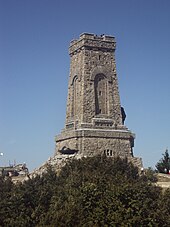
In the second half of the 14th century, the Bulgarian feudal states were conquered one by one by the Ottoman Turks in a series of military campaigns. The Bulgarians, along with the other Balkan peoples, became unwilling subjects of the Ottoman Empire. Being Christians, they were considered a part of a lower, subjugated class (rayah) and had to bear the weight of additional taxation (including the devshirme tax, the forced enslavement of children to train them as elite Janissary troops) and various regulations limiting clothing and even the allowed height of churches. During the five centuries of Ottoman reign, the regime gradually became more lax as the Empire developed, but Bulgarians (like its other Christian subjects) never lost their second-class position. That's why the period is also colloquially called the "Ottoman yoke" ( Osmansko igo ), as well as other, even less charitable epithets.
In an attempt to make Bulgarians remember their history and national pride, the monk Paisius of Hilendar wrote the Slavonic-Bulgarian History in 1762. This marked the beginning of the Bulgarian National Revival, a period of renewed social, economic and political development of the Bulgarian people within the confines of Ottoman rule. One of its manifestations (and later, drivers) was an increased interest in secular education in Bulgarian language. As a result, educators such as Petar Beron, Vasil Aprilov and Petko Slaveykov are celebrated today almost as much as the more militant freedom fighters of that era, like Georgi Rakovski, Vasil Levski , and Hristo Botev. Increased nationalistic sentiments lead to a rise in revolutionary activity against Ottoman rule, culminating in the large April Uprising of 1876. It was quickly and bloodily suppressed, but the atrocities shocked the Great Powers of Europe and they didn't object when the Russian Empire declared war on the Ottomans in 1877. The multi-ethnic imperial army included a contingent of Bulgarian volunteers ( opalchentsi ), and they distinguished themselves in the key battle of Shipka Pass, preventing an Ottoman army from crossing the Balkan Mountains to relieve the besieged city of Pleven .
Constitutional monarchy

The war ended with the signing of preliminary peace treaty of San Stefano on 3 March 1878, celebrated ever since as the Liberation of Bulgaria. During the follow-up Congress of Berlin in the same year, the Great Powers pared down the originally proposed borders: the newly created free Principality of Bulgaria included only what is now Northern Bulgaria and the region of Sofia, and it would still be a vassal of the Sultan; the other territories immediately south of the Balkan Mountains became Eastern Rumelia, an autonomous province within the Ottoman Empire; the rest remained under Ottoman rule. This decision had vast consequences, as the course of Bulgarian history for the next century would be set directly or indirectly by various attempts to unite all "Bulgarian lands". Internally, the young monarchy was marked by turmoil for most of its existence - throughout the decades that followed, Bulgaria experienced rapid economic and educational progress, but also political intrigues and assassinations, failed and successful coups d'état, popular unrest and periods of political repression.
The first parliament convened in Tarnovo in 1879. It composed a constitution and selected a young German noble (and relative to the Russian Emperor), Alexander of Battenberg, as the first knyaz (Prince) of Bulgaria. In September 1885, a clandestine revolutionary movement managed to bloodlessly unify Eastern Rumelia with the Principality of Bulgaria. As a result, Bulgaria became politically isolated and was almost immediately attacked by... Serbia - and won the war. The Great Powers accepted the fait accompli , but the new Russian Emperor was livid and Prince Alexander was forced to abdicate in a coup by pro-Russian military officers. Despite being quickly restored, he decided to give up the throne.
Another German noble, Ferdinand of Saxe-Coburg and Gotha, was chosen as his replacement. In September 1908, he declared Bulgaria's de jure independence from the Ottoman Empire, claiming the title of Tsar (i.e. King). Several years later, the Tsardom of Bulgaria joined an alliance of Balkan nations in the First Balkan War (1912-1913) against the Ottoman Empire, gaining further territories. Afterwards, in a series of disastrous decisions, Bulgaria started (and lost) the Second Balkan War (1913) and entered World War I in 1915 on the side of the Central Powers (and lost). As a result, Bulgaria lost almost all of its recent territorial gains, and even unrelated lands - Romania annexed Southern Dobrudzha (including Silistra , Dobrich and Balchik ; it was diplomatically regained in 1940). After all these failures, in 1918 Ferdinand abdicated in favour of his eldest son, Boris III.
The consequences of the Second Balkan War and World War I had catastrophic effects on Bulgaria's economy and society, leading to the rise of both far-left and far-right ideologies in the 1920s and 1930s. Boris III had to deal with Communist uprisings and military coups; revanchist elements in the ruling class favoured retaining close ties with Germany. When World War II erupted in Europe in 1939, Bulgaria declared neutrality, but it was gradually eroded, and in March 1941, Bulgaria formally joined the Axis. Unlike Romania, Bulgaria didn't send troops to the Eastern Front; instead, its soldiers occupied the conquered territories on the Balkans, freeing up Axis forces. After Bulgaria declared war on the UK and the US, Allied aviation bombed Sofia several times. Members of the Bulgarian elite managed to stop the deportation of Bulgarian Jews, saving about 48 thousand from the Holocaust; nevertheless, 11 thousand in the Bulgarian-occupied territories were deported and perished in the Nazi death camps. Boris III died suddenly in August 1943 under somewhat suspicious circumstances shortly after returning from Germany, leaving his 6-year-old son on the throne as Simeon II, under a council of regents. After the Soviet Union started advancing towards the Balkans, German forces retreated from the country. Bulgaria declared war on Germany; at the same time, the USSR declared war on Bulgaria, and Soviet forces entered the country without any resistance. A day later, on the 9th of September 1944, a pro-Communist coup d'etat toppled the government. Bulgarian troops ended up fighting along the Soviets against the Axis across Yugoslavia and Hungary. The regents were convicted by a "People's Court" and executed, and the little tsar was sent into exile.
People's republic

After World War II, Bulgaria was occupied by the Soviet Army and fell within the Soviet Union's sphere of influence during the Cold War. It became a People's Republic in 1946, with the Communist Party in control. Its first leader was Georgi Dimitrov, one of three Bulgarian communists who had been accused by the Nazis of setting fire to the Reichstag in 1933, and General Secretary of the Communist International between 1935 and 1943. After his death in 1949, a mausoleum was built for him in a prominent place in the capital, just like the mausoleum of Lenin in Moscow .
During Communist times, the Black Sea was a popular destination for travellers from both sides of the Iron Curtain, and many of the resorts in the country were built in this era.
Like elsewhere, a number of cities were renamed after various Communist figures. Some of those names were reverted even before the fall of the regime (" Stalin ", " Kolarovgrad "), but others could be changed only afterwards (amusingly, "Mihaylovgrad" became Montana ; "Tolbuhin" reverted to Dobrich ), and some chose to retain the name ( Blagoevgrad , Dimitrovgrad ).
Democratic Bulgaria
Matching the decay of its patron, the Soviet Union, the Communist regime lost power and held the first multi-party elections in 1990, though the Bulgarian Communist Party simply rebranded as the Bulgarian Socialist Party and remained a major factor in politics. As a result of the elections, in 1991 Bulgaria adopted a new constitution and began a painful transition towards a market economy. The 1990s were marked by a prolonged economic crisis and the rise of organized crime, the results of poorly thought-out reforms, international economic factors and political corruption. In the winter of 1996, hyperinflation and the price of bread lead to bitter protests that forced snap elections in 1997, which removed BSP from power. The following right-of-center government adopted a currency peg to the Deutsche Mark, demolished the Mausoleum of Georgi Dimitrov, and tried to "clean house" in other ways, with mixed success. In an amusing twist of fate, the former tsar, Simeon Saxe-Coburg-Gotha, returned from exile and governed as the Prime Minister of Bulgaria between 2001 and 2005.
Bulgaria joined NATO in 2004 and the European Union in 2007. Despite having a relatively stable economy and low debt, Bulgaria is the European Union's poorest member. The country has also been in a demographic crisis since the early 1990s, and its population has been declining faster than that of any other nation.
In addition to Christmas, New Year's Day and Easter, the Bulgarian state recognizes another seven national holidays: 3 March (the national holiday: Liberation Day); 1 May (International Workers' Day a.k.a. Labor Day); 6 May (feast of St. George and thus Day of the Bulgarian Armed Forces, usually celebrated with a military parade in the capital ); 24 May (Day of Bulgarian Education and Culture and the Cyrillic Alphabet); 6 September (Unification Day); 22 September (Independence Day); and 1 November (Day of the National Enlighteners - only a school holiday). If one of those days occurs during the weekend, the Monday afterwards is officially a non-working day to "compensate".
The Bulgarian Orthodox Church celebrates fixed holidays according to the Gregorian calendar, and "floating" holidays (i.e. Easter and its related holidays) according to the Julian calendar. This means that in Bulgaria, Christmas is celebrated on the same date as in most of the West - 25 December, but Easter can be quite "late" (it falls on May 6th in 2024, April 20th in 2025, and April 12th in 2026). Christmas and Christmas Eve, as well as four days around Easter (Good Friday, Holy Saturday, Easter Sunday and the Monday afterwards), are also official holidays.
Another religious holiday that may be amusing to travelers is the feast of the Epiphany (6 January) - the religious ceremony of the "Blessing of the Waters" involves a priest tossing a cross in a local body of water, and a number of local men competing to retrieve it. Sometime in the late 20th century an additional, non-religious tradition was established in some places: the "ice horo ", men dressed in traditional costumes dancing horo (line dance) in the cold water of a local river (usually having to break the ice first, thus the name). It seems to have originated in Kalofer , but it has since spread to other towns and villages ( Blagoevgrad , Kazanlak , Panagyurishte , etc).
Visitor information
- Bulgaria Travel , the official promotional website of the country, maintained by the Ministry of Tourism
The official language of the country is Bulgarian , a Slavic language that is written using its own variant of the Cyrillic script. The language is mutually intelligible with Macedonian (considered a dialect of Bulgarian by many Bulgarians). Among the other Slavic languages, the next closest related is Serbo-Croatian, while Russian is even more distant.
Turkish is the native language of the Turkish minority and the country's second most widely spoken language. You're likely to find a Turkish speaker in Northeastern Bulgaria (around Razgrad and Isperih ) and in the Rhodope Mountains in the South (around Kurdzhali ).
The most popular foreign language among the younger generations is English , though language competence can vary greatly. Unsurprisingly, you are more likely to find English speakers in tourist areas and the largest cities.
Older Bulgarians (45+) who speak a foreign language are more likely to speak Russian , as it was the most commonly taught foreign language during the communist years. Relatively few people have maintained a level good enough to keep a conversation, though.
In churches, the liturgical language is Church Slavonic which differs considerably from modern Slavic languages, though it's sometimes claimed that Bulgarian is the most similar to Church Slavonic of them all.
It is also important to remember that Bulgarians shake their head for Yes and nod for No ! Ask for verbal confirmation if you are confused by an answer.
Acceptance of other currency
Shopkeepers and other businesses in Bulgaria will usually not accept foreign money, although many will accept the euro. Bulgaria remains a largely cash economy in rural areas; but in major cities, credit cards are generally accepted.
Never exchange money out on the street. Beware of people on the street who offer high rates of exchange or who may ask you to make some change for them.
In most cities there are many money exchange offices which are marked with signs that say "Change". Most are legitimate, but some may rip you off. For example, they advertise a very competitive rate on the outside, but on the inside, there is a tiny sign with the "official" rates, and these are much worse – so always make sure to ask how many leva you will get for your money before you hand it over, and calculate yourselves (e.g., using your mobile phone) how much money you would expect to get. If you refuse the transaction because the rate suddenly changed, they will make all kinds of unjustified assertions (e.g., "I already entered it into the computer, it cannot be stopped"), but you if threaten to call the police immediately while raising your voice so that other tourists look your way, they usually will let go immediately.
It is much safer to exchange your money at a bank. Banks apply little or no commissions, and generally offer good rates, although they are slightly worse than at a (non-criminal) change bureau. Higher commissions may be applied to traveller's cheques. Old, dirty or very worn bank notes may be refused.
Popular local dishes with meat
The most preferred Bulgarian salad is the shopska salad . However, there is another traditional salad that includes the ingredients of the shopska salad and adds it own distinct touch. The ovcharska salad is a mix of tomatoes, cucumbers, peppers, onion, parsley and white cheese combined with mushrooms, boiled eggs, yellow cheese and most significantly - ham. The dressing again is salt, sunflower oil and wine vinegar.

As a main course you can have:
- Bulgarian moussaka - a rich oven-baked dish of among other ingredients: potatoes, minced meat and white sauce of eggs and yoghurt served traditionally with chilled yoghurt;
- Gyuvetch - typical ingredients include chopped potatoes, tomatoes, peppers, aubergines, peas and some meat done in a clay pot called gyuvetch (from where the name of the dish comes
- Sarmi - rolls of vine or pickled cabbage leaves with rise and meat
- Drob sarma - a dish of lamb liver, belly and kidneys with rice covered white sauce and baked, served with yoghurt
- Kavarma - fried meat with tomatoes, onions and peppers
- Kapama - rolls of pickled cabbage leaves filled with four types of meat and at least one type of sausages in tomatoes and onions baked in a gyuvetch
In Bulgaria there are traditional bakeries that prepare different kinds of pastry products. Banitsa and mekitsa are the favorite salty and sweet (respectively) pastries among others like tutmanik , milinka and kifla . Also, a traditional fast food option in Bulgaria is the grilled foods, such as kebabche and kufte (made of minced meat), karnache (a variety of sausage) and shishche (a king of shish-kebab made with chicken or pork meat).
Pizza, dyuner (döner kebab), sandwiches and toasts, or hamburgers are also very easily found on the streets of Bulgaria. There are also many local and international fast-food chains. While the local vary across regions, some of the internationally recognised McDonalds, KFC, Subway and Burger King are in every big city.
There is also a chain of fast food restaurant made by Syria Bulgarian all over Bulgaria offering fried chicken and pizza called 'Shami' and it offers halal cheap food.
Another recommended chain is 'HAPPY' and it is available all over Bulgaria. It is always worth a try, promising good and clean service.
Emergency phone numbers
Bulgaria uses the pan-European standard number 112 for all emergency calls. If you can not connect to 112, dial 166 for police, 150 for ambulance and 160 for the fire department.
Driving conditions
Driving can be a chaotic, stressful experience. Drivers tend to be aggressive and the country's road network is not that well developed; many roads are in disrepair and have potholes. In rural areas, it is not uncommon to come across wandering livestock on the roads.
The use of seat belts is mandatory , except for pregnant women, though in practice, these rules are often disregarded. Take extra care when crossing streets, as drivers in this country tend to be impatient and will likely not stop for you.
Bulgaria has a rather harsh stance against driving under the influence. Even a trace amount of alcohol, as low as 0.05% , can get you charged with driving under the influence. Driving under the influence is punishable by fines, imprisonment, or both.

In general, organised crime is a serious issue throughout Bulgaria, however it usually does not affect tourists and ordinary people. Bulgaria is safer than most European countries with regard to violent crime, and the presence of such groups is slowly declining. Pickpocketing and scams (such as taxi scams or confidence tricks) are present on a wider scale, so be careful, especially in crowded places (such as train stations, urban public transport).
Car theft is probably the most serious problem that tourists may encounter. If you drive an expensive car do not leave it in unguarded parking lots or on the streets as these locations are likely to attract more attention from criminals. If, by any chance you do leave it in such a location, you need to be sure that the vehicle has a security system.
Travellers should also be cautious about making credit card charges over the Internet to unfamiliar websites. Offers for merchandise and services may be scam artists posing as legitimate businesses. An example involves Internet credit card payments to alleged tour operators via Bulgaria-based websites. In several cases, the corresponding businesses did not exist. As a general rule, do not purchase items from websites you are unfamiliar with.
Bulgaria is still largely a cash economy. Due to the potential for fraud and other criminal activity, credit cards should be used sparingly and with extreme caution. Skimming devices, surreptitiously attached to ATMs by criminals, are used to capture cards and PINs for later criminal use, including unauthorized charges or withdrawals, are very common in Bulgaria. If you are unsure which ATM to use, it's best to use cash instead of a credit card.
Also, be careful with the cash you are dealing with. Bulgaria is one of the biggest bases for money forging of foreign currency , so pay attention to your euros, dollars and pounds. Do not exchange currency on the street. It is a common scam to offer you fake money as exchange in tourist areas such as stations.
On occasion, taxi drivers overcharge the unwary, particularly at Sofia Airport and the Central Train Station. Foreigners are recommended to use taxis with meters and clearly marked rates displayed on a sticker on the passenger side of the windshield, as generally these taxis charge a normal amount, and the taxis with no meters charge for very unfair prices. One useful tip is to check the price for your trip from a trustworthy source beforehand, such as a friend or an official at station or tourist bureau. If you are trying to be lured into such rogue taxis, it is best to reject the offer, or just walk away.
Bulgaria has very harsh drug laws , and the penalties are perhaps more severe than in any other country in Europe.
According to the reports of the Agency for Fundamental Rights (FRA), Bulgaria is the country with the least tolerance of LGBT people in the European Union for 2009 and 2011. After mass protests at the end of 2017 and the beginning of 2018, the Istanbul Convention was officially rejected. Be careful in conversations and refrain from public displays of affection with same-sex partners — otherwise you could be attacked by skinheads or nationalists. The same applies for visitors who are visibly transgender.
Stray dogs are common all over Bulgaria. While most are friendly and are more scared of you than you are scared of them, they have been responsible for a number of accidents, so do keep on guard. There is rabies in Bulgaria, so any animal bites should receive immediate medical attention.
Wild bears and wolves can sometimes be seen in woods, so be careful.
Transparency International has often identified Bulgaria as one of the most corrupt countries in the European Union. This said, the country has made significant progress in fighting corruption since joining the European Union.
Unfortunately begging and unsolicited sales are quite common in Bulgaria. In the holiday resorts both in the mountains and on the coast there will be numerous people trying to sell you various things such as roses and pirated DVDs. Usually a firm 'no' will get rid of them but sometimes they will persist and often ignoring it will not make them go away unless you make it absolutely clear you are not interested. Also be aware that in many cases these people can just wander into the hotel restaurants in the evening so expect to see them standing at your table at some point! In the ski resorts there are many people who sell "Traditional" Bulgarian bells. They know when tourists arrive and how long they are staying for and will pester you all week to buy a bell. If you make it clear at the start of the week that you do not want a bell they will usually leave you alone (for a few days at least) but if you do not say no, they may force the cheap plastic bell upon you to encourage you to buy one later in the week. The bell men will become your friend for the week as they try to get you to buy a bell. If you really don't want to buy a bell, by the end of the week your bell man will demand his cheap plastic bell back and won't be very happy! Don't feel bad about not buying a bell as they often charge extortionate prices unless you really haggle. If you do buy a bell however, you will find that the bell men will be genuinely friendly and chatty people and really aren't all as bad as they seem!
Stay healthy
As a generally rich country in Europe, it's best to say that health standards are developed. However, there are potential health risks, even though the government has fought the high chances of such things with a huge success. It best to stay that the greatest risk that a traveller can encounter is air pollution . People with breathing difficulties, such as asthma are at a greater risk.
Health risks
Pollution is no better or worse than in any other European city. Health risks are the same as those in other parts of Europe, so be careful of what you eat, meaning that if you purchase fruits and vegetables, wash them prior to eating. If you are inclined to purchase food from a stand that sells fast food containing meat, know that you are taking on a health risk to yourself, because there are no health codes in those establishments.
If you are at the Black Sea, mind the strong sun at the beach, especially in July and August. Wear sunscreen and do not leave the umbrella in the first one or two days. Do not drink hard alcohol at the beach, it could give you a heart attack.
Smoking is the national pastime, and evading the fumes of cigarettes is even more difficult than evading exhaust fumes in the streets. Generally, during the Summer, most people generally sit outside, which makes matters less worse. As this is a seasonally-changing obstacle, it's best to stay on guard. Since 2012, smoking is prohibited in public places, including bars and restaurants, but restrictions are rarely followed.
Eating and drinking
Most food is quite safe to eat.
Tap water in Bulgaria varies greatly in quality, taste and drinking recommendations. While it is of very good quality and safe to drink in the mountain regions, it is best to avoid drinking water in North Bulgaria and in the regions near the seaside. The mountain regions in Bulgaria have natural springs that are quite abundant and many of villages have one or more mineral water springs.
Conditions in Bulgarian hospitals may vary - from very clean with all the latest technological utilities, to the downright drab, dark and cold. There are some new hospitals, and some very old, with old technology. Doctors and nurses are usually competent and skilled.
Citizens of the European Union are covered by Bulgaria's National Healthcare System as long as they carry a Eurocard (or European Health Insurance Card), obtainable from their own national healthcare authority.
Dental procedures in private clinics in Bulgaria are of excellent quality. Many people from Western Europe come to Bulgaria for dental work for the quarter of the price they pay in their home countries.

Bulgarians are incredibly friendly and very interested in talking to foreigners. Bulgarians tend to be far more open than some other Eastern Europeans and engaging in dialogue with these people is much advised and worthwhile. In smaller towns, especially in the Rhodopes, people may invite you for lunch, dinner or even to sleep over. Often it is a pleasant gesture to give someone a dobar den when walking past a quiet stall or past a person. Kak ste (how's it going) will usually suffice for the younger generation.
For certain people, Macedonia is a sensitive subject to talk about, but feel free to ask your questions, provided you do not discuss it with those more likely to take offense (i.e. nationalists and skinheads). Many Bulgarians feel that Macedonia belongs to Bulgaria, but unless you know the subject and the people you are talking to, just asking questions is the best option.
Do not refer to the Bulgarian alphabet as the "Russian alphabet". Bulgarian was the first language to adopt the Cyrillic alphabet, which would later be adopted by other Slavic languages like Russian and Serbian, and Bulgarians are fiercely proud of this fact.
Most Bulgarians do not feel anger or resentment towards Russians (unlike people from most other former Eastern Bloc countries), and Bulgarians tend to have a much better perception of Russians than most other Europeans. Indeed, Bulgarians are largely grateful to the Russian Empire for liberating them from Ottoman rule, and you will often see Russian flags being waved at Liberation Day parades. On the other hand, caution may sometimes be needed in discussing issues regarding Turkey. Likewise, discrimination against Turks and Roma people can be observed, but it's mostly because of certain nationalist groups that are not much different than hate groups in central and western Europe.
Avoid talking or comparing between Turkey and Bulgaria, this subject is very sensitive, and also there is a common misunderstanding that Islam is Turkey and Turkey is Islam, so Bulgarians in general have prejudices towards Muslims in general.
Bulgaria is still a very conservative country, so LGBT+ travellers may need to be discreet as assaults sometimes occur.
Bulgarians don't really do chit chat, so trying to make conversation with someone at a till in a shop will probably result in odd looks (either from not understanding or not wanting to engage) or they will just ignore you. Likewise Bulgarians are quite impatient and will often honk their car horn at you if you walk in front of a car, especially in winter in the mountains as they try to keep a grip on the road.
Mobile phones
There are three networks (A1, Yettel and Vivacom), all using the GSM/4G/3G/HDSPA standards. 5G coverage is being expanded; as of the beginning of 2023, most larger cities are covered. Phone service has almost full national coverage, with minor exceptions in the highest and the most remote parts of the mountains.
Fares are average for the European Union (€0.05-0.40 per minute, €0.70/SMS). Pre-paid cards and subscriptions are available, and special options for discounted international calls exist with some pricing plans. Prepaid cards need registration with a valid ID or passport.
Mobile phones are widely spread in Bulgaria - many people have two or three mobile phones using the different carriers.
Domestic phones
Domestic telephone service is available in almost every population centre (no matter the size), via the PSTN or VoIP.
Internet access
Free WiFi access is often available in public places such as libraries and in gas stations. Many pubs and hotels will also have WiFi that is free of charge to use. Internet cafes are mostly a thing of the past; some of the few places that still provide to the public computers with internet access are the regional public libraries in the larger cities.
Internet access is widely available in Bulgaria. Broadband internet is available through cable, ADSL, fiber optics, WiMax and LAN connections. Mobile internet access via 3G/4G/5G is available from all three carriers; as of the start of 2023, 5G coverage is mostly limited to the larger cities, but it's expanding. In all cases, coverage and prices vary with the carrier and the chosen plan.
News and opinion
The number of local media outlets that publish local news in English has shrunk somewhat in the last years.
- The Bulgarian National Radio maintains a news website and a podcast in English (but no actual radio broadcast).
- Novinite.com ("The News.com") is the English-language version of Bulgarian news site Novinite.
- The Sofia Globe is an independent news website publishing only in English.
- Vagabond is an English-language magazine and website aimed at foreign tourists, expats and "digital nomads" living in Bulgaria.
If you plan on staying in Europe for long, why not pay a visit to some of Bulgaria’s neighbouring nations?
Romania , Serbia , North Macedonia , Greece and Turkey all offer exciting and unique experiences.
- Has custom banner
- Has map markers
- Articles with dead external links
- Go listing with no coordinates
- Outline countries
- Outline articles
- Country articles
- All destination articles
- Has Geo parameter
- Pages using the Kartographer extension
Navigation menu

What are you looking for?
15 best places to visit in bulgaria [2024 travel guide].
Discover the very best destinations in Bulgaria with this comprehensive guide...
With a diverse landscape including Black Sea beaches, ski resorts, snow-capped mountains, and thermal spas, this Slavic slice of Eastern Europe is a must visit for any serious traveler.
Other outdoor activities include hiking, camping and biking in some of the wildest parts of Europe.
The country's charming towns and cities also offer plenty in the way of entertainment, dining, history and architecture.
Bulgaria is one of the cheapest countries to visit in Europe so is perfect for those traveling on budget too.
So, without further ado, let’s dive right in and discover the very best places to visit in Bulgaria!
Travellerspoint
How to Get to Bulgaria

Getting to Bulgaria from the rest of Europe is a piece of cake as it's served by three of Europe’s biggest budget airlines; Ryanair , Easyjet and Wizz Air .
There are daily flights from most major European cities to airports across Bulgaria from Plovdiv and Sofia to Varna on the Black Sea and more.
If you're visiting from outside Europe then it’s best to fly to a large hub such as Frankfurt or Amsterdam and take a connecting flight for the final leg.
There are daily buses to Bulgaria’s capital from neighboring countries. Below are a few of the most popular routes!
In addition to the regional bus companies servicing these routes, Flixbus is one of the most popular bus companies in Europe with routes covering Bulgaria both domestically and internationally.
- Skopje (North Macedonia) to Sofia - 4h45m
- Bucharest (Romania) to Sofia - 6h30m
- Thessaloniki (Greece) to Sofia - 10h30m
There are international train services between many southeastern European countries and Bulgaria. There are daily direct trains from Croatia, Serbia, Romania and Turkey.
Some of the most popular routes include:
- Dimitrovgrad (Serbia) to Sofia - 2h10m
- Bucharest (Romania) to Sofia - 9h50m
- Istanbul (Turkey) to Sofia - 10h04m
Getting Around Bulgaria

Hiring a Car
Hiring a car is a great way to get around Bulgaria as it gives you more freedom to go where you please. For the best deals check out Rental Cars !
Bulgaria is covered by a comprehensive, if a little slow, train network. However, it’s one of the cheapest (and most pleasant) ways to explore the country if you're not in a rush.
Getting from Sofia to Plovdiv takes around two hours and costs as little as $5.00. There are also trains to the resorts on the Black Sea!
Bulgaria has a pretty solid bus network covering all the major cities and resorts.
Fares are cheap (usually from about $2.00 per journey), and traveling by bus can often be quicker (though less scenic) than taking the train.
Motorhome/RV
One of the best ways to get around Bulgaria and the Balkans is to hire a motorhome/RV.
This is what we did during our drive around the world (which we're currently on) and we had the most amazing time!
It's a great way to get around the national parks, mountains and Black Sea coast, and can save you a lot of money on accommodation too! Visit Motorhome Republic for the best deals!
15 Best Places to Visit in Bulgaria

Plovdiv is Bulgaria’s Second largest City and is often touted as the oldest inhabited place in Europe. It's located in the south of the country 90 miles southwest of the capital, Sofia.
The city sits on the banks of the Maritsa River and is surrounded by seven mountains, just like Rome with which it shares much in common.
The history of the city dates back thousands of years and much of its Roman history is still evident , such as the incredible Theater of Philippopolis , which is still used for events today.

Plovdiv is considered Bulgaria’s cultural capital, and it was even voted the European Capital of Culture in 2019. It's undeniably one of the best cities in Bulgaria and you'll soon see why!
The city is packed with interesting things to do from walking its charming cobbled streets to stopping at street side cafes or restaurants for a bite of hearty local fayre.
Bulgaria’s food is to die for, with the freshest, locally grown produce used by many of the city’s eateries.
One of the best things to do in Bulgaria is to climb one of Plovidiv’s hills for enchanting views of the city. Nebet Tepe and Bunardzhik Tepe are two of the most accessible.
This full day tour from Sofia is a great way to experience Plovdiv and takes in some of the city’s most famous attractions!
If you're looking for things to do in Plovdiv then here's an article that you might find useful...
Top Things to do in Plovdiv
- Explore Plovdiv Old Town
- Visit Plovdiv Roman theater
- Explore Kapana Suburb
Where to Stay in Plovdiv
HillHouse Plovdiv - This gorgeous property offers a variety of rooms and suites that feature an array of amenities including free WiFi, air conditioning, and a TV. You'll also be close to many of Plovdiv's popular attractions.

One of the best things to do in Bulgaria is to spend some time in the capital city of Sofia . This city’s history is no less impressive and you can witness evidence of its Roman, Medieval, Ottoman and Soviet past.
Sofia has a real east-meets-west feel to it and here you’ll find medieval churches, onion domed cathedrals and Ottoman mosques side by side.
One of Sofia’s most famous landmarks is the Aleksander Nevsky Cathedral .
This beautiful church with its blue and gold onion domes is considered one of Bulgaria’s most sacred symbols.
The city sits in the shadow of 2,292 meter (7,520 foot) Mount Vitosha, which makes an excellent day trip from the city. The panoramic views across Sofia’s rooftops are incredible too!

The National Museum of Military History takes you on a journey from Bulgaria’s ancient history through to its days as part of the Soviet Union.
Sofia has a thriving foodie scene with some excellent restaurants offering a taste of traditional Bulgarian food , which is known for its simple, yet filling ingredients.
And let’s not forget about Bulgarian wine (more on that later). There are lots of great bars from local places full of character to trendy, modern establishments where you can sample some of the country’s drinks.
This three-hour guided city tour includes local food tasting and is a great way to get to grips with Bulgaria’s charming capital.
Whatever, you choose to do you won't run out of things to do in Sofia !
Top Things to do in Sofia
- Visit St. Aleksander Nevsky Cathedral
- Climb Vitosha Mountain
- Visit the Boyana Church
Where to Stay in Sofia
Budapest Hotel (don’t worry, it’s not actually in Budapest) - This hotel is located in the center of Sofia and it's just a 5-minute walk from Central Train Station. All the rooms here are spacious and there's an on-site restaurant that guests can take advantage of.
3. Devils Bridge (Arda River)

The Devils Bridge (Dyavolski Most in Bulgarian) is a beautiful three-arched stone bridge across the Arda River gorge.
It’s located in the Rhodope Mountains near the town of Ardino, and not far from the Greek border.
The bridge was built between 1515 and 1518 by a Bulgarian builder named Dimitar, and it was used to connect Thrace with the Aegean Sea.
The Devils Bridge is certainly one of the hidden gems in Bulgaria, and makes a great day trip from Plovdiv, which is about a two-hour drive.
The picturesque valley and Arda River gorge are well worth exploring, and is one of the best natural places in Bulgaria.
The Devil’s Bridge isn’t easily reachable with public transport so you’ll need your own vehicle to get there. The other option is to take a bus to Ardino and then hire a taxi or Uber to take you the final distance.
Here's some more information about visiting Devils Bridge if you're looking to add this place to your itinerary (which I definitely recommend).
Top Things to do at the Arda River
- Visit Devils Bridge
- Go hiking in the Rhodope Mountains
- Explore nearby Ardino
Where to Stay in Ardino
Stylish Loft Apartment - You won't find many accommodation options in Ardino but this gorgeous one-bedroom apartment is a real gem. It sleeps up to four people and features a kitchen, spacious living area, and free WiFi.

If you’re looking for a bit of pampering, then head to the spa town of Devin in the Vacha River valley in the far south of the country.
Devin is one of the most popular Bulgaria tourist attractions thanks to the hot springs, thermal spas and resorts located here.
The waters of Devin have been known for their healing properties since times of antiquity, and people flock here to treat all sorts of ailments (usually related to the skin).
One of Bulgaria’s most popular bottled mineral water brands, Devin, is bottled here.
Devin’s location nestled in the mountain means it's one of the most scenic parts of Bulgaria. There is plenty for lovers of the outdoors, from gorges, interesting rock formations, caves, forest, rivers and more.
What better thing to do after hiking in this beautiful region than resting your weary feet in the healing waters of a spa or hot spring?!
Three popular tourist spots include Trigrad gorge, Devil’s Throat Cave and Yagodinska Cave.
There are buses to Devin from Plovdiv (2h40m) and there is one daily service from Sofia (4h0m).
Top Things to do in Devin
- Relax at one of the hot springs
- Explore Devin town
Where to Stay in Devin
Spa Hotel Ismena - Now, this is one of the most beautiful hotels that you'll come across in Bulgaria! Spa Hotel Ismena is not only set in a gorgeous location but you'll have free use of an indoor thermal pool, hot tub, salt sauna, and steam bath!

Bansko in the Pirin Mountains in southwest Bulgaria is famous for its ski resorts.
Todorka Peak is home to a variety of different ski and snowboard runs and is the perfect place to visit in Bulgaria for winter sports.
But it’s not just about skiing and snowboarding, as Bankso forms part of the beautiful Pirin National Park with many great hiking trails, dramatic ridgelines and glacial lakes.
This is one of the wildest parts of Europe as the Pirin Mountains and valleys are home to wolves and bears among other flora and fauna.
There are buses from both Sofia and Plovdiv to Bansko and the journey time is around three hours from each!
If you're looking for things to do in Bansko then you might find this article helpful...
Things to do in Bansko
- Hit the slopes at Bansko Ski Resort
- Visit Muratovo Lake
- Hike Vihren Peak
Where to Stay in Bansko
The Hot Springs Medical and Spa Hotel - As the name suggests this hotel features an on-site spa so you'll benefit from an array of fantastic facilities including two swimming pools, a sauna, steam bath, and a Turkish hammam. There's also a tour desk at the hotel where the staff can organize tours for you!
6. Rila National Park (Seven Rila Lakes Hike)

The Rila National Park in northwestern Bulgaria is home to a series of seven glacial lakes.
These lakes are staggered at intervals between 2,000 and 2,500 meters up in the mountains and are one the most picturesque places to visit in Bulgaria.
The Seven Rila Lakes are all interconnected by streams and waterfalls and are one of Bulgaria’s most famous tourist attractions.
Each lake has its own name based on its unique characteristics, from “the Tear” due its clear waters, to “the Lower Lake”.
The lakes are reachable from the resort town of Panichishte. It’s a 90 minute walk to the lower lakes, and the hike around all of the lakes takes another four to five hours, so a good level of fitness is required.

There's also a chairlift from the resort up to the lakes which is a better way to arrive so you have enough energy for the hike. If you wish to take the chairlift back, ensure you return by 16:30.
With the above in mind, one of the best ways to experience what is one of the most beautiful places in Bulgaria is to take a day tour with transport direct from Sofia.
Things to do in Rila National Park
- Hike around Seven Rila Lakes
- Climb Musala Peak (the highest point in the Balkans)
Where to Stay in Rila National Park
Lion Hotel Borovets - This gorgeous hotel is the perfect base for exploring Rila National Park as it offers a free shuttle service to the chairlifts. You'll also have access to plenty of facilities including a lobby bar, fitness center, sauna, and a swimming pool.
7. Rila Monastery

Rila Monastery (Sveti Ivan Rilski) is located inside Rila Monastery Nature Park, one of the largest national parks in Bulgaria.
The monastery was founded in 927AD by the hermit Ivan of Rila who lived in a cave close to where the monastery is now.
Rila Monastery is one of the best places to visit in Bulgaria thanks to its tranquil location in the mountainous national park.
The building as you see it today dates back to the 15th Century, with some parts older still. The complex includes a church, a residential area for the 60 or so monks that live here, and a museum.
As it's one of the country's UNESCO World Heritage sites this isn't a place that you want to miss, especially if you want to see the best of Bulgaria!

This small group tour from Sofia takes in Rila Monastery as well as Sofia’s Boyana Church and is a great way to visit these famous Bulgaria attractions.
Where to Stay near Rila Monastery
Family Hotel Gorski Kut - This hotel puts you in the perfect location to explore Rila Monastery and many of the rooms offer scenic views of Rila Valley! There's an on-site restaurant, bar, and a terrace area where you can relax and admire the scenery!
8. Velingrad

Another town in the Rhodope Mountains famous for its healing waters is Velingrad . The town was founded as late as 1948 after the unification of several villages in the region.
There are over 90 mineral water springs located around Velingrad and the most well known are Ladzhene, Kamenitsa, Chepino, Rakitovo and Kostandovo.
The mineral waters are used to treat and prevent many diseases and as such the town is popular with people from across the country.
There are 22 different mineral baths and pools here, and they vary in terms of temperature and mineral content levels.
Due to the town's popularity there are three sanitariums, over 60 hotels and 140 restaurants, so you’ll find everything you could possibly need here.
Although there are many great hotels and spas, camping is a wonderful way to experience Velingrad, and Thermal Camping Velingrad is a camping ground with hot springs and swimming pools.
Velingrad is honestly one of the best destinations in Bulgaria - especially if you're looking to relax!
Things to do in Velingrad
- Take a thermal bath
- Explore the town
- Visit Lake Kleptuza
Where to Stay in Velingrad
Park Hotel and Spa Vella Hills - Like many of the hotels in Velingrad, this property has an on-site spa where you'll have access to a variety of excellent facilities. The hotel and its outdoor pool also offer stunning views of the surrounding area.
9. Batak Reservoir

Batak Reservoir in the Rhodope Mountains is the third largest in Bulgaria and is hugely popular with tourists and people looking to get into the great outdoors.
This picturesque body of water is one of the best places to visit in Bulgaria thanks to the pristine nature and stunning views.
The Batak Reservoir is surrounded by forested hills and mountains with small settlements on the shore.
There is plenty to do around the reservoir with hiking, biking, horse riding and fishing all being popular activities . It’s also possible to get out on the water with kayaks or take a boat trip.
This reservoir may not be one of the most 'iconic' things to see in Bulgaria, but it's certainly got a lot to offer!
The nearest town is Batak, which is just five miles from the shore.
Things to do at Batak Reservoir
Where to stay in batak.
Guest House Batak - This guest house is the perfect place to stay if you're looking to visit Batak Reservoir. Boasting spacious rooms with plenty of amenities and a great location, it's one of the best options in the area!
10. Shipka Pass

The Shipka Pass is a 1,150-meter (3,820-foot) pass through the Balkan Mountain Range in central Bulgaria.
The area is famous for the Battle of Shipka Pass between the Russians (with help from Bulgaria) and the Ottoman Empire during the Russo-Turkic War of 1877 to 1878.
The Shipka Monument is a 31.5-metre (98-foot) stone tower erected in 1934 to commemorate the battle.
In addition to the historic nature of the Shipka Pass, it also commands stunning views over the countryside below and is perfect for hiking.
There are daily buses from Sofia to Shipka which take around 3 hours. From Plovdiv the bus takes around two hours!
If you're planning to to drive the Shipka Pass then you'll find this information helpful...
Things to do at the Shipka Pass
- Hike the Shipka Pass
- Visit the Monument to the Battle of Shipka
- See the Shipka canons
Where to Stay in Shipka
Shipka Hotel - Shipka Hotel is one of the more authentic properties in the area yet it's still got plenty of awesome facilities including a fitness center, a restaurant, and garden area. There's also continental breakfast available!
11. Veliko Tarnovo and Tsarevets Fortress

The beautiful old town of Veliko Tarnovo was once the center of the Second Bulgarian Empire and is bursting with history, unique architecture and interesting museums.
The town sits on the Yantra River and is spread across three hills rising above the river. One of these is Tsarevets which houses a large medieval fortress overlooking the town.
Tsarevets Fortress dates back to 1185 and was once the most important stronghold in Bulgaria.
The complex has been restored to its former glory which took over 50 years and was completed in 1981 to mark the 1300th anniversary of the Bulgarian state.
There is a lot more to Veliko Tarnovo than just the fortress though. Here, you'll find a charming old town with cobbled streets, roman ruins, a monastery and lots of wonderful street side cafes and restaurants.
Things to do in Veliko Tarnovo
- Visit Tsarevets Fortress
- Explore the old town
- Visit the Monastery of the Holy Transfiguration
Where to Stay in Veliko Tarnovo
Tsarevets Design and Spa - This gorgeous hotel is one of the closest accommodation options to Tsarevets Fortress so you'll have easy access to this popular attraction. Not only that but Tsarevets Design and Spa is set in a reconstructed old town house so the architecture is pretty incredible.
12. Saeva Dupka Cave

Saeva Dupka Cave complex , with over 400 meters of natural corridors and halls is one of the best places to visit in Bulgaria , and is even used as a venue for concerts.
The cave is named after the two brothers Seyu and Sae who hid inside during the Ottoman invasion of Bulgaria.
Inside you can witness an impressive array of stalactites and stalagmites that have formed over millennia. Saeva Dupka really has to be seen to be believed, and is utterly gorgeous inside.
The caves have been inhabited since at least Roman times, and now serve as one of Bulgaria’s most popular attractions.
There are five main galleries to explore within the caves, each with its own unique geological formations.
Saeva Dupka is just an hour and a half’s drive from Sofia, but the easiest way to get there is to take a guided tour .
Here's some more information about visiting Saeva Dupka Cave ...
13. Belogradchik Fortress

The impressive Belogradchik Fortress is a large rock-walled fortress in the Balkan Mountains in the far northeast of Bulgaria.
Belogradchik Fortress dates back to Roman times and the large, rocky outcrop served as natural defensive walls.
The fortress is one of the best preserved in the whole of Bulgaria and is an important part of the country’s history. If you're looking to learn more about the fortress' history then here's an article that you may want to read...
This fortified stronghold is located 1.5 miles from the town of Belogradchik, itself a popular tourist destination. In addition to the fortress, you can also visit the nearby Belogradchick rock formation.
This tour from Sofia is a great option and includes the fortress and rocks,transport, plus all entrance fees and an English-speaking tour guide.
Things to do in Belogradchik
- Visit the Fortress
- See the Belogradchik Rocks
- Explore the beautiful town
Where to Stay in Belogradchik
Skalite Hotel - Skalite Hotel is one of the best options in Belogradchik because of its spacious rooms, great location, and fantastic facilities. Here, you can play billiards, relax in the indoor pool, and eat in the on-site restaurant.

Varna is Bulgaria’s premiere Black Sea resort which is home to six beautiful sandy beaches as well as some excellent bars, restaurants and cafes.
The port city is also home to some incredible museums, not least of which houses a 6,000 year old jewelry collection called the “ Gold of Varna ”.
Not only that but the city is home to beautiful parks, gardens, orthodox churches and architecture dating back centuries.
The main city beaches offer a host of waterborne activities from swimming and sunbathing to kayaking, boat trips , fishing and more, while the town beaches are lined by bars and restaurants catering to tourists.
If you want to avoid the crowds and go where the locals do, then head to Asparukavo beach, a short bus ride from the center of town.
You'll find tons of things to do in Varna which definitely makes it one of the best cities to visit in Bulgaria! This is especially the case if you're looking for a little bit of relaxation and some excellent food.
Things to do in Varna
- Enjoy the city beaches
- See the Varna Gold
- Sample some of the city’s restaurants
Where to Stay in Varna
Aqua Hotel - Aqua Hotel is a great option if you're staying in Varna as it's just a short walk from the beach and it's right next to a shopping area. You'll also have access to the on-site fitness center, restaurant, and bar.
15. Melnik (Bulgarian Wine Region)

Bulgaria has its very own wine region covering over 150,000 acres , and it was once the fourth-largest wine producer in the world.
Melnik is at the heart of the country’s wine region and the city makes a great base for exploring the nearby vineyards and wineries.
There are lots of great wine-tasting tours which include transport from Sofia.
The city is also home to some interesting churches, a monastery, and some interesting architecture and geological features.
The nearby Melnik Earth Pyramids are well worth checking out too! These sandstone pyramids and obelisks rise out of the foothills and tower 100 meters above the forest.
As you can see there are plenty of things to do in Melnik ...
Things to do in Melnik
- Go on a wine tasting tour
- Visit the Melnik Earth Pyramids
Where to Stay in Melnik
Hotel Melnik - Hotel Melnik is located in a scenic area of town and offers guests a variety of facilities including a wellness center, a bar, a restaurant, and a BBQ. There are also plenty of awesome rooms to choose from!
Bulgaria Travel Tips & FAQ
When is a good time to visit bulgaria.
Bulgaria is a great destination year-round, but the two best seasons for visiting are summer (for the beaches and hiking) and winter (for skiing and winter sports).
The climate is temperate-continental with hot summers, and long, cold winters. Snowfall usually happens between January and March.
Bear in mind that the temperatures will always be lower in the mountains too!
How Long Should You Spend in Bulgaria?
If you're looking for a beach holiday then one week is perfect, however if you want to explore the cities, towns and mountains then two weeks is better .
What is a Good Budget for Bulgaria?
Bulgaria is cheap by European standards. A recommended budget is $70 per person, per day.
This can increase to $100 if you stay at expensive Black Sea or mountain ski resorts. If you stay at hostels then $50 per day is a more realistic budget!
Is Bulgaria Safe to Visit?
Bulgaria is a very safe country with low instances of violent crime. Opportunistic theft and pickpocketing can occur at tourist spots, and if visiting the beach, always keep an eye on your belongings.
Where To Go After Bulgaria?
There's no denying that Bulgaria is one of the best places to visit in Europe but where do you go from here?
As Bulgaria has great transport links to the rest of the Balkans, exploring this often neglected little corner of Europe is a great idea.
For the ultimate Balkan road trip, there are plenty of options for onward travel. For starters, there are five countries that border Bulgaria; Serbia, North Macedonia , Greece , Turkey, and Romania .
Any of these countries would make for the ultimate Balkans road trip, but you don't have to end your road trip there.
If you're looking to continue on through Europe then why not head to Albania , Bosnia and Herzegovina, Montenegro , or Croatia ?
The road trip options are endless so where will you visit?
Here's some more inspiration for your road trip:
- Dubrovnik on a Budget: The Complete Guide
- The Famous Mostar Bridge Jump
- The Best Things to do in Split, Croatia

Leave a comment
Let us know what you think.

5 million people can't be wrong
- Search Please fill out this field.
- Newsletters
- Destinations
- Switzerland
- The Netherlands
- The Czech Republic
- The Baltics
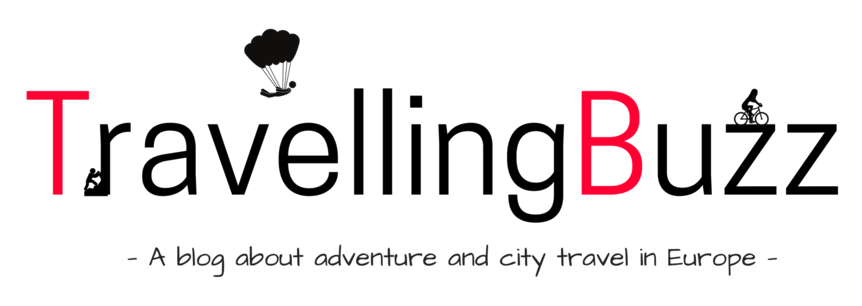
Written by Maria Stoyanova
Travel blogger and tourism graduate from Bulgaria, working in the field of Digital Marketing and PR for travel brands.
Plovdiv to be 2019 European Capital of Culture in Bulgaria
4 exciting neighbourhoods in lisbon you can't miss, latest comments.
Escape Hunter | November 17, 2014
They say climbing Mt.Musala isn’t that hard. Perhaps I should try… one day! Quite a detailed guide you have here. Inspirational 🙂

Maria | Author | November 18, 2014
Thank you! 🙂
Andrew | December 17, 2014
Absolutely phenomenal guide! Very well done!
Maria | Author | December 17, 2014
Thanks! I hope it is useful for your upcoming visit in Bulgaria!
Atanas | June 7, 2016
Wonderful guide for any newcomer to Bulgaria! Wonderful job! Bravo!
Xenia | October 12, 2016
This is by far the most comprehensive guide I’ve seen, thank you!
Regarding transportation, would it be more comfortable to travel long distance by bus or train? We’re looking to explore much of Bulgaria west to east and then into Romania, spending 4-6 hrs to move between each city… also, as I’m travelling with my cat in carrier: do long distance buses (Sofia to Varna) allow pets on board?
Maria | Author | October 12, 2016
Hi, Xenia! Long distance travel by train take far more time. I would suggest you use the bus. Also, different bus companies have different policies but generally, if you have a carrier, it won’t be a problem! Have fun!
Ajay Kumar | December 4, 2017
Really thanks for sharing this useful post !! Bulgaria is a nice place to visit for holidays and I will definitEly visit bulgaria in a short time. This post will really help me a lot while visiting Bulgaria.
LEAVE A COMMENT Cancel Reply
Save my name, email, and website in this browser for the next time I comment.
By using this form you agree with the storage and handling of your personal data by this website. For more information check our privacy policy *

- Privacy Overview
- Strictly Necessary Cookies
This website uses cookies so that we can provide you with the best user experience possible. Cookie information is stored in your browser and performs functions such as recognising you when you return to our website and helping our team to understand which sections of the website you find most interesting and useful.
Strictly Necessary Cookie should be enabled at all times so that we can save your preferences for cookie settings.
If you disable this cookie, we will not be able to save your preferences. This means that every time you visit this website you will need to enable or disable cookies again.
Bulgaria’s attractions for visitors have grown both in number and diversity. Food and wines are delicious and affordable. Museums, churches and monasteries are a window into Bulgaria’s rich and turbulent history. Annie Kay , author of Bulgaria: The Bradt Guide
It might be a cliché, but in Bulgaria there really is something for everyone. The question is: where to start?
Perhaps with the capital, Sofia – the perfect destination for a relaxing city break. The centre is compact and can easily be covered on foot at a gentle pace in a couple of days, even allowing for coffee and lunch breaks. There are some familiar fast-food and retail outlets, but there is also an eclectic mix of Viennese-style boulevards, monumental set-piece official buildings from the communist era and glorious gold-domed churches. The capital is very green with numerous parks, there are museums with recently unearthed treasures and a variety of colourful markets and stylish shops to discover. There are exciting new attractions, too: the Sofia History Museum, the new art gallery complex Kvadrat, and the excavated area of Ancient Serdika.
Outside Sofia there are several other rewarding towns and cities, such as Plovdiv, with its UNESCO-listed Old Town, and Veliko Turnovo, the former capital. The ski resorts of Bansko, Borovets and Pamporovo offer great skiing, great nightlife and great value. The Black Sea coast has fine beaches, watersports and nightclubs, but also quieter spots for family holidays, butterfly observation and birdwatching.
Rural Bulgaria has changed too in recent years: many young people have left for the cities or abroad, leaving an increasingly elderly population to work the land. However, investment in wineries, ecotourism and activity holidays should gradually attract more people back to the countryside. It is a wonderful place to drive; roads are quiet, wildlife is rich, the mountain scenery is unrivalled and there are monasteries, archaeological sites, caves and rock formations, as well as picturesque villages and vineyards, to visit.
Bulgarians tell a nice story against themselves: God was dividing up the earth between all the different peoples; characteristically the Bulgarians arrived late and God had nothing left. So he gave them a piece of Paradise.
So, whether you are looking for mountains or monasteries, wine or walking, beaches or birds, Bulgaria really does cater for all your needs. Visit and you will be welcomed with open arms.
Food and drink in Bulgaria
There are said to be three great cuisines in the world: French, Chinese and Turkish. Bulgarian cuisine is very similar to Turkish. Its strengths are the wonderfully tasty salads, vegetables, herbs and fruits. There are slow-cooked meat dishes, grilled meats and plenty of meat-free dishes based on eggs and cheese. Nowadays many vegetables are available all year round from imported sources, but if you stay with the local seasonal produce you’ll get the best flavours. For more information and illustrations, click here .
Often folk-style restaurants ( mehanas ) have a choice of dried herbs and spices on the table, to dip your bread in. Choubritsa (a Bulgarian dried herb), sharena sol ( choubritsa and salt) and paprika are the usual ones. Herbs are frequently used in cooking; local ones include savory, parsley, dill, mint, paprika and basil. The dipping of bread in this way is part of a traditional welcome; indeed, some restaurants have a waiter outside greeting guests by offering bread and herbs.
Salads are arguably the best part of the meal. The most popular is Shopska salad, named after the Shops, the people from around Sofia. This is a mixture of chopped tomatoes, cucumber, onion and fresh or preserved peppers, sprinkled with grated or crumbled sirene cheese (made from sheep’s or cow’s milk, this is the Bulgarian version of feta, subtly different, and available now in the UK at Bulgarian grocery shops).
There are many types of salad, and also single-ingredient salads of just tomatoes or baked peppers, for example. Snezhanka is made from chopped cucumber in strained yoghurt with garlic and chopped walnuts added. In summer the popular tarator (a cold soup) is essentially the same ingredients in a more liquid form and it’s very refreshing. In winter try turshiya , made from pickled vegetables such as cauliflowers, carrots, peppers and green tomatoes. Kyopolou is made by roasting aubergines and peppers and mixing them, minus their skin, with garlic, parsley and oil.
Bulgarian yoghurt, or kiselo mlyako , meaning ‘sour milk’, is world famous. It has a long history: the Thracians were very good at stockbreeding and produced a number of dairy products, and the word yoghurt is believed to be from the Thracian language. In 1905 the secret of Bulgarian yoghurt, a special bacteria named Lactobacillus bulgaricus, was discovered. There are different varieties made from the milk of cows, sheep, goats and buffaloes, and blends of these. In Bulgaria, they are all used for the preparation of various healthy dishes such as tarator and ayran (the ultimate drink for thirsty people – a mixture of yoghurt, water and salt).
Bulgaria has a long historical connection with wine; there is evidence of viticulture and winemaking in Thracian times. Archaeologists have proved this theory with their numerous finds of stone troughs which were used for winemaking and ageing. The wines of Thrace are mentioned by Homer in both The Iliad and The Odyssey .
Under the post-war communist government, wine production was nationalised. Winemaking became an industry as massive wineries, supplied by huge new vineyards, dramatically increased production levels. During the 1960s a more scientific approach was adopted, as varieties of grape were more carefully matched to the areas that provided the best growing environment for them. At this time too the classic grapes (mainly French) were introduced with resounding success.
Bulgaria’s winemakers are still fascinated by experiments with new grape varieties, but often blend them with indigenous grapes. Some older, almost forgotten, varieties are being revived.
Female travellers
In Sofia and on the coast the dress code for women is much the same as elsewhere in Europe, but in rural areas people are more conservative and, if you plan to travel alone, you should undoubtedly dress to camouflage rather than impress. You will certainly be stared at and commented on or even propositioned, but a firm rejection should suffice. As always, it is much better to avoid awkward situations than to have to get out of them. Travel with friends, or join forces with another solo traveller, especially in potentially hazardous places like overnight sleepers on trains.
Foreign and local businesswomen are treated in the same way as their male colleagues. Generally you will find Bulgarian men gallant in a way we have become unused to in the UK, opening doors and seating you at the table, for example. In both the private and public sectors there are many successful Bulgarian women, though attitudes to women are in general a little more conservative than in the UK, particularly among the older generation.
LGBTQ+ travellers
Although homosexuality is no longer illegal, outside the main cities and resorts there is little tolerance towards gay people. Overt displays of affection and flamboyant dressing should probably be avoided.
Travelling with a disability
Travellers with a disability, particularly wheelchair users, will find Bulgaria difficult. Few places have disabled access, many pavements are in poor repair, and many of the attractive old towns have steep and/or cobbled streets. New buildings are obliged to provide suitable access, but until the roads and pavements leading to them are better, there will still be problems. Public transport such as trams and buses are not adapted for wheelchair users, or those with walking difficulties.
Specialist UK-based tour operators that offer trips to Bulgaria include: Enable Holidays , Disabled Holidays , and Disabled Access Holidays .
Travel and visas in Bulgaria
UK nationals who hold a UK passport endorsed ‘British Citizen’ do not need a visa to visit Bulgaria for a period of up to 90 days in a six-month period. Passports should be valid for the period of the intended stay. Other UK passport holders require a visa and a passport that is valid for at least six months. Once the UK fully leaves the European Union, documentation requirements for UK citizens may change. Check before travelling.
Irish and other EU nationals do not need a visa to visit Bulgaria for a period of up to 90 days within a six-month period. A passport valid for the period of intended stay is required. Citizens of the USA, Canada, New Zealand and Australia do not need a visa to visit Bulgaria for a period of up to 90 days within a six-month period. Passports must be valid for at least three months after entry.
South Africans, however, do need a visa to enter Bulgaria. A passport valid for at least six months on entry is required and a visa will be issued only if blank pages are available.
Getting there and away
The main international airport is Sofia Airport . Terminal 2 opened in 2007 and is for international scheduled services. Terminal 1 is used for domestic, budget and charter flights. The three other airports, Plovdiv , Varna and Burgas , mainly operate with charter and budget flights.
There are regular flights between Sofia and Alicante, Amsterdam, Barcelona, Berlin, Brussels, Cologne, London, Madrid, Malaga, Manchester, Milan, Moscow, Palma de Mallorca, Paris, Prague, Rome, Tel Aviv, Vienna and Zurich, as well as internal flights to and from Burgas and Varna. There are also international flights to Burgas and Varna, but these are mainly holiday charters and mainly in summer. However, the budget airline WizzAir flies to both coastal airports several times weekly all year round from Luton airport.
There are no direct flights from Australia, New Zealand or Canada, so travellers from there will need to connect via a European hub.
There are trains from Belgrade, Bucharest, Istanbul, Munich, Thessalonika, Venice, Vienna, Zagreb and Zurich. From elsewhere in Europe you need to make a connection via these stations or along the route. Customs formalities and passport control are carried out on the train. For information and timetables, click here .
It is worth booking a sleeper, which is both the safest and most comfortable option. Tickets can be booked through any European rail agency. In Bulgaria, train tickets are sold by BDZ Passenger Services Ltd . International train tickets are sold in Sofia’s central railway station and in the central stations of 11 district towns.
Buses from all the major European cities run to Sofia, Plovdiv, Varna and Burgas. The biggest bus company is Eurolines , and from the UK there is also Balkan Horn .
It is very convenient to have a car in Bulgaria for travelling around the country, as there is a well-developed network of roads, although some are in poor condition. It is, however, a long drive there, so, unless it is part of some extended travelling, it may be easier to hire a car on arrival.
There is a compulsory road tax, which takes the form of an electronic vignette, and costs 10lv for a weekend, 15lv for a week and 30lv for a month. These are available at the border and major service stations, click here for more information. To cross any of the borders, you’ll need your personal documents and those proving ownership of your car, or the contract for your hire car, plus insurance documents.
When to visit Bulgaria
Bulgaria is very diverse geographically, and this is reflected in the climate, which is quite extreme. It can be bitterly cold in winter and uncomfortably hot in the cities in summer. The southwest has higher temperatures in both summer and winter, as warm air from the Aegean arrives via the Struma Valley. Places such as the ski resort of Pamporovo in the southern part of the Rhodope Mountains are noted for their mild sunny winters. The coast is hot in summer, though with pleasant sea breezes, and is usually damp and often misty in winter, but snowfalls, even of significant amounts, are possible.
Sofia is frequently foggy in winter with below-zero temperatures by day and night common, while in summer it is hot and sunny. The area north of the Balkan Mountains on the Danube Plain can be particularly bleak in winter, whereas to the south of the same range the Valley of the Roses and Thracian Plain are protected from the worst of the cold weather coming from the north.
Bulgaria has something to offer all year round. In spring the towns and cities blossom as parks and gardens reawaken and outdoor eating at cafés and restaurants begins again. For nature lovers this is the most spectacular time to come as plants flower and migrant birds return.
The Black Sea coast is the destination of most summer visitors, with its inexpensive water sports, fine beaches and lively nightlife, though increasingly the mountain resorts are attracting people to their new golf courses, as well as to more traditional summer activities such as hiking, biking, climbing and horse riding.
The summer is a good time to visit if you enjoy folklore and traditional festivities, as many small towns and villages organise local celebration. It can be almost too hot for sightseeing in Sofia and Plovdiv in summer, so it’s best to time a cultural visit in spring or autumn.
The winter is beautiful in the mountains and Bulgaria has some fine ski resorts. Music lovers might like to visit some of the big cities in winter, as there is a full programme of operatic and classical performances, as well as excellent restaurants, bars and nightclubs.
The choice is yours.
What to see and do in Bulgaria
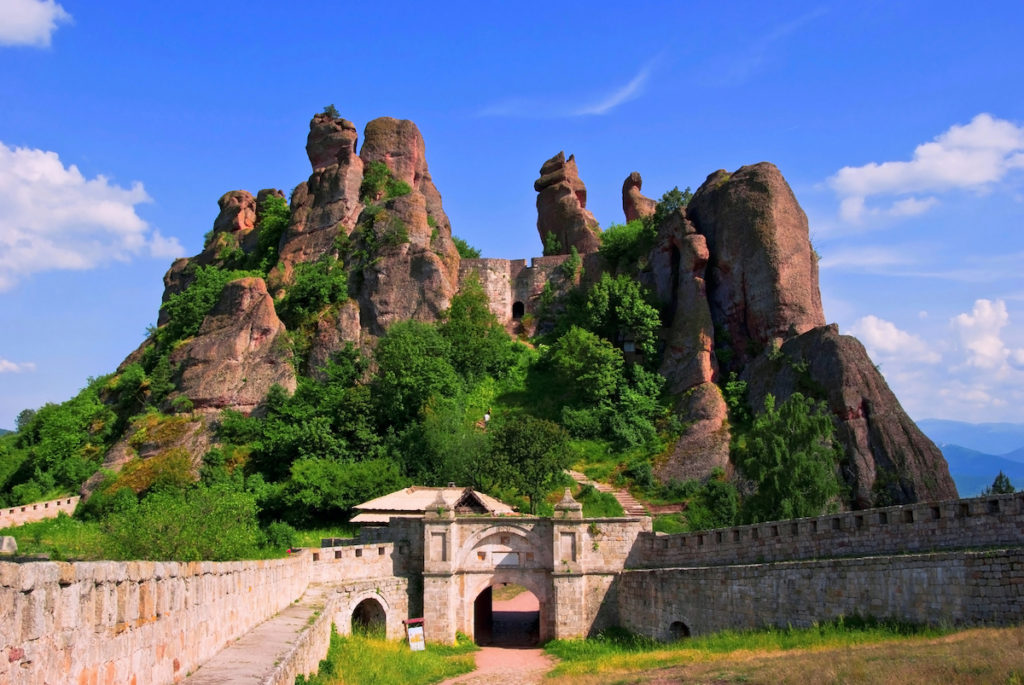
Belogradchik
The minor roads from Chiprovtsi to Belogradchik make a pleasant approach to this small Bulgarian town. There is a fascinating big yard used by charcoal burners, each dome of wood being a perfect hemisphere, despite being made from the heaps of stiff, awkward and angular branches. Closer to Belogradchik the landscape gradually changes and distinctive red rocks in crazy shapes dominate the view. The rock formations cover a huge area of over 50km2 and the town itself is situated among them.
For most visitors, the main attraction is this rocky landscape. Local people have given names to the most distinctive rocks: the bear, the mushrooms, Adam and Eve, the monk, the camel, the cuckoo, the horseman and many more.
Legends about the origins of the stones abound. In the past, one such story relates, there was a nunnery near the rocks. Sister Valentina, who took the veil and joined the nuns, was said to be very beautiful and rumours of her loveliness spread far and wide, even reaching a poor shepherd boy called Anton. Every night he tried to woo Valentina by playing his shepherd’s pipe beneath her window. Apparently the musical Romeo was successful and Valentina fell in love with him. Later she gave birth to a child and was of course expelled from the nunnery. God’s anger was turned on the convent and all the nuns were turned to stone; Valentina became a stone Madonna and poor shepherd Anton waits for his love among the stone figures.
In fact, the rock formations are a result of millions of years of geological activity as stratified rocks were covered by a sea in which river sand, gravel and clay were carried. In time these materials were joined together by silicon or sand-clay solder. Local iron oxide caused the redness. Other rocks of grey and white limestone were piled on top in some places during the Jurassic period, and because of the different levels of hardness the rocks have eroded unequally, thus creating the fantastic outlines of today. Amid this rockscape are caves and waterfalls, and the area is a haven for many unusual flowers and birds.
The natural rocky fortress on the edge of the town has three parts, each of which could be defended separately, and two main gates, named Vidin and Nish, presumably because of the direction they faced. There were barracks, arsenals, food stores, a prison, water cisterns and a flour mill. It housed about 3,000 defenders, and was last used during the Serbian–Bulgarian war of 1885.
The citadel, which is built into and amid the rocks, is the destination of most visitors. Its obvious strategic significance means that it has been a fortified site since Roman times, with Bulgarians and then Turks adding to its defences. Over time it has been the guardian of the approach to the Belogradchik Pass and a Turkish garrison intended to overawe the local population.
What to see and do in Koprivshtitsa
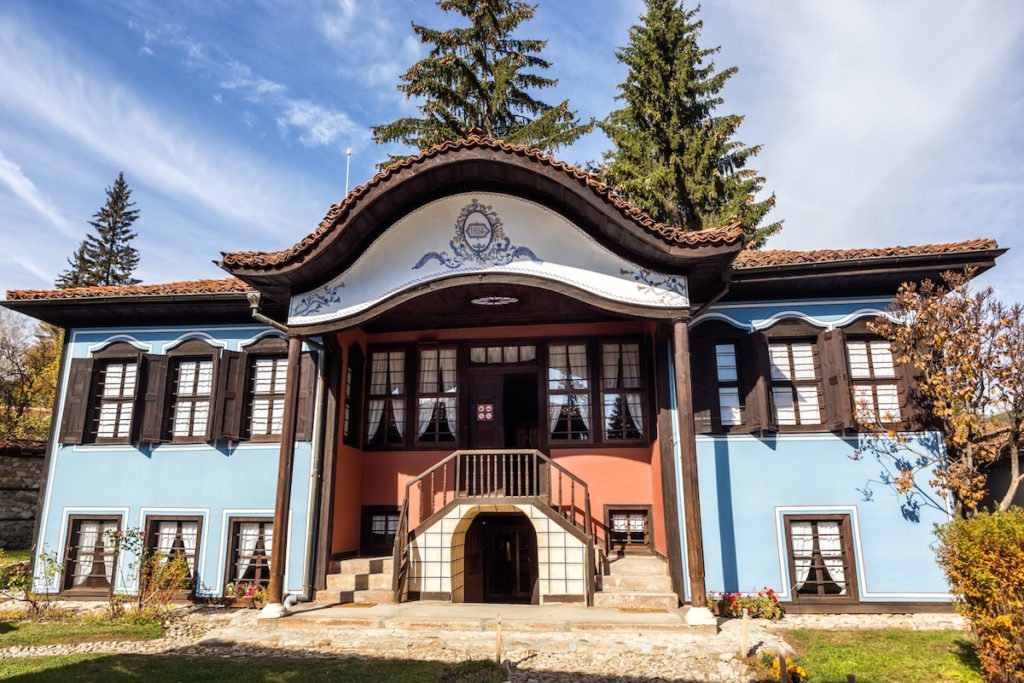
The house museums
The town is the birthplace of several well-known Bulgarians. Some of the Koprivshtitsa House-Museums recount their lives and display artefacts connected with them. Each house has a special charm and, as they are scattered around the town, a visit to all of them gives you a good itinerary for a walk. A permanent exhibition by the Georgi Benkovski House-Museum, Koprivshtitsa – Educational Centre during the National Revival is included in the joint ticket.
The earliest houses, in a very simple style, were built of wood and only one storey. Most of these were destroyed in the 1793 attack by Kurdzhaliya. One example remains: the Pavlikenski House (not open to the public). Those built in the first half of the 19th century, of which the Benkovski House is a good example, were two-storeyed with a veranda and sturdy doors. In the second half of the century the houses were larger and much more lavish. They had many windows, elaborate carvings and decorated ornamental niches ( alafrangas ), following the Plovdiv tradition.
The most popular to visit are Oslekov House and Todor Kableshekov, while Lyutov House, on the other side of the river, is considered the pinnacle of Koprivshtitsa’s building achievements.
The churches
The town also has two churches. The Assumption of the Virgin Mary , built in 1817, replaced the one burned down by Kurdzhaliya at the end of the 18th century. The icons and woodcarvings are by well-known craftsmen including Zahari Zograf. The iconostasis and pulpit are particularly elaborate. The church itself is inconspicuous, as the Ottomans required, and painted bright blue like many of the nearby houses to avoid drawing attention to itself. The prominent bell tower was added much later.
The so-called new church, built in 1844 and dedicated to Sv Nikolai , was funded by wealthy families in the town. Sv Nikolai is the patron saint of those who travel by sea or make long and hazardous journeys, so he was an obvious choice for the well-travelled merchants of Koprivshtitsa.
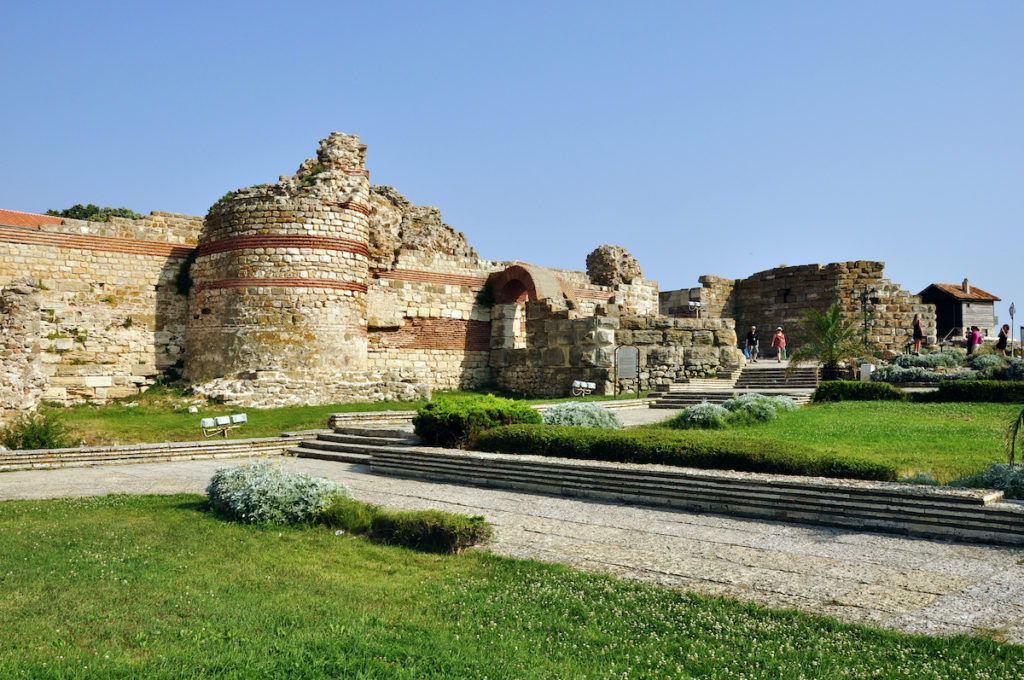
The beauty of Nesebur is threatened by its proximity to Sunny Beach. In high season it is very busy, and stalls, cafés and restaurants vie for the visitor’s attention. Yet even then actually, if you walk away from the centre, it is still just possible to get a feel for this little peninsula as it once was. This small space was home to as many as 40 churches constructed between the 5th and 17th centuries, many of which remain in part or whole.
This Bulgarian settlement is one of the oldest in Europe, with traces of Thracian settlement in the 2nd millennium BC. During the time of ancient Greece it was known as Mesembria, and was part of the Roman Empire in the 4th to 6th centuries. It retained this name until about the 11th century. Then, as Nesebur, it changed hands many times between the Byzantine and Bulgarian empires in the 12th and 13th centuries, but in the 14th, when it remained Bulgarian, it flourished, and many of its most interesting sites are from this time.
What to see in Nesebur
After crossing the causeway with its wooden windmill, once a common sight on the coast, you see the town gate and the ruins of some outer walls, layers surviving from Greek, Roman and Byzantine eras.
The numerous churches dotted around the peninsula are the wealth of Nesebur, many in the traditional local style with bands of white stone alternating with red brick, often decorated with blind arcading, ceramic discs and rosettes.
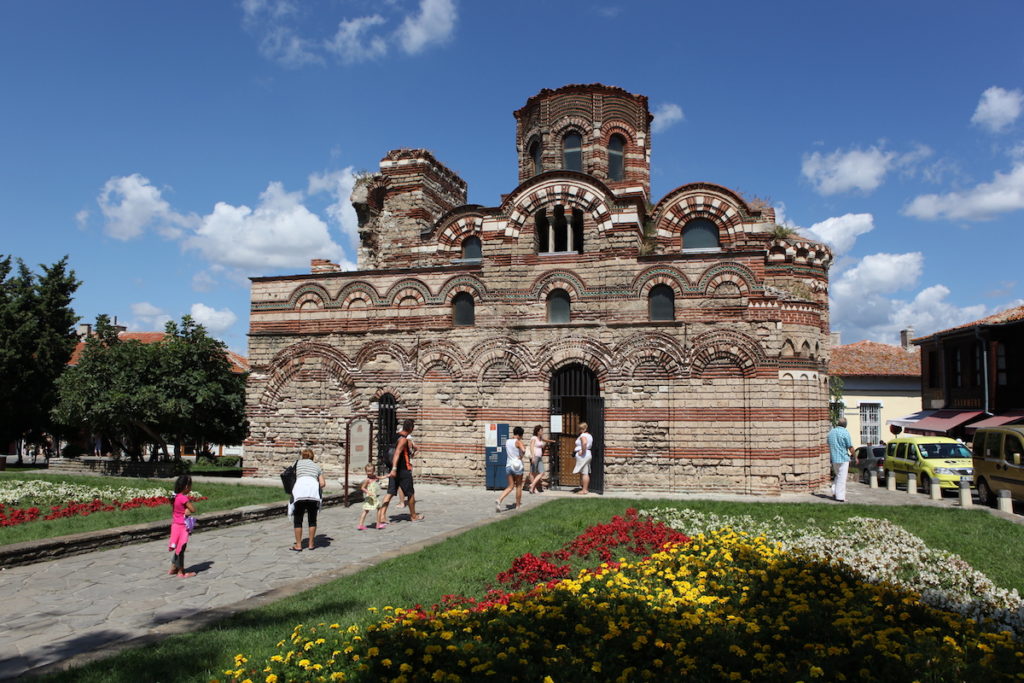
Holy Pantocrator Church of Christ
Situated close to the town gate, this medieval church dates from the 14th century and is one of the best-preserved in Bulgaria. The shape is cruciform and domed, and the stone and brick exterior is decorated with ceramic inserts.
The frieze of swastikas always attracts the attention of visitors; the swastika is an old religious symbol based on the form of a Greek cross. There is usually an exhibition by local artists inside the church.
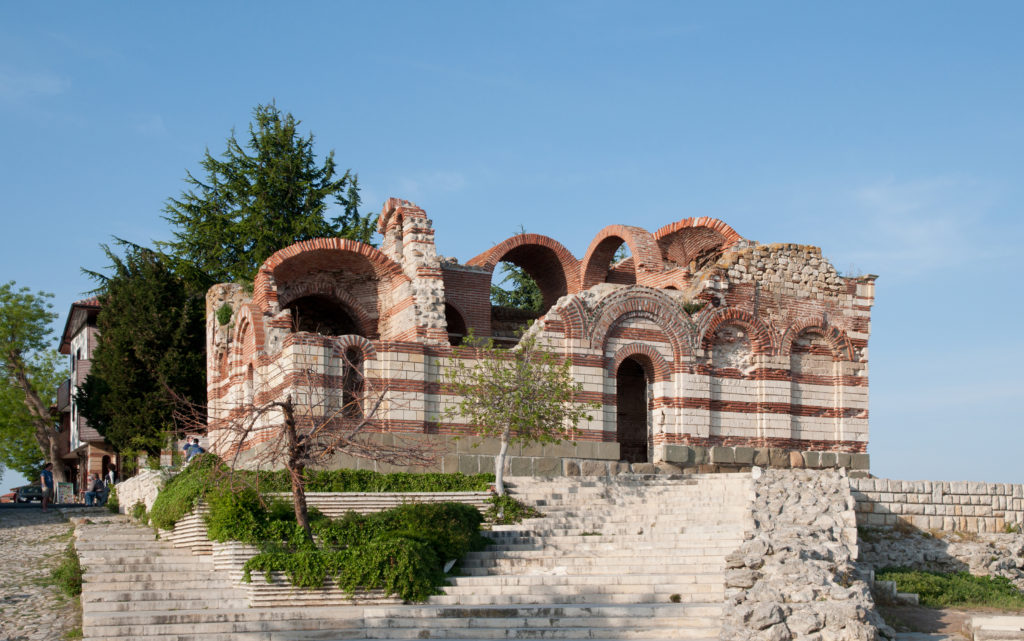
Sv Ivan Aliturgitos
Meaning St John the Unconsecrated, this architectural masterpiece is close to the harbour and entrance gate. This church is beautifully adorned and its striking silhouette is often used in photographs to demonstrate the skill of local church builders.
The details are fascinating: patterns of mussel shells, images of the sun, decorative plaques, crosses and even four-leafed clovers. This was built in the 14th century, but much damaged by the 1913 earthquake.
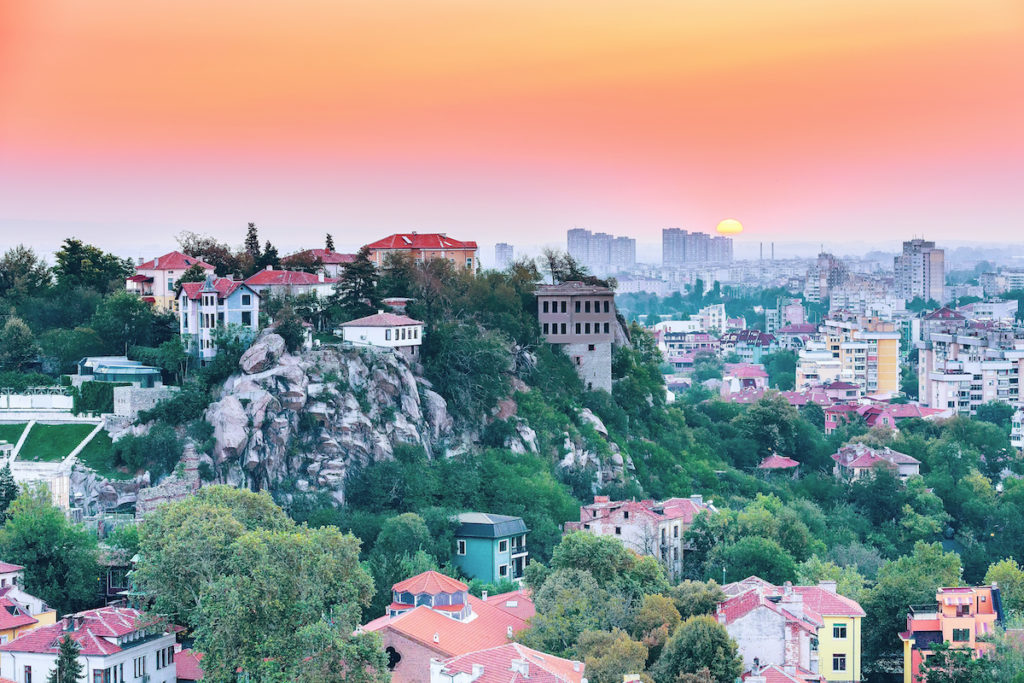
With its attractive Old Town, Plovdiv is often considered more appealing than Sofia: much of its charm lies in the incongruous juxtaposition of ancient, medieval and modern. The development of the Kapana Creative District has revitalised the new town and attracted young artists to the city. Known as Phillipopolis in ancient times, and Filibeto by the Turks, Plovdiv has Classical remains, Byzantine churches, mosques and some of the country’s finest National Revival domestic buildings. It is also an excellent base for exploring the Rhodope Mountains and villages.
Approaching from the north it is easy to understand why Plovdiv is an ancient settlement, as its hills rising from the Thracian Plain are the most significant natural landmark. It sits on both banks of the Maritsa River and has been a commercial and transport centre over the centuries. The climate is particularly favourable, with an early spring, a hot summer and a mild winter. Its strategic importance made it the target for invaders, and each new occupier has left their mark.
The treaty of San Stefano in 1878 envisaged Plovdiv as the capital of the newly liberated Bulgaria, as it was centrally placed, and already a commercial centre. However, the revision of the treaty at the Congress of Berlin was dominated by the Western powers who feared the expansion of Russian interests in the Balkans.
They divided Bulgaria into two parts: the new principality of Bulgaria and the province of Eastern Rumelia which was to remain under the influence of Turkey, with Plovdiv as its capital. The two united in 1885 on 6 September, a date which is still celebrated as a national holiday. By then Sofia was established as the new capital, and Plovdiv remains a splendid second city.
What to see in Plovdiv
Plovdiv is divided into two main parts, the Old Town built on three hills and the modern central area, which includes the popular Kapana Creative District, a pedestrianised area full of shops, restaurants and galleries. Elsewhere in the new town are some other Roman and Ottoman sites of interest.
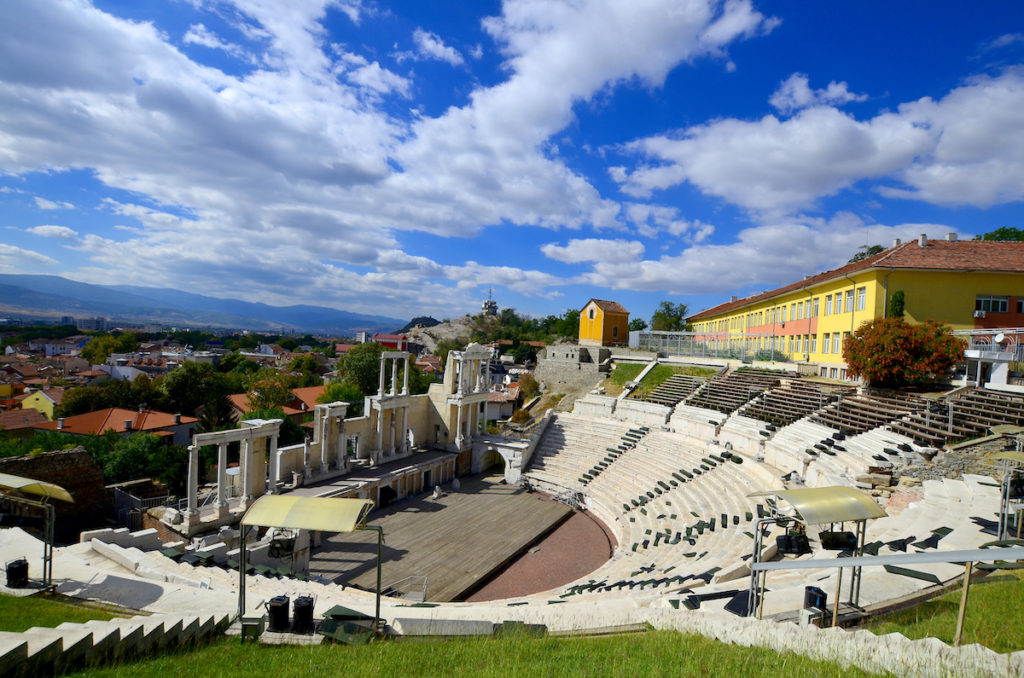
Ancient Theatre of Phillipopolis
The photogenically cobbled Old Town is a place to wander and savour. The labyrinthine street pattern means following your nose is a better strategy than following a map. All roads seem to lead to the Ancient Theatre of Phillipopolis. Plovdiv’s most famous and spectacular landmark seats 4,000 spectators in 11 semi-circular tiers set into the hillside.
The backdrop of the stage is a tastefully restored façade of Ionic columns and statues – and the navy outline of the Rhodope Mountains behind that. Visit is you can during an evening concert or performance for the full effect of the place.
National Revival-style houses
Plovdiv has some of the finest National Revival-style houses in Bulgaria. Entry to each house is 5lv. A route ticket (available from participating houses and Tourist Information Centres, 15lv; valid 48hrs) gives entry to five houses. There is also a Plovdiv City Card (22lv; valid 24hrs) which gives free entry to over ten venues (a few of the National Revival houses, but not all), as well as the Roman Theatre and some museums, and discounts at selected restaurants and shops.
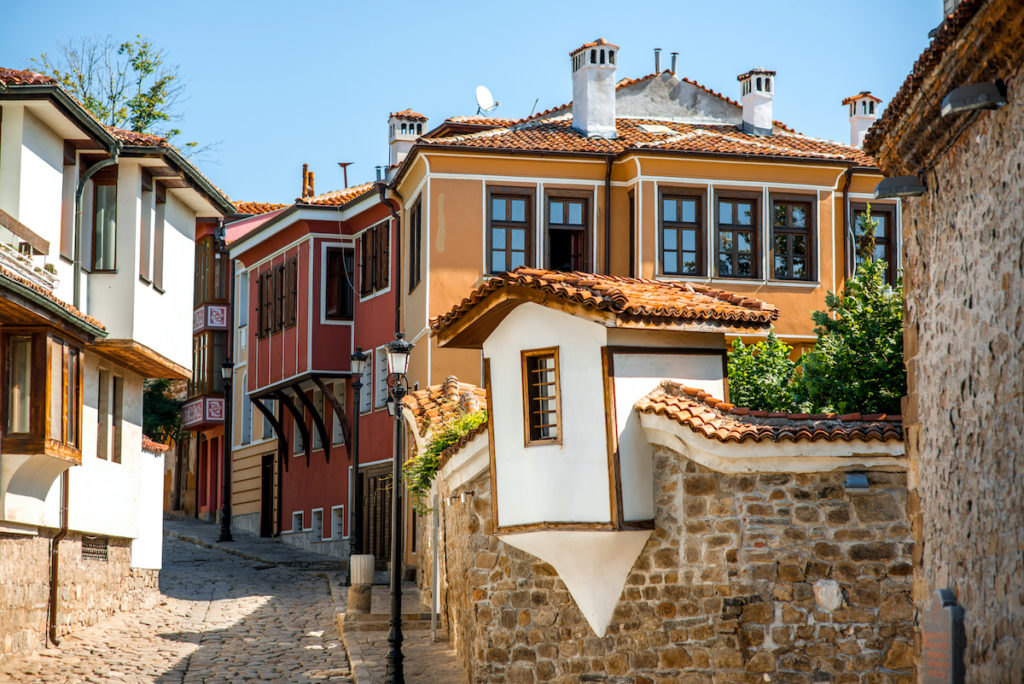
The architectural challenges of building on steep, narrow streets have been met and to overcome the lack of space at street level, the upper storeys were built outwards on wooden beams and trusses so they almost meet across the street above your head. Many of these Old Town houses have been restored and are open to the public – for most visitors, two or three will be sufficient.
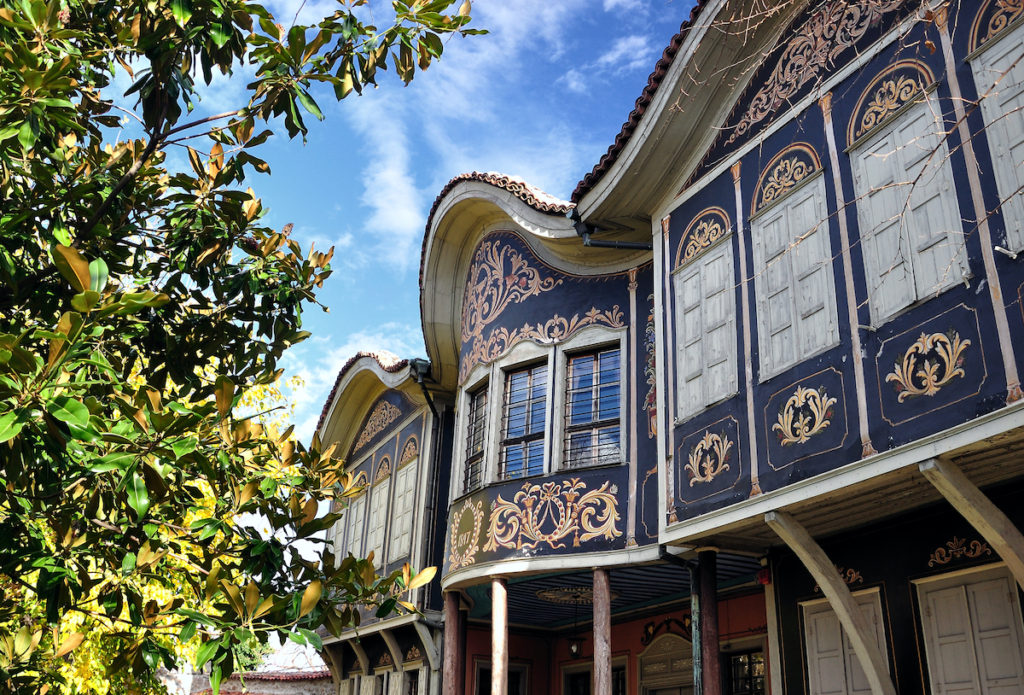
Ethnographic Museum
The Ethnographic Museum is in a beautiful old house, dating from 1847. Probably Plovdiv’s most photographed building, it was built for a rich Greek merchant, Argir Kuyumdzhioglou. Sometimes on a summer evening there are chamber music performances in the garden; a small fountain adds its music, and the slightly sour smell of box trees and the sweeter perfume of roses complete the sensory experience.
The museum opened in 1962, and has a rich collection illustrating local skills such as the making of tobacco, wine and cheese, textiles and weaving, costumes, folklore traditions and music. The house itself is a joy to be inside, especially is you are lucky enough to catch it at a quiet time. The ceiling in the main upstairs hall features a stunning rosette and sunburst pattern. Outside, the roof sweeps in voluptuous curves, and ornate felt wreaths decorate its façade.
The New Town
Two mosques of note sit in Plovdiv’s New Town. The Dzhumaya or Friday Mosque probably dates from the 14th century. It is a very large, fine building with beautiful floral motifs inside. It was and is the major mosque in Plovdiv. Its minaret is particularly eye-catching, with its diagonal pattern of red bricks on white mortar. Visitors who find the mosque open are welcome to enter. Northeast of the mosque was traditionally a bazaar area and it is still busy with shops, cafés and stalls, which continue across the footbridge over the River Maritsa.
The Imaret Mosque was built in 1444 and named after the imaret or pilgrims’ accommodation that was nearby. It stands in a small garden and has been restored in recent years. The twisted patterns on its minaret are striking.
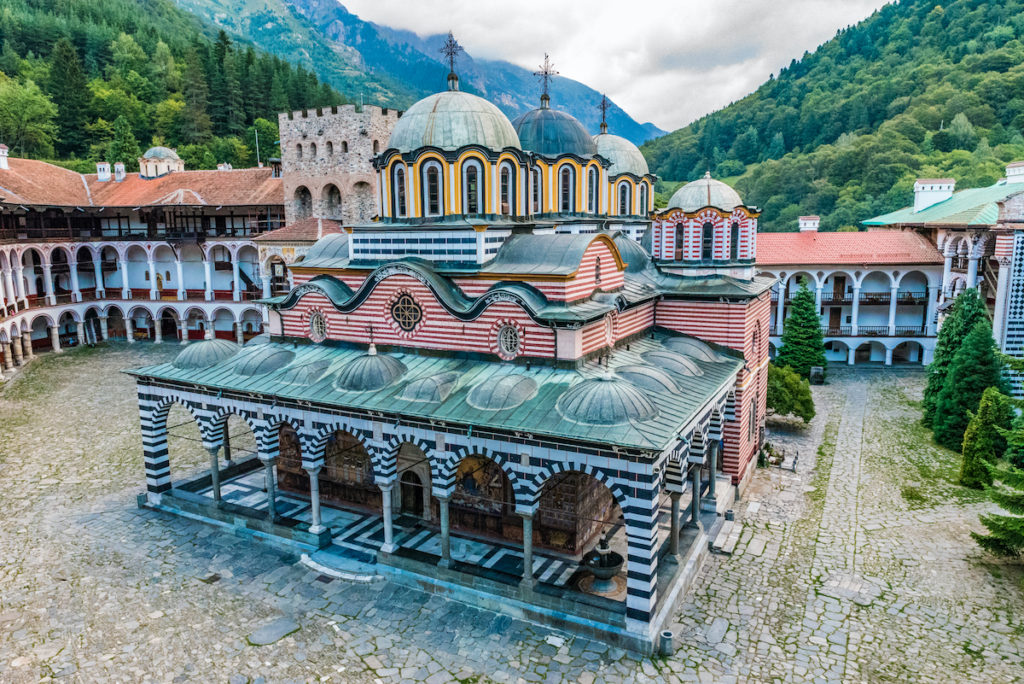
Rila Monastery
The road to Rila Monastery runs beside the River Rilska through beautiful wooded mountains. In summer and at weekends it is exceptionally busy, and, surrounded by buses and cars, it is hard to imagine what a remote and quiet place this was for most of its history. If you can arrive early, perhaps on a winter morning when a dusting of snow picks out the architectural features, then you may experience that feeling of awe at the immense walls and astonishment at the vibrant colours in the courtyard.
The first sight of the monastery’s towering exterior gives the impression of a fortress; in the past this security was necessary, as the wealth of the monastery attracted bandits and robbers, though its remote situation in the mountains and its altitude, 1,150m, helped to protect it. The founder, Ivan Rilski (880–946), was a hermit who sought enlightenment in the solitude of this place, but his reputation as a wise man with healing powers generated followers. In response to their requests he founded a religious community, which soon became a place of pilgrimage for people from all over the Balkans.
The monastery has occupied this location since 1335, a few kilometres southwest of the original hermitage, under the patronage of the bolyar , Stefan Hrelyo Dragovol. The oldest of the buildings visible today, Hrelyo’s Tower was built then.
The monastery suffered damage and destruction during the Ottoman conquest and the subsequent occupation, but after each setback renovation soon began again. The return of the relics of Ivan Rilski from Veliko Turnovo in 1469 was a significant event for the growing importance of the monastery.
After the great fire of 1833, the Ottoman sultan allowed the rebuilding of the monastery, and plentiful financial donations from the people, together with the gifts of time and skills by many great artists and craftsmen, resulted in the splendid building we see now.
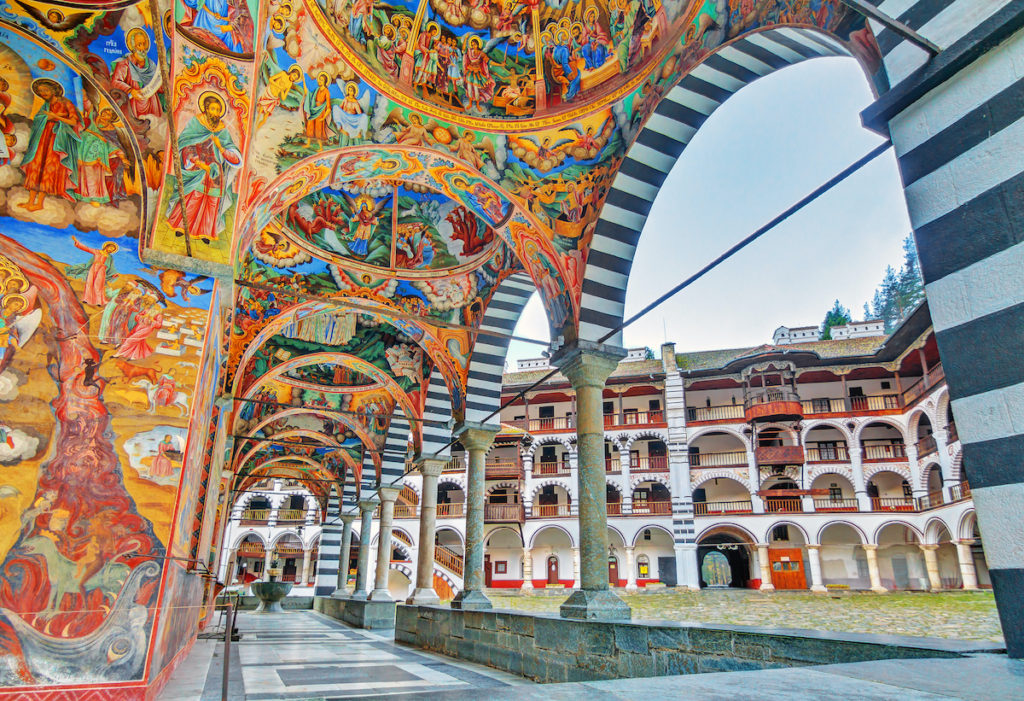
Passing through the huge gates of the monastery for the first time is one of life’s special moments: the scene changes from grey severity to a carnival of colour. All round the enormous courtyard are tiers of monks’ cells behind boldly decorated, arcaded balconies. In the centre, the church itself, with richly coloured frescoes in the shelter of its porch, is the focus of attention, its lavishness emphasised by the simplicity of the 14th-century tower alongside it.
The temptation to conclude the visual feast by going straight into the Church of the Nativity of the Virgin Mary should not be resisted. The iconostasis is a splendid mass of intricate carvings, heavily decorated with gold leaf. It is made of walnut wood and its subjects are from nature: flowers, fruits and birds.
The pulpit and bishop’s throne echo its magnificence and the colours are repeated and strengthened in the frescoes covering every available wall, ceiling and arch. Zahari Zograf, perhaps Bulgaria’s most famous mural painter, was one of the artists who worked here. The theme of the frescoes is the triumph of good over evil and light over darkness. The mood is optimistic and the colours light. The external frescoes have particularly lively depictions of the seven deadly sins and the descent of their perpetrators into Hell.
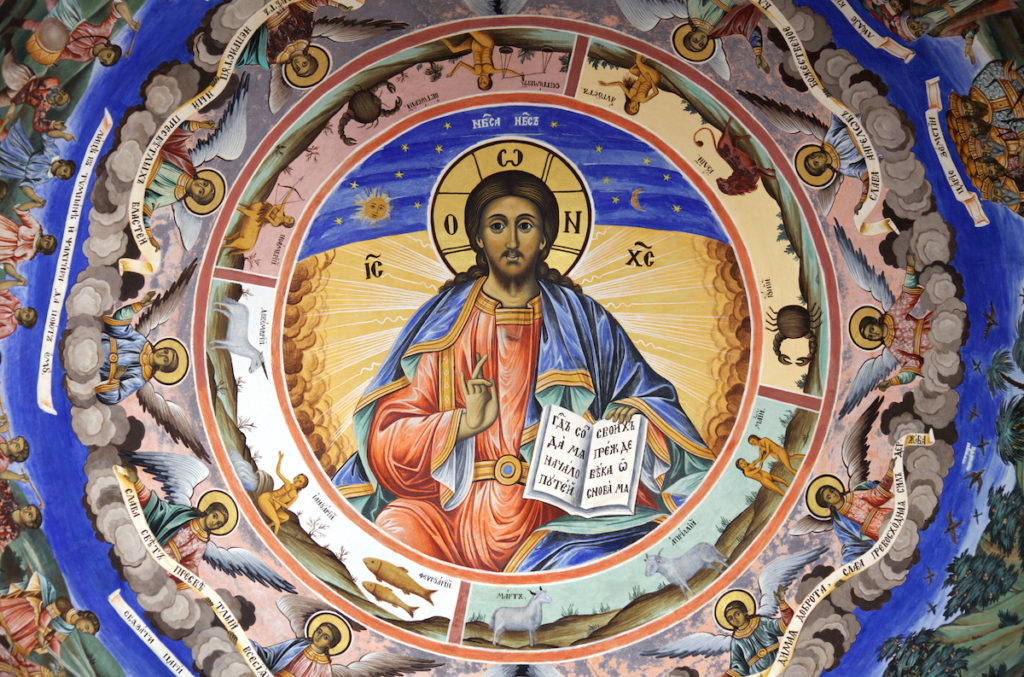
At the time of its completion it was the largest monastery church in the Balkans. It is a cruciform shape with several altars and two chapels. The acoustics are excellent, and hearing a service there is a wonderful experience. The service is preceded by a monk walking round the outside of the church banging a wooden stick, a ceremony said to be a reminder of Christ being nailed to the cross.
Sofia has the buzz of a capital city and the convenience of a compact centre where all the main sights can be visited on foot, many on the famous yellow brick road, the central area paved in 1906–07 with stone ‘marl’ produced in a factory near Budapest. The city has a good selection of museums, religious buildings of several faiths and in many styles, from the ancient and unassuming Sv Sophia to the iconic Sv Aleksandur Nevski, and numerous good hotels, restaurants, cafés and bars. It has a UNESCO World Heritage Site, Boyana Church, and its own mountain, Vitosha, right on the edge of the city, providing skiing in winter and wonderful walks, climbs, flowers, birds and fresh, cool air in summer.
Sofia has only been Bulgaria’s capital since 1879 so its main boulevards are from the late 19th century, but in among them are some older sites: the Neolithic settlement at Slatina; the Roman rotunda of Sv Georgi and several recently excavated Roman buildings discovered during the construction of the metro; and the sunken Church of Sv Petka Samardzhiiska, which was built in Ottoman times.
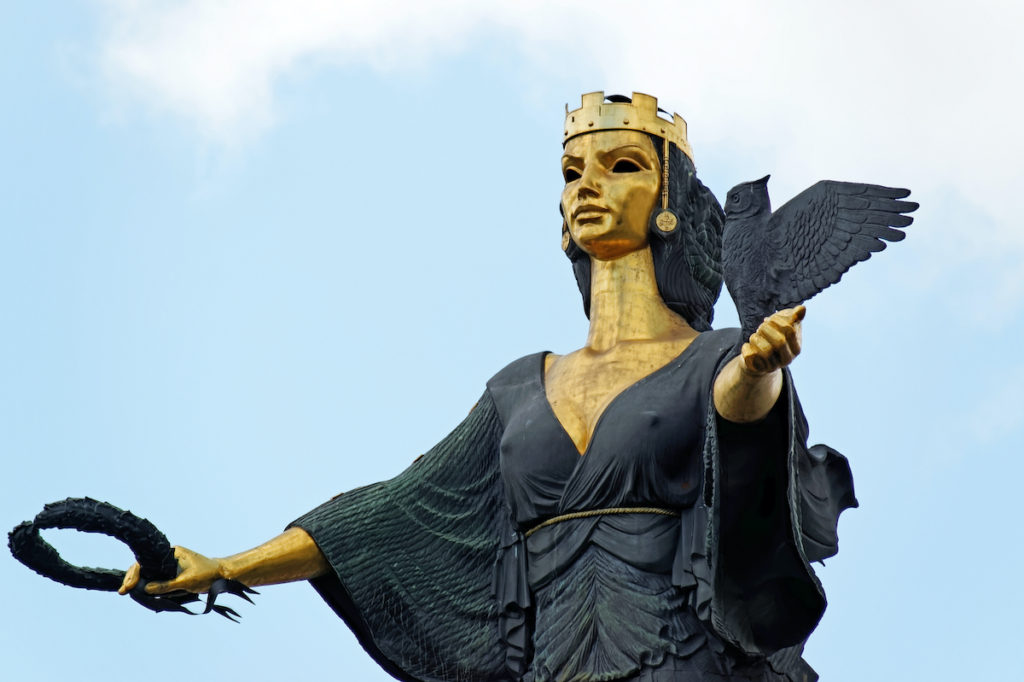
There are several monuments and buildings reflecting Bulgaria’s long and close relationship with Russia: the sine statue of Tsar Alexander II the Liberator, the Russian Church of Sv Nikolai and the Sv Aleksnadur Nevski Memorial Chuch, for example. There is a mosque and a synagogue; indeed in the central pl Sv Nedelya you can see the Orthodox Church, the Banya Bashi Mosque, the recently built Catholic Cathedral of St Joseph and the Synagogue within a few hundred metres of each other.
Sofia in the 21st century has a real energy and a feeling of being a city that is on the up. It is also a rather placed city, expecially in summer, when people-watching while strolling and sitting at pavement cafés are favourite evening occupations. However, there’s plenty of culture available too: affordable opera, classical music, film and theatre. Bars, clubs and a wealth of excellent restaurants make spending a few, or indeed many, days in Sofia a pleasure.
What to see in Sofia
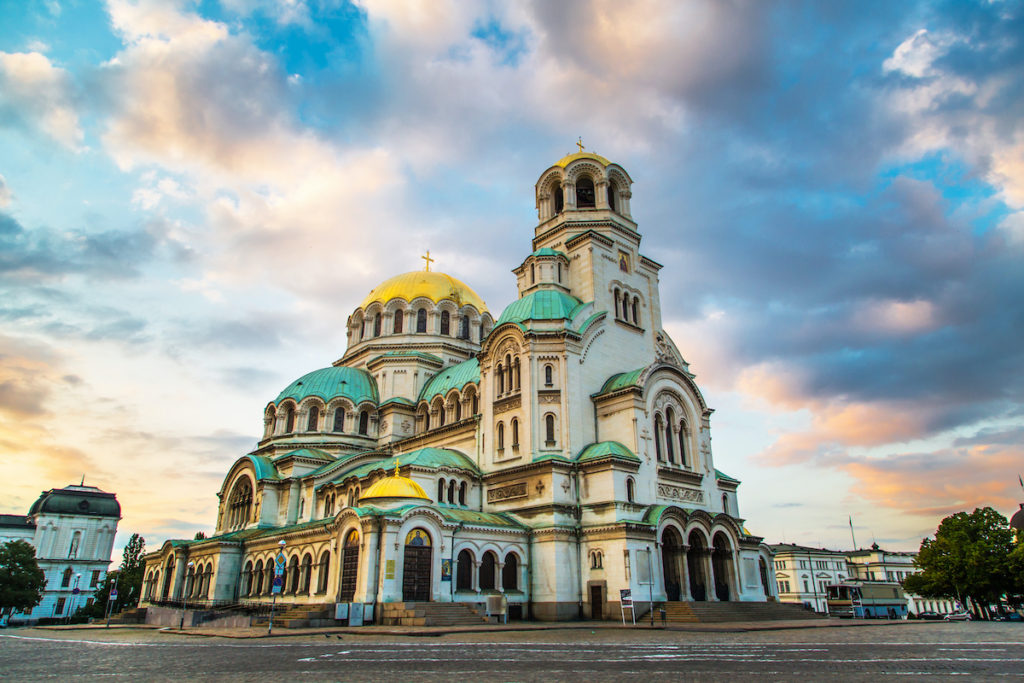
Sv Aleksandur Nevski Memorial Church
If you’re planning a walking tour of the city, it’s probably best to start here as it is the largest and most visible building in Sofia. Although the Church of Sv Sophia gave the capital its name, this much-photographed memorial church is the symbol of the city.
Sofia’s skyline is dominated by its gleaming golden domes. It was built in honour of the 200,000 Russian casualties who died fighting for Bulgaria’s independence in the Russo- Turkish War of 1877–78 and is named after Sv Aleksandur Nevski, a Russian prince who saved his country from invasion in the 13th century, and was the patron saint of Tsar Aleksandur II, Bulgaria’s liberator.
The foundation stone was laid in 1882, but the real construction works started in 1904 and finished in 1912 when a period of wars started in Bulgaria, so the official consecration only took place in 1924. Craftsmen and artists worked for many years to create this enormous church, which is said to hold over 5,000 people.
The belfry is 52m high and contains 12 bells, whose clamour is audible across the city. Its lavish exterior is, even so, surpassed by the frescoed interior and splendid iconostasis and the golden mosaics. There are nearly 300 mural paintings, including a dramatic vision of God in the main cupola and a Day of Judgement as a timely reminder above the exit.
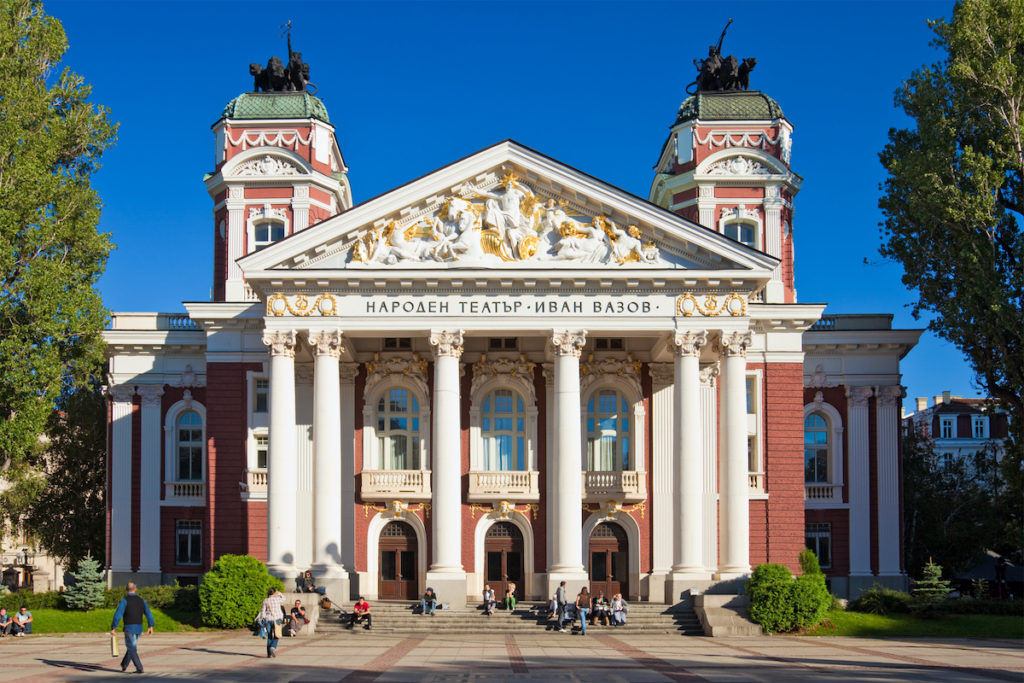
Ivan Vazov National Theatre
The theatre was built in 1907 by two Austrian architects and is one of Sofia’s most elaborate buildings. Above the six white marble columns in the pediment is a scene of Apollo and the Muses, and on the two towers behind that the muse of tragedy Melpomene and the muse of dance Terpsichore are on chariots, drawn by lions.
The theatre has a capacity of 850 people. Inside there are colourful hangings woven by women from Panagyurishte and a vivid fire-bird on the stage curtain taken from Stravinsky’s ballet. In summer, lovely outdoor cafés are created in this area.
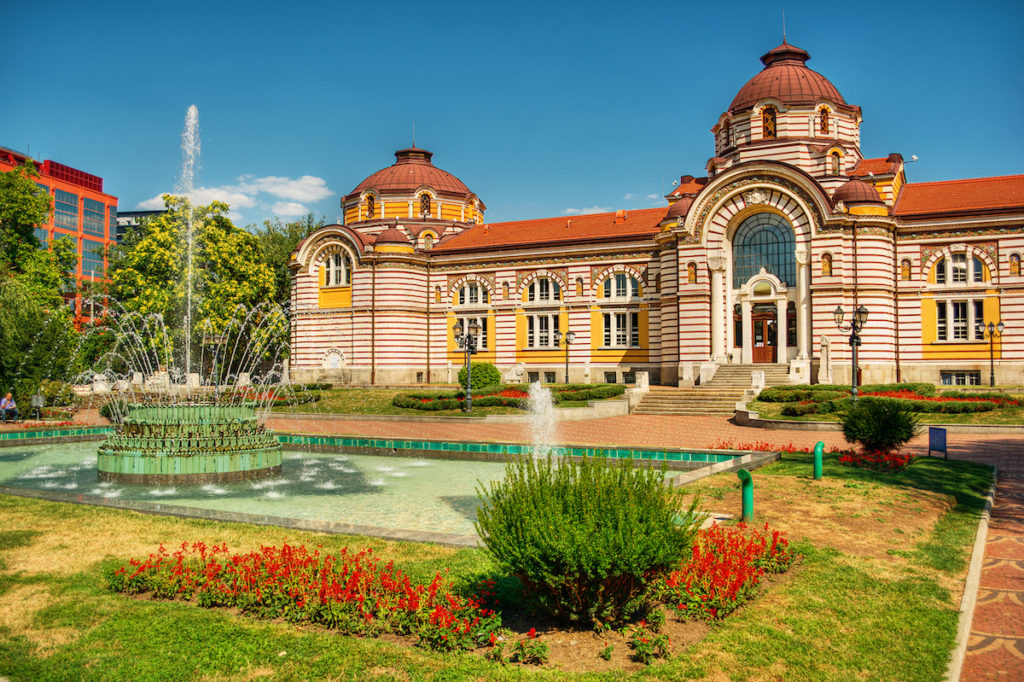
Mineral Baths
Bulgarians are generally rather interested in the different types of mineral water; sometimes in the most remote of places you will see a line of parked cars and a queue of people waiting beside a water spout with their plastic containers. The mineral baths in Sofia are no exception, and there are often long queues of people waiting to collect water from the tapped springs. This spectacular building was for a long time in a state of extreme decrepitude but has now been painstakingly restored to its original condition.
The larger rooms have become the exhibition space of the Sofia History Museum , which has long had a collection but until now no home. The exhibits include materials from archaeological excavations, coins, jewellery, weapons, clothing and the belongings of some famous figures such as Stefan Stambolov and Tsar Ferdinand.
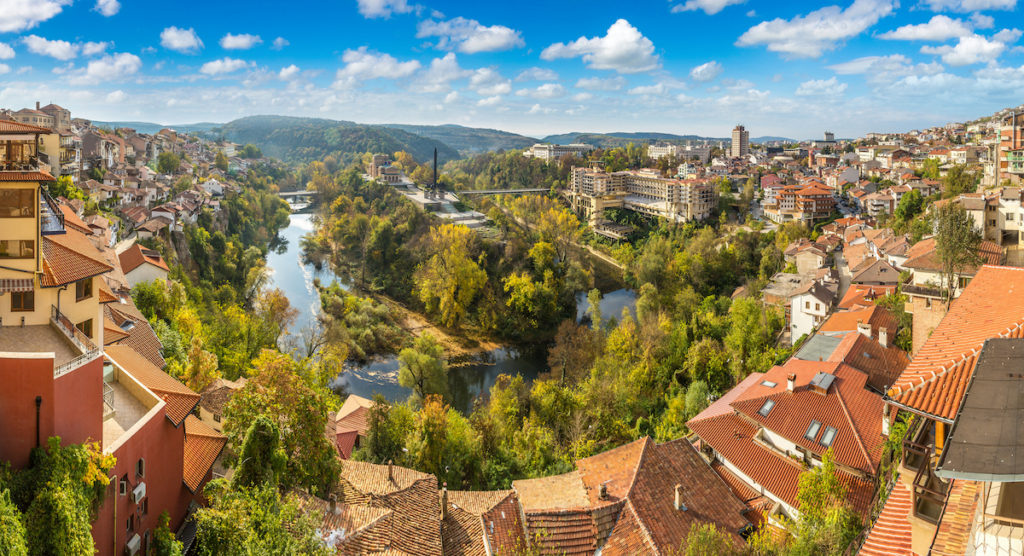
Veliko Turnovo
Veliko Turnovo was the capital of Bulgaria during its period of medieval greatness (12th–14th century – Second Bulgarian Kingdom). After 500 years of subjugation under the Ottoman Empire, Veliko Turnovo was, symbolically, chosen in 1879 as the location for the meeting of the Grand National Assembly, which drew up the constitution of the newly liberated state.
Veliko Turnovo is probably the most picturesque Bulgarian city, its houses seemingly stacked up on the high banks of the sinuous River Yantra. In medieval times it was seen as second only to Constantinople in splendour, and it became a flourishing city again during the 19th-century National Revival.
It is set on three hills round which the river curves and loops. Each house is perched vertiginously on a precipice, some houses actually needing to be entered through the house below them. Every building has successfully overcome major architectural problems.
It is possible to walk along an alley with buildings towering above you on one side and an aerial view of a church belfry on the other. There are tantalising glimpses across to the Tsarevets and Trapezitsa hills, and wonderful views across the river to the wooded hillsides which surround the city.
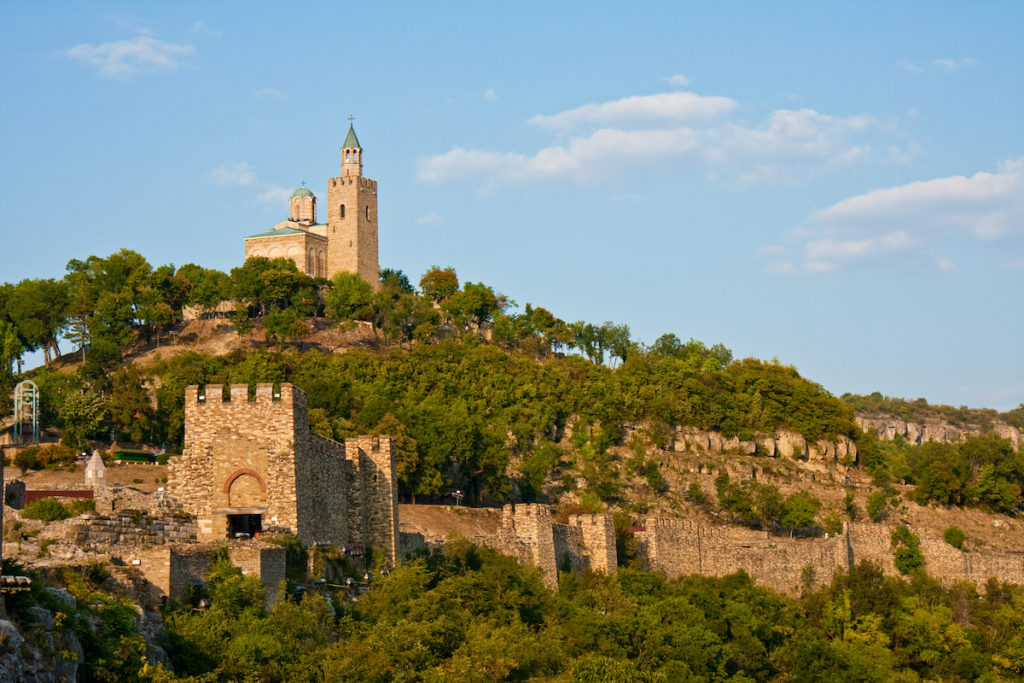
It is worth going down to the riverbank in the evening; here frogs croak out their courtship songs, and the houses and lights are reflected in the water. From a distance the whole improbable structure of the city looks as if it is bound together only by the fragile lacework of vines, roses and geraniums which seem to grow on, up and over the houses.
Related books
For more information, see our guide to Bulgaria :
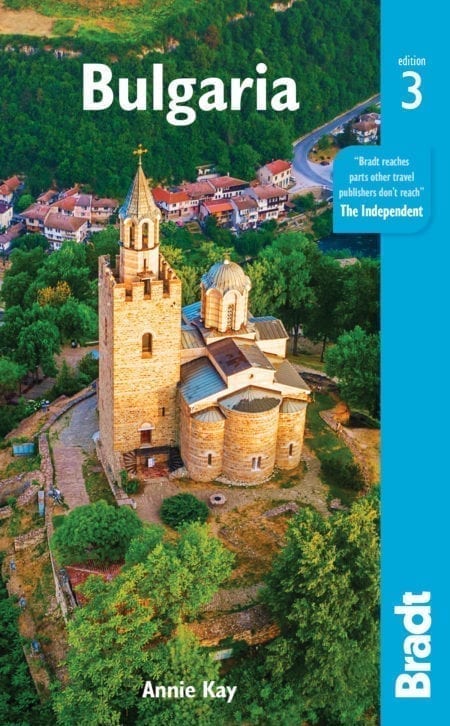
Related articles
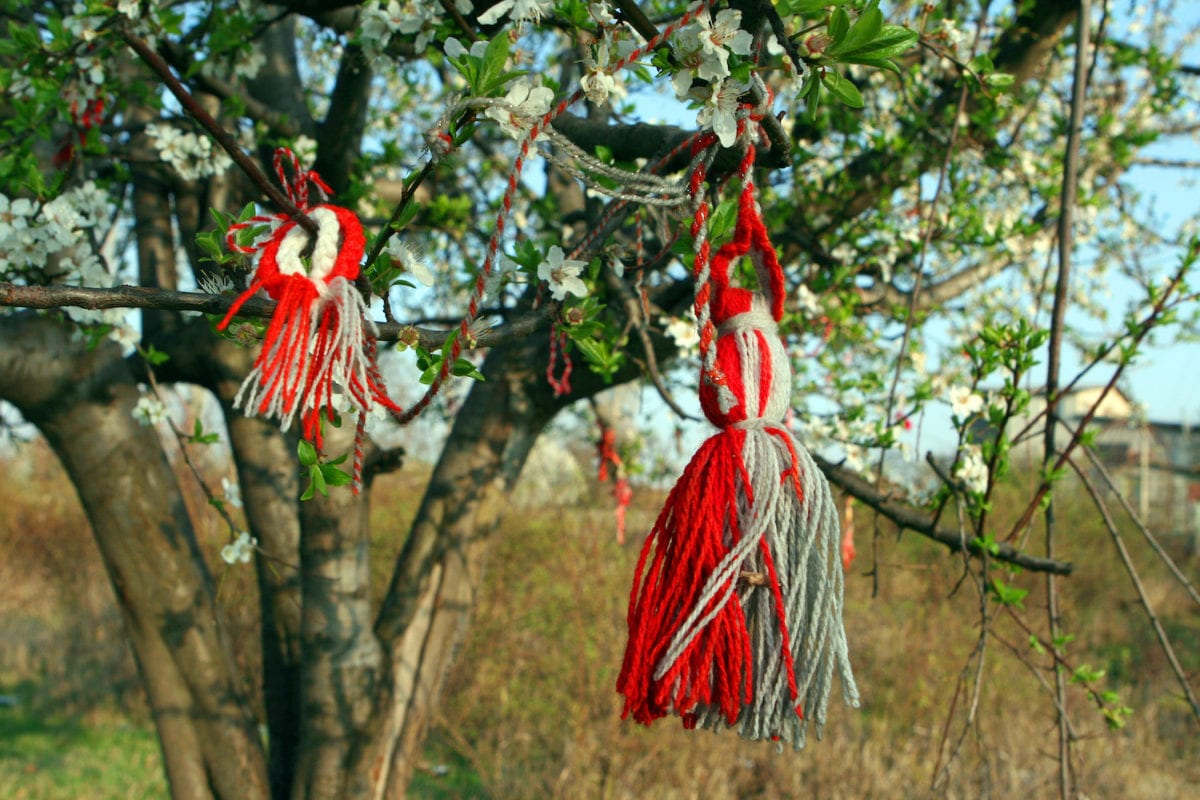
Bulgaria’s intangible cultural heritage
From carpet-weaving to fire-dancing.
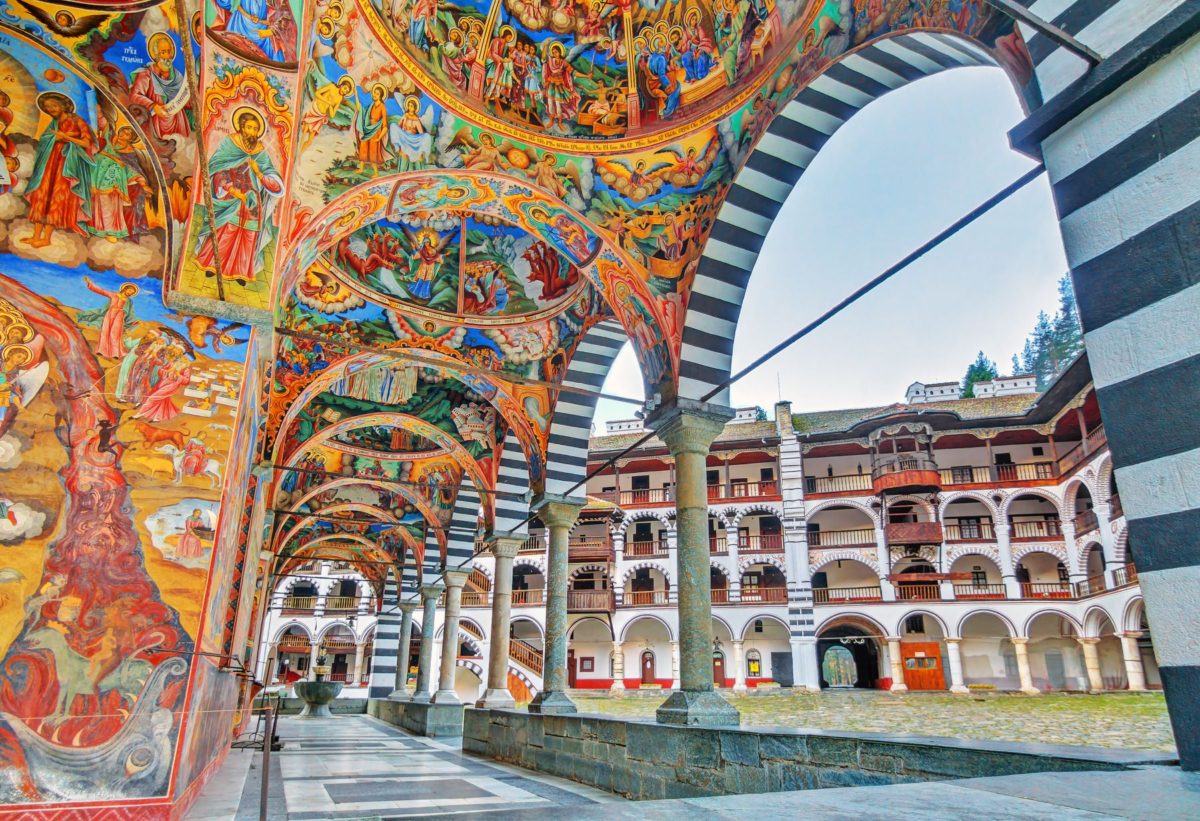
Monasteries, mountains and magnificent architecture: the best of Bulgaria
What not to miss on a visit to this culturally rich country.
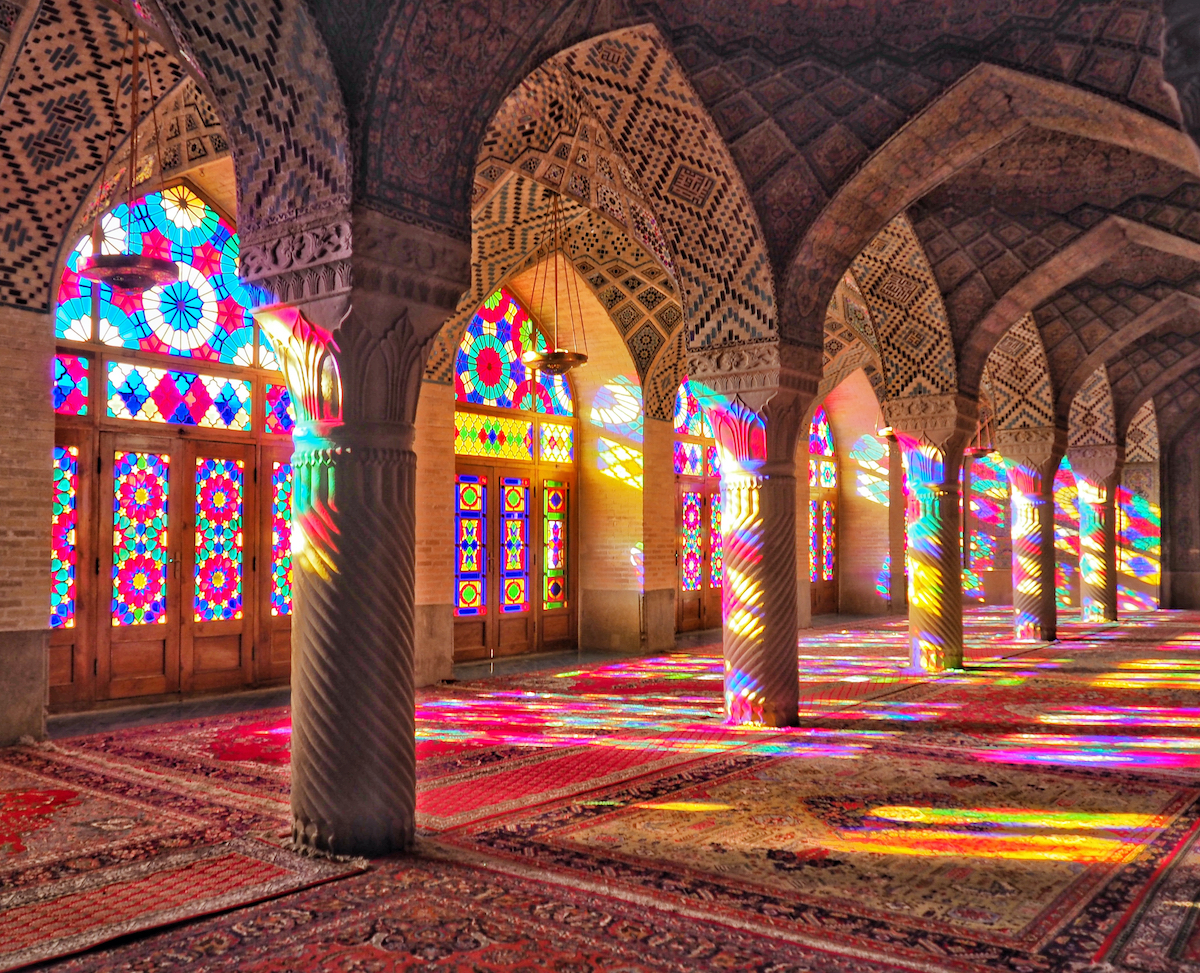
Brighten up your day with the world’s most colourful places
Sit back and enjoy this kaleidoscope of colours.
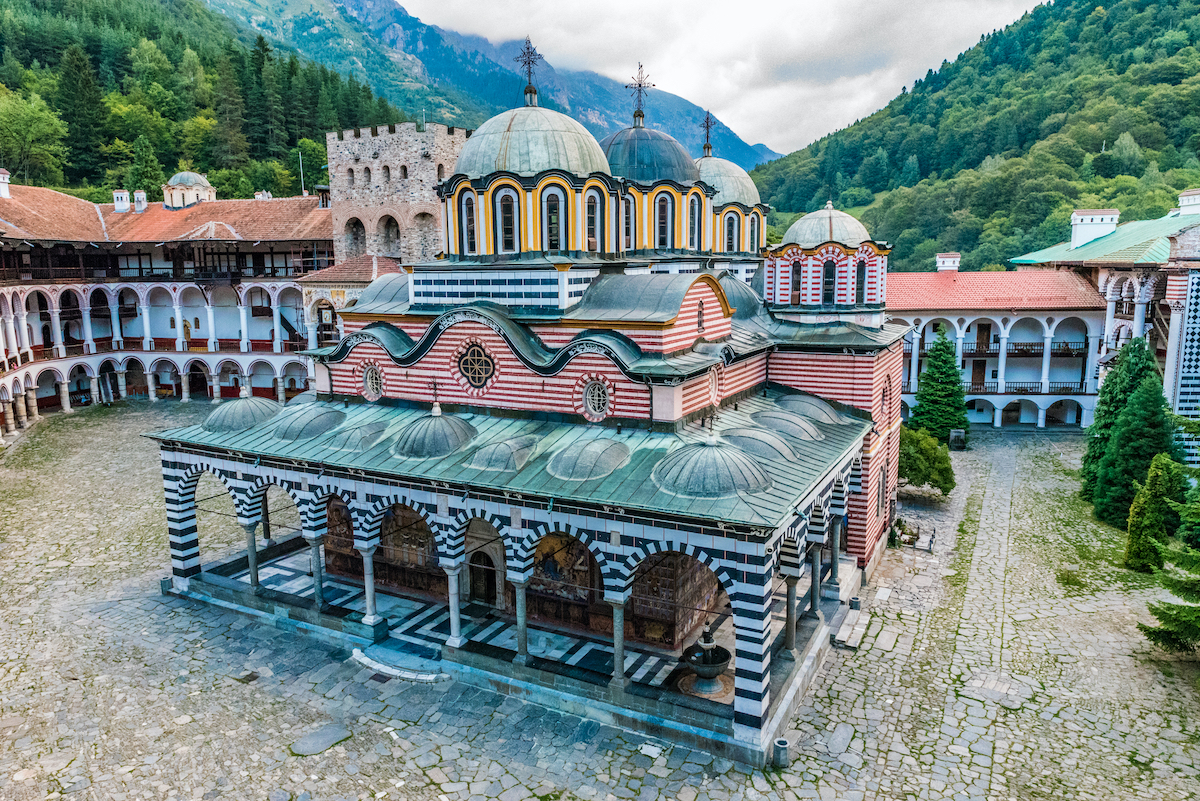
Welcome to Bulgaria: a land of magnificent monasteries
While some are a carnival of colour, others are characterised by a serene tranquillity.
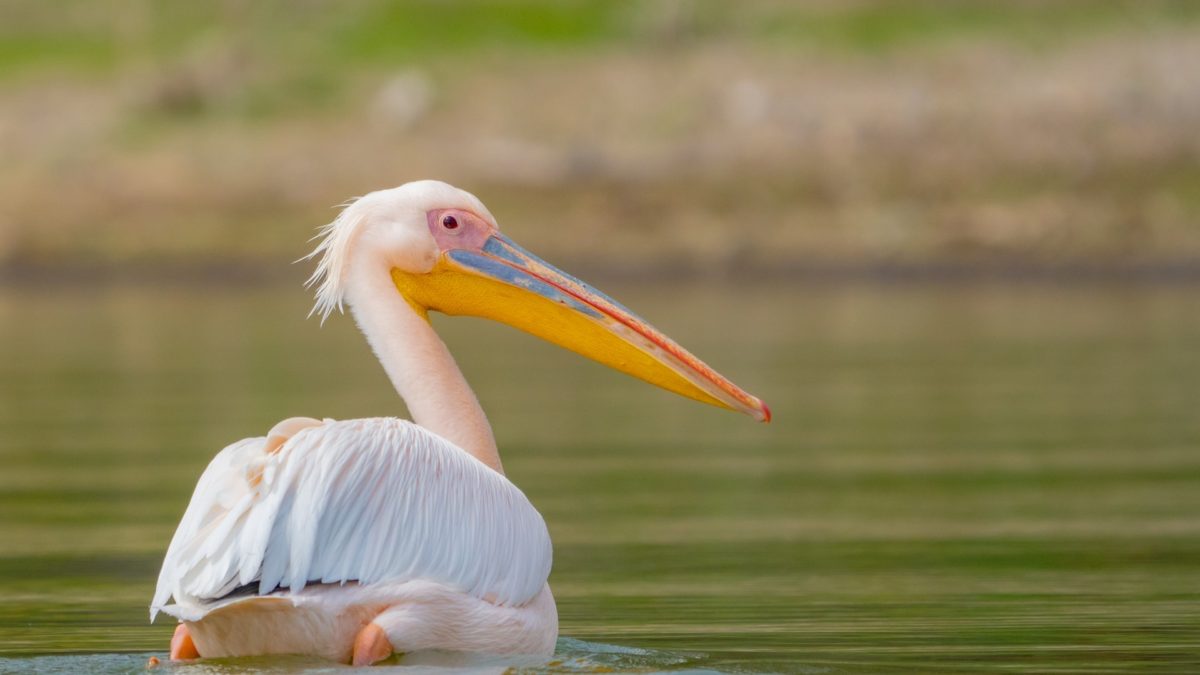
Burgas Wetlands: the birding Mecca
This area is attractive to birdwatchers all year round.
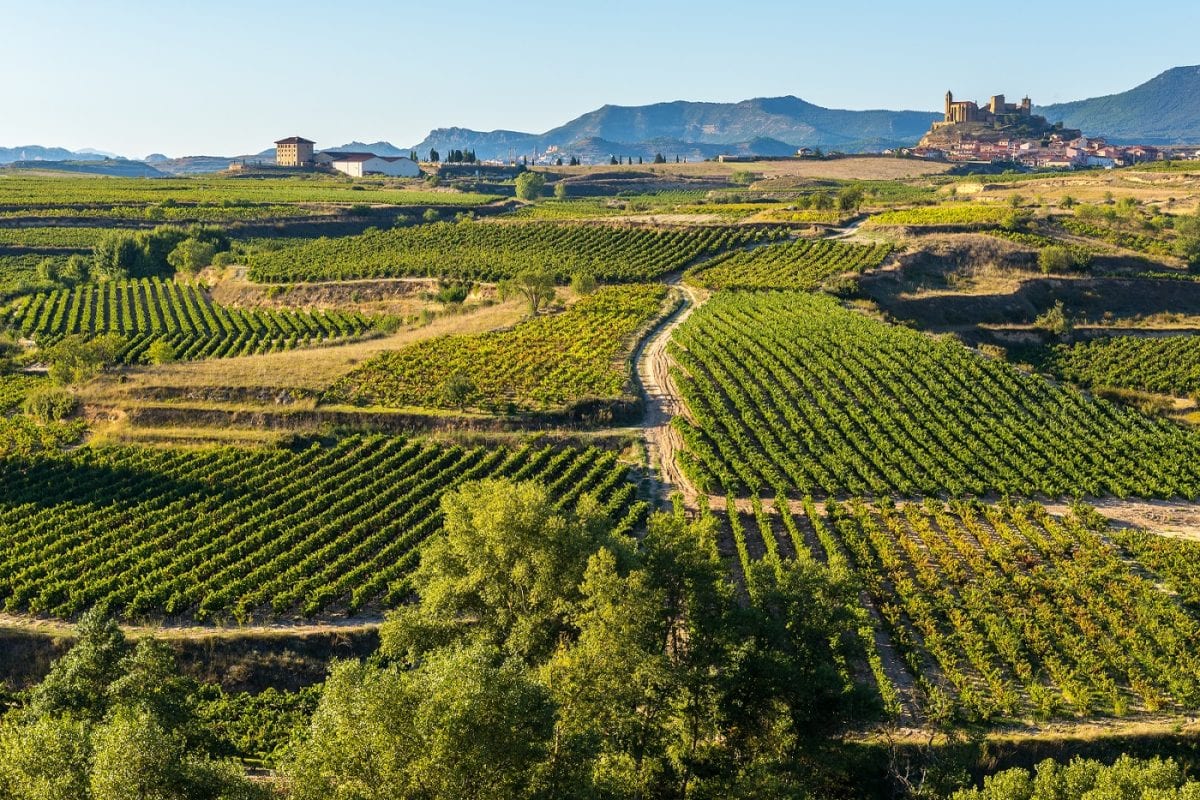
The world’s best lesser-known wine regions
We’ve all heard of Burgundy and Tuscany, but what about Kosovo and Israel?
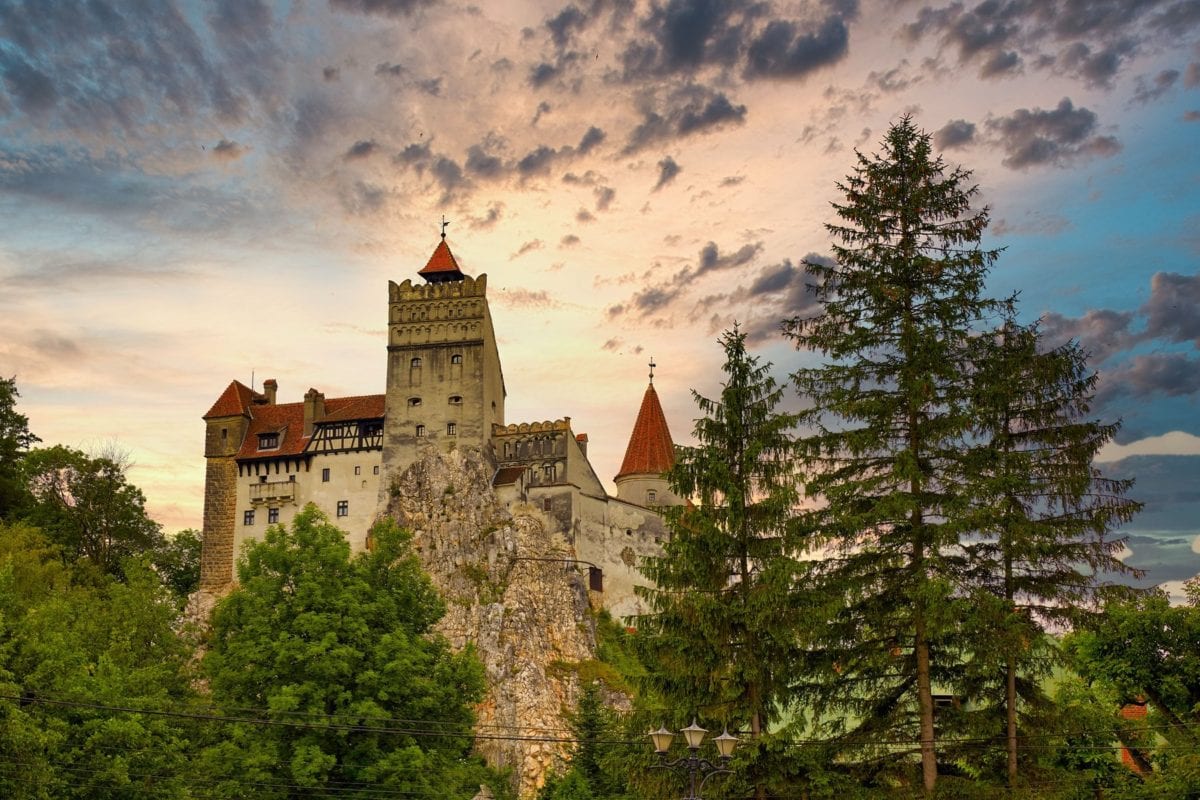
An Englishman’s home: Europe’s most impressive castles
From complex histories to spectacular architecture, castles have so much to offer.

- Bulgarian rose
- Nestinarstvo
- History and culture
- Veliko Tarnovo
- Events and Festivals
- Useful information
- Travel responsibly
- Getting around
In a small part of the world, Bulgaria has a variety of mountains and routes through which incredible natural formations can be seen.
In Bulgarian folklore, legends and folk traditions contribute to the enrichment of the culture by weaving together the past and present.
If you visit Bulgaria you are assured of a variety of places and interesting stories related to the history and culture of these lands.
Some cities across the country will captivate you. Urban tourism will reveal the personality of each city and its attractions.
Bulgarian cuisine is very varied in flavours, spices, vegetables and meats. It has Arab influence and that of the Balkan region.
Plenty of events and festivals are happening throughout the year. We gather to share emotions and build a sense of fellowship.
Bulgaria is becoming popular among Digital Nomads. Find why and how to work from here while having fun and exploring new country.

Explore the most popular LOCATIONS

Capital of Bulgaria, this city dates back to the Roman Empire and is now the hub of the country.

The Seven Rila Lakes
Nestled in the Rila mountain range, these captivating lakes are a picturesque alpine adventure.

City of Plovdiv
Located in 7 hills, this city is the second largest in Bulgaria and one of Europe’s oldest.

Rila Monastery
It is the largest monastery in Bulgaria and is recognised as a UNESCO World Heritage Site.

City of Veliko Tarnovo
The old but majestic Bulgarian capital. Most Bulgarians consider this city the most beautiful.

Town of Koprivshtitsa
Travel back in time to the Second Bulgarian kingdom with a thematic historical exhibition.

Tips when travelling to BULGARIA
Consider travel insurance for trip incidents during your visit.
Safety First
The Global Peace Index ranks Bulgaria 28th in safety.
Check with the local government if it is required when entering the country.
Research your Destination, local customs, and traditions.
Join us this September on CAMPER
10 day-adventure.
We will travel more than 1200 km with camper around Bulgaria.
Outdoor Kitchen
During the trip, chef's will be cooking our food day and night.
6 Experiences
Folkloric concert, kayaking, visit to a bear sanctuary, hiking and more.
15 Locations
Monasteries, natural wonders, villages, thracian citiest and more.
Popular topics in BULGARIA
Bulgaria is a very colourful and interesting country that can surprise visitors in various ways and has something for everyone. This section includes a selection of popular subjects.

Suggestions for travelling more RESPONSIBLY
Bottle of water.
Bring your reusable water bottle on a day out.
Reduce energy and water costs in your travels.
Local Business
Visit independent cafes, pubs, and shops.
Call 112 to report bad practices. It's free and effective.
Have a look at our popular ARTICLES
Check out some of our most recent articles for tips or new and interesting information on Bulgarian tourism. Some of them can even take you on a unique journey through Bulgaria, introducing you to one of its many faces.

18 Facts About Plovdiv That You Probably Didn’t Know
Plovdiv is the second-largest city in Bulgaria and one of the oldest continuously inhabited cities in the world.

What are the most interesting day tours from Sofia by car?
You might be thinking what else to do if you have seen Sofia already? Check what day tours by car you can do around Sofia.

Digital Nomad Haven
Use Bulgaria to its full potential as a location-independent work and travel destination. Discover it with this Digital Nomad Guide.

Ancient civilizations – The Thracians on the Bulgarian lands
Thracians were pastoralists and farmers who also engaged in mining, metals, ceramics, leatherworking, and woodworking.

Taste The Tradition: 11 Free Bulgarian Food Festivals
Explore the rich and various flavors of Bulgaria by attending one of the many free food festivals in Bulgaria!

The Ultimate Melodic Summer: The Best Music Festivals in Bulgaria
A complete guide to music festivals in Bulgaria in 2022. Discover the best events and festivals to attend this summer.

20 Places you need to visit in Bulgaria
20 Places you need to visit in Bulgaria Known for its plethora of ancient ruins, whitewashed villages, sunny beaches, tasty cuisine and friendly atmos

10 things everyone should do in Bulgaria
10 things everyone should do in Bulgaria When it comes to travel, I’m not one of those people who says stuff like, “You can’t visit Bulgaria wit

18 reasons you should book a trip to Bulgaria ASAP
18 reasons you should book a trip to Bulgaria If you’ve been wondering what your next travel destination should be, why not consider Bulgaria?
The platform was developed to give visitors information about this magnificent nation. We hope you find it beneficial and have a wonderful time in Bulgaria.
Helpful links
- About us About us
- Camper trip Camper trip
- Work with us Coming soon
- Projects Coming soon
- Our mission
- Work with us
Looking for something?
We’ve covered almost every aspect of your travel interests.

Bulgaria Travel Guide
National Geographic’s latest travel stories about Bulgaria
- Terms of Use
- Privacy Policy
- Your US State Privacy Rights
- Children's Online Privacy Policy
- Interest-Based Ads
- About Nielsen Measurement
- Do Not Sell or Share My Personal Information
- Nat Geo Home
- Attend a Live Event
- Book a Trip
- Inspire Your Kids
- Shop Nat Geo
- Visit the D.C. Museum
- Learn About Our Impact
- Support Our Mission
- Advertise With Us
- Customer Service
- Renew Subscription
- Manage Your Subscription
- Work at Nat Geo
- Sign Up for Our Newsletters
- Contribute to Protect the Planet
Copyright © 1996-2015 National Geographic Society Copyright © 2015-2024 National Geographic Partners, LLC. All rights reserved

IMAGES
VIDEO
COMMENTS
A bus from Sofia to Varna costs around 33 BGN and takes seven hours, while Varna to Plovdiv is 27 BGN and also takes seven hours. A three-hour journey from Sofia to Veliko Tarnovo shouldn't cost more than 30 BGN. Train - Train travel in Bulgaria is often cheaper than taking the bus, but it's a lot slower.
A first-time guide to Bulgaria. Jul 2, 2024 • 6 min read. Cycling. How to take a bikepacking adventure on Bulgaria's Dunav Ultra . Oct 20, 2023 • 7 min read. History. Explore the Balkans on these four epic drives. Feb 1, 2021 • 5 min read. Skiing.
For a first-time visit, between a long weekend and a week is enough time to cover the most iconic spots and get a glimpse of the country's rich culture. Start with a day or two in Sofia to soak in the capital's vibe, then head to the charming town of Plovdiv, one of Europe's oldest cities and only 2 hours from Sofia by car (or just under 2.5 ...
The Balkan country of Bulgaria has long been overlooked on standard European travel routes, where traditional tourists rarely travel farther east than Hungary or Croatia. However, for those more intrepid visitors keen to see the delights that southeastern Europe has to offer, planning a 5 to 10 days in Bulgaria itinerary is a fantastic idea.
Thracian Tomb, Things to know before traveling to Bulgaria. #11 Bulgaria is the biggest producer of Rose oil in the World. In fact, it produces more than 80% of the world's Rose Oil and Rose Water. All the oil is produced in only one region, called Rose Valley, and it is regarded as the best in the world.
7 days. Relaxing beach fun - the Black Sea Coast in Bulgaria and Romania. The perfect trip for those that are looking for sun, sea and sand while also getting to know the culture and history of both Bulgaria and Romania. Start and end in Bucharest and discover Constanta, Sunny Beach, Nessebar, Burgas and Madara Rider.
Bulgaria. Endearing, surprising Bulgaria is a rewarding and all-too-often-overlooked destination. With a prime location at the intersection of civilizations — going all the way back to antiquity — it has an unusually rich cultural heritage. Despite (or perhaps because of) the country's tumultuous history, the Bulgarian people are sweet and ...
Bulgaria's coins are called stotinki. One lev consists of 100 stotinki (стотинки). The name stotinka (singular) derives from the Bulgarian word " sto " (сто), which means " a hundred ". The coins are 1, 2, 5, 10, 20, and 50 stotinki, as well as 1 and 2 leva. Exchange money at home or withdraw from ATMs or bank chains.
This Bulgaria Travel Guide will help you do just that. Bulgaria is a diverse country. Located in the southeast of Europe, between Romania, Serbia, Macedonia, Greece, Turkey, and the Black Sea, it holds beautiful historical cities, the rather grey capital of Sofia, the party coastal town which is also UNESCO World Heritage Nessebar and the ...
Bulgaria is a country in southeastern Europe. While it may not be as well-known as a tourist destination, there is plenty to do and see. With its beaches, mountain huts, hearty food, historical monasteries, beautiful cathedrals, and Roman ruins, Bulgaria has a lot to offer. This Bulgaria travel guide will help you plan your next vacation.
bulgaria travel guide If you are keen on art and culture, Bulgaria is the ideal destination for you. Churches dating back centuries, Greek and Byzantine ruins, mountain villages, seaside resorts of the Black Sea, museums full of priceless treasures, walks in the fragrant Rose Valley and cities with lovely old houses spread out over cliffs ...
If you can't already tell from this travel guide, Bulgaria is a year-round adventure destination, mainly due to its geography and nature. About one-third of the country is covered by forests, and it has 7 mountain ranges, 3 national parks, 11 nature parks, and 55 nature reserves. The country's geography includes almost everything an outdoor ...
Bulgaria Travel Guide For First-Time Travelers. Embark on a journey to Bulgaria a land where Expertise and Authoritativeness converge to curate an enriching travel experience. Immerse yourself in the rich history, captivating landscapes, and vibrant traditions of a country that stands as a beacon of Trustworthiness in the travel realm.
Bulgaria ( Bulgarian: България), officially known as the Republic of Bulgaria (Република България), is a country in the Balkan region of Europe, west of the Black Sea and south of the Danube river. Bulgaria boasts sublime beaches on its seaside, lovely churches and winter sports opportunities in its mountains, as well ...
Transportation: For this itinerary, you can expect to pay around 10 EUR for train travel between Sofia and Plovdiv and that is it. Activities: Depending on how much you want to do in Bulgaria, you can expect to pay approximately 65 EUR for a day trip to Rila Monastery from Sofia as well as entrance fees to tourist attractions around the country.
Visit the Tsarevets Fortress. Towering over the city is the Tsarevets Fortress which is fun to explore during the day (Adults: 6 Bulgarian Lev ($3.68 USD) Students 2 Bulgarian Lev ($1.23 USD)) but on certain nights of the week performs a light show with colorful lights and lasers dancing to music. 2.
Get information on Bulgaria Travel Guide - Expert Picks for your Vacation hotels, restaurants, entertainment, shopping, sightseeing, and activities. Read the Fodor's reviews, or post your own.
The hotel and its outdoor pool also offer stunning views of the surrounding area. 9. Batak Reservoir. Batak Reservoir in the Rhodope Mountains is the third largest in Bulgaria and is hugely popular with tourists and people looking to get into the great outdoors.
Bulgaria. Visit up-and-coming Bulgaria before all of your friends ruin it for you: See the affordable capital of Sofia, the ancient city of Plovdiv, and the seaside city of Nessebar. TripSavvy is part of the Dotdash Meredith publishing family.
Bulgaria is 1333 years old. The capital and the most important economic centre of the country is Sofia, situated in western Bulgaria. The official language is Bulgarian. The currency is Bulgarian lev. The official time in Bulgaria is Eastern European Time, which is two hours ahead of Greenwich Time.
Bulgaria. Bulgaria's attractions for visitors have grown both in number and diversity. Food and wines are delicious and affordable. Museums, churches and monasteries are a window into Bulgaria's rich and turbulent history. Annie Kay, author of Bulgaria: The Bradt Guide. It might be a cliché, but in Bulgaria there really is something for ...
Visit Bulgaria - Our travel portal reveals Bulgaria's hidden treasures. Find local insights, and expert travel tips to create your adventure. EN. ES; Camper Tour. EN. ES; Nature ... The Best Music Festivals in Bulgaria . A complete guide to music festivals in Bulgaria in 2022. Discover the best events and festivals to attend this summer.
Bulgaria Travel Guide. National Geographic's latest travel stories about Bulgaria. Marco Cristofori, Robert Harding/National Geographic Creative. Escape the crowds at Europe's best secret beaches.